- Skip to primary navigation
- Skip to main content
- Skip to primary sidebar
- Skip to footer

The Mindful Traveller
Eco Travel Blog & Photography

Sustainable Travel Guide to Venice, Italy
28 July 2022 · In: Eco Guide , Italy , Venice

The complete sustainable travel guide to Venice, Italy.
Visiting Venice is a once-in-a-lifetime experience : there is nothing more romantic than a weekend getaway wandering through its narrow streets and getting lost.
Not only it is one of the most beautiful cities in the world , but Venice (the Serenissima) is also a UNESCO World Heritage Site, demanding careful attention and preservation for future generations.
Personally, I loved the atmosphere of the city. It is something to experience once in your life! I spent a week there with my partner Matt in the winter, strolling through the streets, getting lost and drinking spritz. And it felt great! But even in this season, Venice was never quiet, and this popularity has come with a price: overtourism .
Overtourism, or mass tourism, is a phenomenon we have witnessed in recent years (especially accentuated by social media) when popular places are visited by excessive numbers of tourists , causing undesirable effects on the destination. And unfortunately, Venice particularly suffers from this phenomenon.
That is why thinking about sustainable tourism and adopting green practices is essential . And if you are planning a trip to Venice but want to learn more about reducing your impact and how to preserve the unique heritage and culture of the Italian city, keep reading!
READ MORE: 3 Perfect Days in Venice, Italy: Complete Itinerary .

What are the impacts of tourism in Venice?
Unfortunately, tourism in Venice mainly has a negative impact due to the overabundance of visitors and the ever-increasing popularity of the Italian city.
Once a place filled with intellectuals and artists, Venice is today flooded by tourists and day-trippers.
Overtourism is a significant problem and translates into an excess of tourists. It results in overcrowding leading to conflicts with locals and increased ecological impact.
Over 36 million people visit Venice yearly, home to less than 50,000 permanent residents. And as many of these visitors focus their time on the most famous landmarks, they accentuate their carbon footprint – and the damage only increases.
Here are some examples of the damages caused by overtourism in Venice:
- Reduced quality of life
- Disrespectful visitor behaviour
- Excessive noise and crowds
- Congested narrow streets
- More pollution and litter
- Lost of authenticity
- Price increases in stores
- Shops cater to tourists, not locals
- Fragile buildings damaged
- Poor employment opportunities
- The rising cost of living
And what has been the result? Depopulation.
The number of permanent residents in Venice continues to decline, and falling under 40,000 would be catastrophic for the Italian city.

What is causing overtourism in Venice?
The causes of overtourism in Venice are complex and diverse.
As in other main European cities, the primary causes of overtourism are often due to low-cost flights, cruise ships and day trips . The latter is a significant issue in a fragile city like Venice. Over 36 million visitors each year, and only half stay overnight, having a consequential impact on the local economy and environment.
What are the positive impacts of tourism in Venice?
Despite these many harmful consequences, tourism still has some positive impacts on the beautiful city of Venice.
Yes, tourism is not all bad! And the goal of this article is not for you to stop travelling. It is about opening your eyes to the significant impacts you have and providing solutions and tips to reduce them as much as possible. All this to enjoy and immerse yourself in the unique Italian culture without damaging it!
The main advantage of tourism in Venice is the economy.
The tourism industry remains the primary source of income in Venice – a city that relies almost entirely on it.
As a result, tourism creates new job opportunities such as mechanics, waiters, water taxis, gondoliers, hoteliers and many more.
Finally, tax revenue from tourists is another benefit. If the number of visitors increases, the GDP will rise, and more employment possibilities will open – and, therefore, more earnings for the city.
What can we do as travellers?
It is no longer possible to ignore the environmental, social and economic impact we have by travelling. And that is why understanding responsible tourism is essential for a sustainable expansion of the industry and the preservation of the places we visit.
Green tourism and slow travel should be how we explore the world and connect with locals. It means travelling in ways that maximise positive impacts and minimise negative ones .
In the case of Venice, the solution is not simple. Avoiding visiting the city, which depends almost entirely on tourism, is problematic and not the best option.
In this sustainable travel guide to Venice, I provide everything you need to plan a green trip to the romantic Italian city along with 10 eco-tips to be a more responsible traveller – explore whilst reducing impact. Enjoy!
Don’t forget to download your FREE sustainable travel checklist ↓

Want to know more?
- The Complete Guide to Sustainable Travel
- 10 Best Travel Apps for Exploring Sustainably
- 10 Best Sustainable Backpacks for Travel & Hiking
What does sustainable travel mean?
Before we get into this guide to exploring Venice responsibly, it is essential to understand the definition and purpose of sustainable travel – which does not mean stopping travelling altogether!
Sustainable travel means exploring the world whilst being aware of your surroundings and having a positive social, environmental and economic impact on the places you visit .
It could be by adopting more sustainable methods of transportation, staying in more eco-friendly accommodations, eating local and seasonal foods, or avoiding harmful activities to flora and fauna.
Ultimately, the primary goal of sustainable travel is to create a better and more viable long-term future for tourism .
As a result, in response to climate change and the negative impacts of travelling on our planet, ecotourism was born and today continues to expand.
According to The International Ecotourism Society (TIES) , you can define ecotourism as “ responsible travel to natural areas that conserve the environment, sustains the well-being of the local people and involves interpretation and education ”.
In other words, ecotourism means providing positive experiences to visitors and hosts whilst developing a culture of environmental respect and having a favourable social and economic impact .

Best time to visit Venice (without the crowds)
Although Venice never gets quiet, the best time to visit the Italian city without the crowds is in the winter season : from September to February.
The weather might be wet and chilly from time to time, but you will be able to enjoy the best attractions in a more peaceful way.
The end of September is a particularly great time to discover Venice . The large crows would have left to return to work or school, and the weather will still be pleasant with mild temperatures. Plus, prices will fall, and life will be cheaper.
Finally, if you can, avoid visiting Venice on weekends . It is due to the cruise ship arrivals, as most arrive on a Saturday or Sunday. On top of that, day-trippers will most likely show up during the weekend, as Venice is an ideal getaway for neighbouring towns.
And if you are wondering, the worst month to travel to Venice is August – a perfect example of overtourism. Hotels will be expensive, restaurants will be full, bars will be overcrowded, and the streets will be congested. Therefore, it is not the best time to enjoy the city and connect with the locals.

Shop the printable travel itinerary
Create your dream city break and live an unforgettable eco-adventure!

How to get around Venice sustainably?
You have two main options for getting around Venice: walking or by water.
The easiest way to get around Venice sustainably is on foot . In fact, cars are not allowed in this city! Therefore, it is the perfect place for leaving automobiles behind and exploring walking. Not only will you reduce your impact on the environment, but it will also allow you to slow down, truly appreciate your surroundings and discover hidden places you might otherwise miss.
As a bonus, feel free to bypass the crowded streets, avoid popular hotspots and wander off the beaten path . Venice is perfect for strolling and getting lost.
And do not worry too much about the acqua alta – the city has walkways in case the streets get flooded. However, it is always a good idea to bring rain boots when visiting in autumn and winter .
Finally, another way to get around Venice is to use the Vaporetti – a Venetian public waterbus. Nineteen scheduled lines serve areas of the city and connect them to nearby islands, such as Murano, Burano, and Lido.
Vaporetti can be expensive, especially when buying your ticket on board – so remember to purchase it in advance and choose a multi-day pass if it is easier. However, do not forget that these water boats are not eco-friendly and pollute the lagoon, so only use them when necessary.

Best green hotels in Venice
Venice offers many examples of eco-conscious hotels aiming to preserve the heritage of the city whilst bringing modern and sustainable facilities.
READ MORE: Where To Stay in Venice: 7 Best Areas (& Hotels)
Here are some of the best green hotels in the Serenissima :
1- Corte di Gabriela
Corte di Gabriela is located in the centre of Venice, nestled between the Grand Canal and the Rialto Bridge to the north; between Piazza San Marco and the Gran Teatro La Fenice to the south.
It is a lovely eco-friendly boutique hotel embodying a perfect blend of sustainability and luxury comfort. They stand as one of the pioneers of the eco-friendly approach in Venice and have been honoured with the European Certificate of Eco-Sustainable Hotel.
Ecology and zero-waste are undoubtedly at the core of the hotel. Corte di Gabriela strives for a green approach to tourism through better energy and water management and plastic reduction. For example, they only use glass bottles for the mini-bar and always choose zero-kilometres, local products.
Website: https://www.cortedigabriela.com/
2- Ca’ della Corte
Ca’ della Corte is an XVI-century Venetian Palace, completely renovated in a style that highlights its beauty, elegance and refinement. It also enjoys an excellent location, just 3 minutes from Piazzale Roma.
In addition to being transformed into a majestic hotel, Ca’ della Corte is certified by Eco World Hotels for its attention to the careful disposal of waste, recycling and intelligent use of energy sources and materials.
This unique hotel focuses mainly on the ecological use of power sources, minimising unnecessary consumption and prioritising recyclable and environmentally friendly materials.
Website: https://www.cadellacorte.com/
3- NH Collection Palazzo Barocci
Set in a unique location overlooking the Grand Canal, Palazzo Barocci emerges like a jewel amongst the alleys and offers guests breathtaking views of one of the most romantic cities.
This hotel chain has a broad sustainability strategy that includes low-impact amenities and materials, decreasing water consumption, recycling, reducing CO2 emissions and protecting biodiversity.
Additionally, every NH hotel, including the Palazzo Barocci, is committed to being eco-friendly by avoiding plastic bottles, opting for fair trade and local produce, and choosing biodegradable materials. And to further educate its guests, The Venetian Hotel participates in several events throughout the year to promote sustainability and the importance of preserving our planet.
Website: https://www.palazzobarocci.com/

Best vegan & vegetarian restaurants in Venice
Impossible to visit Italy and Venice without tasting its delightful cuisine! And as more and more Italian restaurants are leaning toward vegan and vegetarian dishes with a classic touch, you will not have to compromise when travelling.
Here are some of the best restaurants in Venice for vegans and vegetarians:
1- La Zucca
La Zucca is a seasonal Venetian restaurant with vegetarian tendencies, established in a cosy setting with tables by the canal. And with seating for no more than 35 people, the atmosphere is classically intimate – a perfect getaway into the local cuisine and culture.
La Zucca is not a vegetarian restaurant but offers many fresh vegetable courses made with natural ingredients. And as its name suggests, its specialities focus on the pumpkin (or ‘Zucca’), offering dishes such as dreamy pumpkin flan and warming soup. They also have several authentic pasta-based plates perfect for vegetarians.
Website: https://www.www.lazucca.it/
2- Pizzeria L’Angelo
Pizzeria L’Angelo is a unique place that offers many delicious options for vegetarians and vegans. The store is mainly a counter-service (no seating) and is perfect for eating on the go. In addition to vegetarian and vegan pizzas, the pizzeria also serves plenty of vegan sandwiches.
Located in the San Marco area, it is a perfect spot to recharge before a day of sightseeing in beautiful Venice, with many highlights and attractions nearby.
Website: Facebook page
3- La Tecia Vegana
La Tecia Vegana is a cosy restaurant specialising in vegan dishes made exclusively with products from organic farming. A fusion cuisine where ethnic mixes and a mission of revisiting classic specialities to suit plant-based lifestyles.
In keeping with their fresh approach to well-known dishes, the style of the restaurant itself is also a tribute to classic Italy, with a red awning outside and the ambience of a traditional Italian eatery inside. A perfect place to immerse yourself in the Venetian heritage whilst preserving our planet.
Website: https://en.lateciavegana.com/

Best (eco-friendly) things to do in Venice
- Just wander & get lost
- Eat and drink like a local
- Explore Piazza San Marco
- See the golden domes of St Mark’s Basilica
- Climb the Campanile
- Visit the Dodge’s Palace
- Enjoy the view from Ponte di Rialto
- Cruise the canal with a gondola
- Admire the Bridge of Sighs
- Take a Venice food tour

Hey, are you enjoying this content?
Enjoy reading this article and want to continue learning more about sustainable travel? Support the blog & community by buying me a coffee! ☕
A little goes a long way. And together, we can create a better future for our planet.

How to be a responsible traveller in Venice
Being a responsible traveller in Venice is not impossible and should be necessary to preserve the natural beauty of the Italian city.
There are ways to be more eco-conscious when visiting the Serenissima, and here are ten sustainable tourism tips to make your trip greener:
1- Travel off-season & avoid cruises
As Venice suffers heavily from overtourism, one of the best things you can do as a responsible traveller is to visit the city in off-peak times, such as winter (from September to mid-February).
You will do the planet a favour but also yourself by being able to discover the floating city without the crowds and genuinely appreciate the beauty of this place. Plus, by travelling off-season, you will contribute to the local economy with year-round jobs – and be able to connect with locals!
Another tip would be to prioritise visiting Venice on weekdays rather than weekends to avoid cruise ships and day trippers.
2- Book direct flights & carbon footprint
Once you have selected the dates for your trip, your next step would be to choose a direct flight to reach Venice.
Venice Airport is easily accessible and well-connected to most European cities. So if possible, choose a non-stop journey as taking off and landing use more fuel than cruising.
You can also use Skyscanner to see flights with lower CO₂ emissions and EcoPassenger to calculate the environmental impact of your journey.
Finally, you can compensate for your impact by investing in local projects and communities ( check out this article for more information on carbon offsetting your flights), BUT do not use carbon offset as a complete solution.
Combine it with other sustainable practices, like prioritising other methods of transport, avoiding single-use plastic on the plane and mindfully packing your suitcase to be ready for your green adventure.
3- Prioritise slow travel
One of the primary causes of overtourism in Venice is day trippers, usually because of cruise ships. Cruise passengers typically do not stay long (less than 20 hours) and do not contribute much to the local economy. Moreover, the first thing they will do once in the city is to visit the most famous sites, such as San Marco square.
This mass tourism phenomenon in such a small square destroys the cultural authenticity of the place and tarnishes the general charm of the city for tourists and locals. That is why it is essential to learn more about slow travel.
Slow travel is a way of exploring the world, accentuating slowing down and connecting with the places and locals. This approach allows you to take more time to get to know a country and its culture on a deeper level, which can also mean travelling less but staying longer = quality over quantity.
Therefore, if you can, try to visit Venice on your own and stay longer – for 3 or 4 days at least to get to know this wonderful city.
4- Stay in a green accommodation
Once you have booked your transport to Venice, try to reserve your city getaway at a hotel or B&B that adopts eco-responsible practices.
Many accommodations are working toward becoming greener by innovating and reducing their impact. For example, check out these three sustainable hotels in Venice:
- Corte di Gabriela
- Ca’ della Corte
- Palazzo Barocci
As guidance, read the hotel description, look for certification or statement committing to sustainability, or search for places locally owned.
5- Eat local & try typical Venetian cuisine
When travelling to Venice, being mindful of what you eat and buy is crucial to leaving a lower footprint and being a sustainable explorer. Ask the locals where they like to eat, buy your food at local markets, and go to local vegetarian and vegan restaurants supporting farmers and sustainable products.
Plus, more and more Italian restaurants are leaning toward vegan and vegetarian dishes with a classic touch, so you will not have to compromise when travelling. Here are some of the best restaurants in Venice for vegans and vegetarians:
- Pizzeria L’Angelo
- La Tecia Vegana
6- Be zero-waste & avoid plastic
Always pick up your trash or any you come across, and avoid plastic at all costs! And the best way to reduce waste when travelling to Venice is to arrive prepared. That is why considering what you bring with you is so important. Here are some ideas, bring:
- Reusable water bottles (reduce single-use plastic)
- Eco-friendly tote bags (reduce single-use plastic)
- Travel towels (reduce water usage)
- Cutlery and containers (reduce single-use plastic)
- Reusable straws (reduce single-use plastic)
- Biodegradable shampoos (reduce toxic chemicals)
- Zero-waste sunscreens (reduce single-use plastic & toxic chemicals)
- Solid toiletries (reduce water usage)
- Portable solar chargers (reduce energy usage)
7- Shop local & support authentic artisans
The souvenirs we bring home matter as much as how we travel. Being mindful of your shopping habits is another way to become more responsible and contribute to the local economy.
Ask questions to learn more about the product you want to buy and its origin, shop local, decline objects made with animal products and refuse single-use plastic bags.
Be sure to support authentic, local artisans and be aware of tourist traps and illegal vendors. For this, look for certification and follow your own judgement.
8- Use water fountains & be mindful of your water consumption
Venice is full of free water fountains offering fresh and cold water – so bring your reusable water bottle to stay hydrated, even in winter! There is no reason for you to buy bottled water during your stay.
Sustainable travel in Venice is also about paying attention to your water consumption (and it should be the case whatever your destination!). It means: having shorter showers, checking all taps are closed properly or not washing your hotel towels daily. We often overlook the latter, but reusing your towel or bringing your own will save a lot of water and do good for the planet.
9- Go on a gondola ride (and avoid cruise ships)
I know going on a gondola ride might sound very touristy, but it is by seeing Venice from the water that you will truly appreciate its beauty. Plus, by taking a gondola ride (instead of water taxis), you will help preserve the lagoon, the environment, the fragile buildings and the local economy by supporting local and authentic gondoliers.
However, do not use the gondolas near popular spots to help spread mass tourism. Instead, venture into more secluded streets and local areas to book your gondola – and enjoy the ride!
10- Respect the locals and their culture
Remember that Venice is a city and people live there.
Treat people and their surroundings with respect. Sustainable travel in Venice is not only about the environment but also about the locals. So, smile, be respectful and try to learn a few Italian words.
It also applies to cultural sites. Be quiet, dress appropriately, do not touch anything and ask if you have any questions. And if you can, limit your time on Piazza San Marco.
In addition, walk to the right, be mindful when taking photos (do not stand on bridges forever!), do not sit on the floor or any step, and do not feed pigeons.

Do you have any other suggestions for sustainable travel in Venice? Let me know in the comments below!
With love ♡ Lucie
- Share on Twitter Share on Twitter
- Share on Facebook Share on Facebook
- Share on Pinterest Share on Pinterest
You will also love

STAY INSPIRED
Join our community today to receive exclusive travel tips & behind-the-scene stories that will inspire your next adventures, directly to your inbox. Can't wait to see you inside ♡
Reader Interactions
Leave a reply cancel reply.
Your email address will not be published. Required fields are marked *
Save my name, email, and website in this browser for the next time I comment.

15 Travel Books to Inspire Your Next Eco-Adventure
Follow the journey.

On the Blog
- Privacy Policy
Become an insider!
And receive exclusive travel tips & behind-the-scene stories ♡
Copyright Lucie Charpentier © 2024 · Theme by 17th Avenue
VeneziaUnica.it è il portale ufficiale della Città di Venezia dove trovare tutte le informazioni sull’offerta di mobilità, culturale e turistica del territorio. Su questo sito è inoltre possibile acquistare direttamente in modo semplice e sicuro tutti i servizi offerti.
VeneziaUnica.it è un’iniziativa di Ve.la. Spa, società partecipata dal Comune di Venezia e dall’Azienda Veneziana della Mobilità S.p.A.

- Request new password
Search form
Please, add at least one card

The Official City Pass of the City of Venice BOOK IN ADVANCE AND SAVE!
MORE iNFORMATION
You can save by booking at least 30 days before arrival
V è nezia nelle tue mani!
CREA LA TUA VENEZIA UNICA
Scegli i servizi, ritira la tessera, you are here, sustainable venice.

A sustainable tourism - not altering the natural and artistic environment, and not obstructing the development of other social and economic activities in harmony with the daily life of residents - is necessary to preserve the extraordinary beauty and uniqueness of Venice.
#EnjoyRespectVenezia is the City of Venice's awareness campaign launched during the International Year of Sustainable Tourism for Development (2017) and designed to direct visitors towards the adoption of responsible and respectful behaviour towards the environment, landscape, artistic beauties and identity of Venice and its inhabitants.
The objective is to raise awareness of tourist impact, with the belief that responsible travelling can contribute to sustainable development.
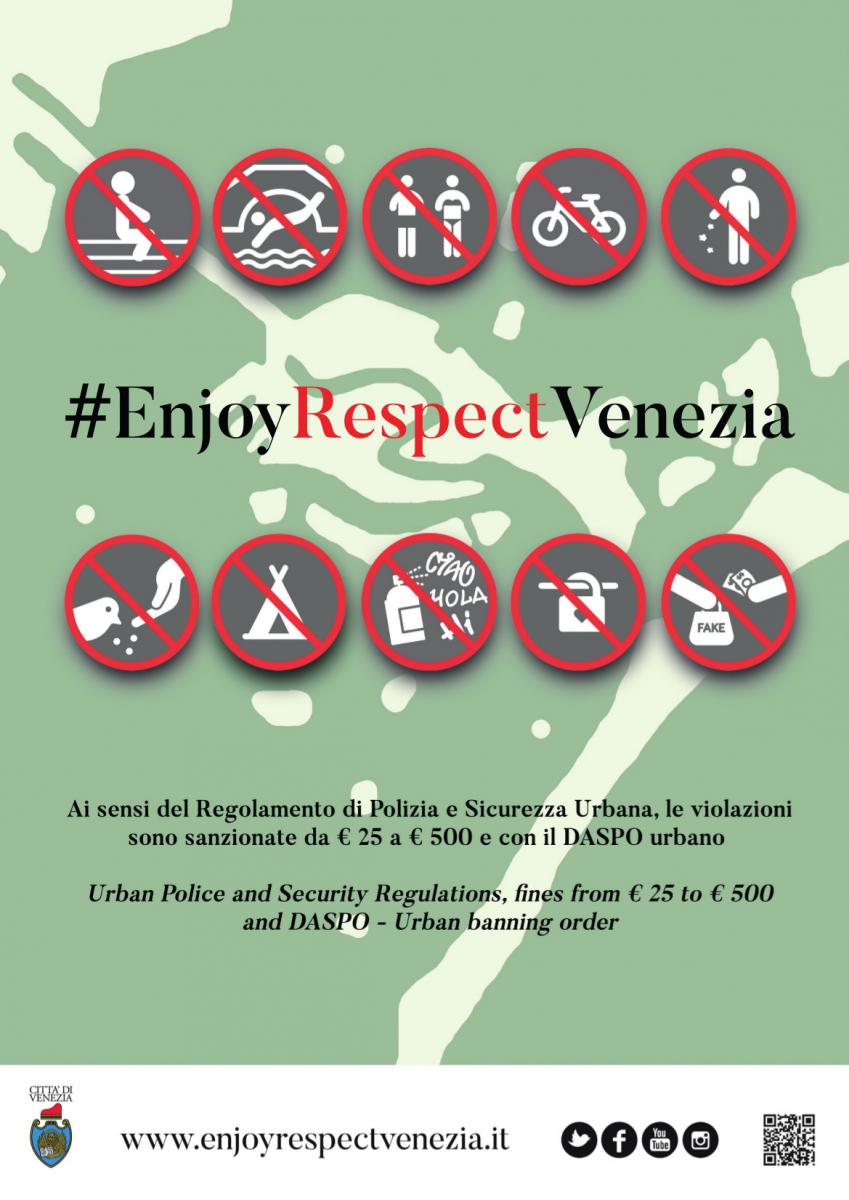
- 1. Discover the hidden treasures of Venice in the least visited places to appreciate Venice’s exceptional beauty.
- 2. Explore the islands in the lagoon and Mainland Venice , participate in events spread throughout the Metropolitan City.
- 3. Taste the local products and typical Venetian cuisine .
- 4. Visit the artisans' workshops and learn about the ancient trades that still exist today in Venice. Choose only original products and do not buy any goods from illegal vendors.
- 5. Book tours with qualified tourist guides able to recount Venice's thousand-year-old history.
- 6. Walk on the right , do not stand at any time on bridges, do not even lead bikes by hand.
- 7. Steps of churches, bridges, wells, monuments and banks of streams, canals etc. are not picnic areas. Please use the public gardens for this necessity. Consult the map .
- 8. St. Mark's Square is a monumental site and excluding pertinent bars and restaurants, it is forbidden to stand at any time in order to consume food or drink.
- 9. Venice is a city of art : it is forbidden to camp, walk about in swimwear, dive and swim. The beaches at Lido and Pellestrina can be easily reached .
- 10. Respect the environment and artistic wealth : do not litter, do not vandalize with graffiti, or padlocks. Do not give food to the pigeons .
- 11. If you are staying in an apartment or flat , please get informed about the garbage recycling collection .
- 12. Plan your trip and choose to visit Venice when it is less crowded . Find out more about Venice entry fee .
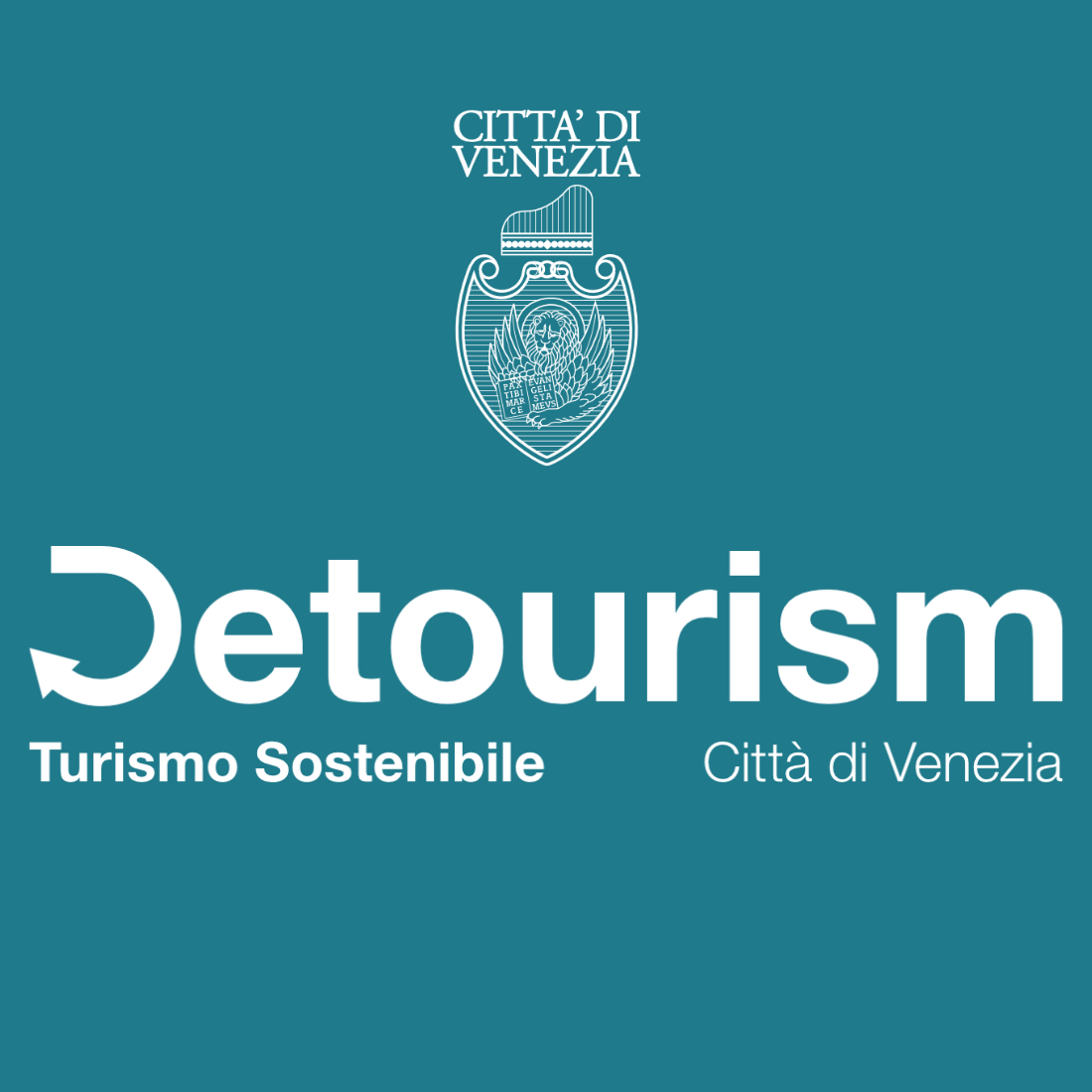
#Detourism suggests authentic experiences, out-of-the-ordinary places and itineraries not only in the city centre of Venice, but also on the lagoon islands and mainland.
These sustainable itineraries lead to unusual glimpses of the city; buildings, gardens, churches and museums unknown to the majority; historic boroughs on the islands, ancient fortresses, natural areas and bicycles paths on the mainland.
The Detourism web-magazine suggests travel ideas to explore an unknown and secret Venice, while the Detourism newsletter collects monthly suggestions on visiting unusual art exhibitions and events. View the newsletter archive
We recommend…

Venice Boat Show
Buy the official merchandising of the Venice Boat Show online
Visit the online shop
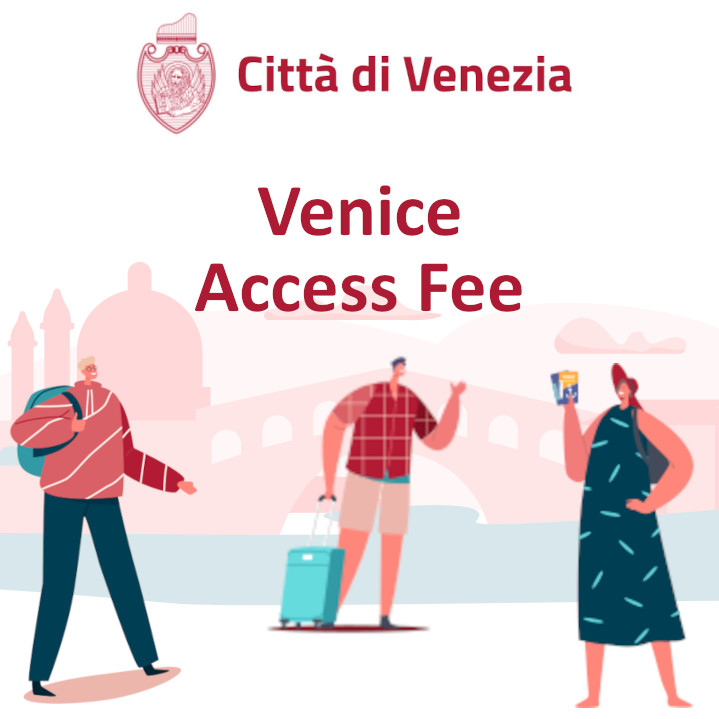
VENICE ACCESS FEE
from April to July 2024, on some specific days ONLY
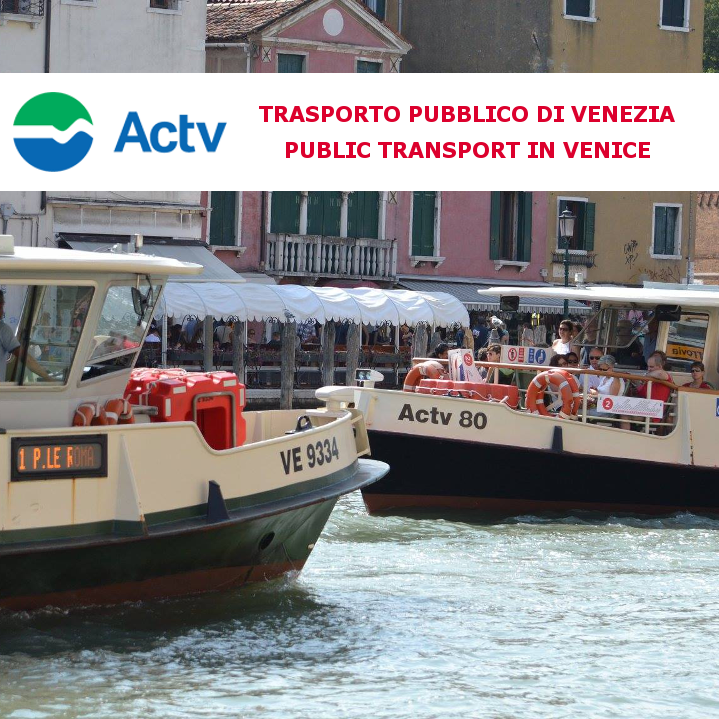
ACTV - PUBLIC TRANSPORT IN VENICE
Public Transport Services (vaporetto and buses in the City of Venice)
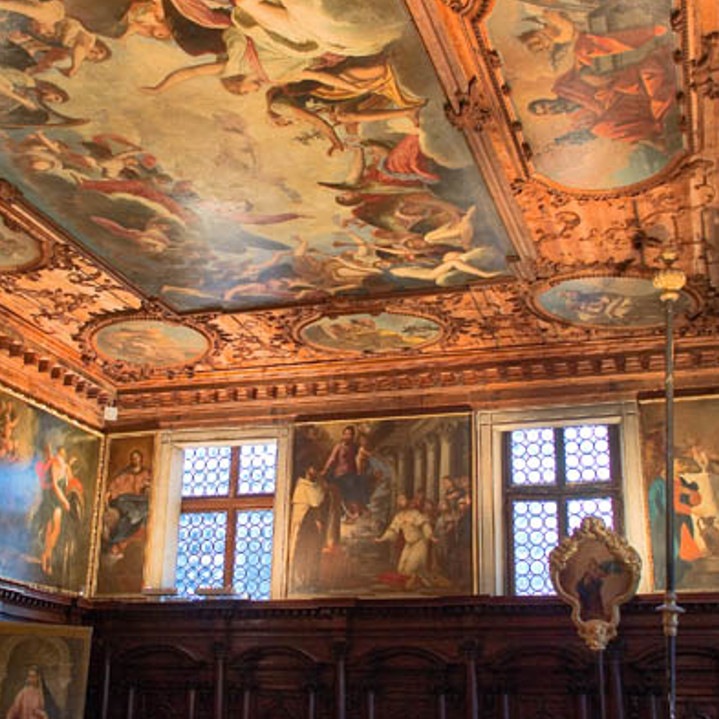
SCUOLA GRANDE DEI CARMINI
It houses numerous works of art including the ceiling with paintings by G.Tiepolo

Sustainable Tourism in Venice: Finding Harmony in the City of Canals
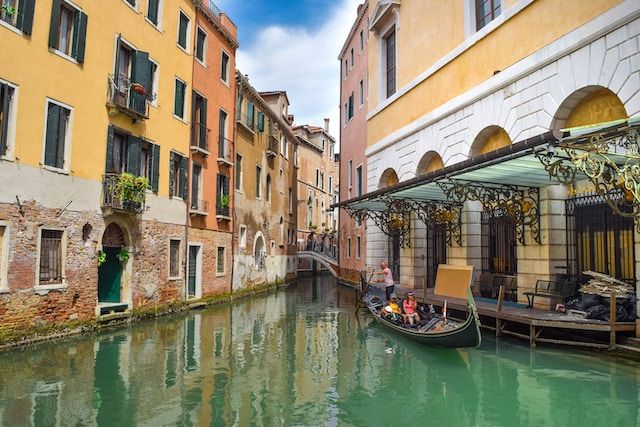
Venice has been attracting millions of visitors every year with its picturesque buildings, winding streets, and enchanting waterways. However, Venice is a fragile city and it is facing a critical challenge: how to preserve its beauty while promoting sustainable tourism .
In this article, we will explore the sustainable issues in Venice, what the municipality is doing to make the city sustainable, and how to visit Venice sustainably.
Sustainable tourism in Venice: let's begin with a definition
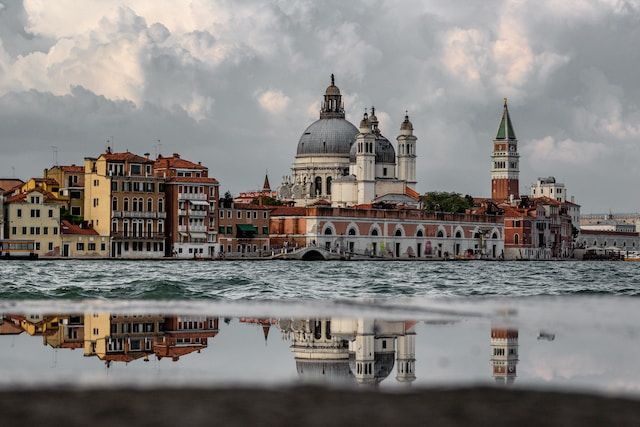
Sustainable tourism refers to a type of tourism that aims to minimize the negative impact of the tourism industry on the environment, local communities, and cultural heritage.
It focuses on preserving natural resources and ecosystems while providing economic benefits to the local community .
Sustainable tourism also aims to promote responsible behavior among tourists and encourage them to adopt sustainable practices.
Sustainable tourism involves several practices such as reducing carbon emissions, conserving natural resources, promoting cultural heritage, and supporting the local economy.
For example, sustainable tourism can involve using renewable energy sources, reducing waste and plastic use, and promoting responsible tourism practices such as respecting local cultures and customs.
The benefits are numerous. It promotes sustainable economic development and provides jobs and income for local communities while preserving the natural environment and cultural heritage. Sustainable tourism also helps to reduce the negative impact of tourism on the environment and ecosystems, which is crucial for the preservation of our planet.
In other words, it is a critical aspect of responsible travel that ensures the long-term sustainability of our planet and communities . By adopting sustainable tourism practices, we can preserve the beauty of our planet and contribute to the well-being of local communities.
Let's now focus on the sustainable tourism in Venice and discover what the city is actually doing to preserve its heritage.
Sustainable Issues in the city
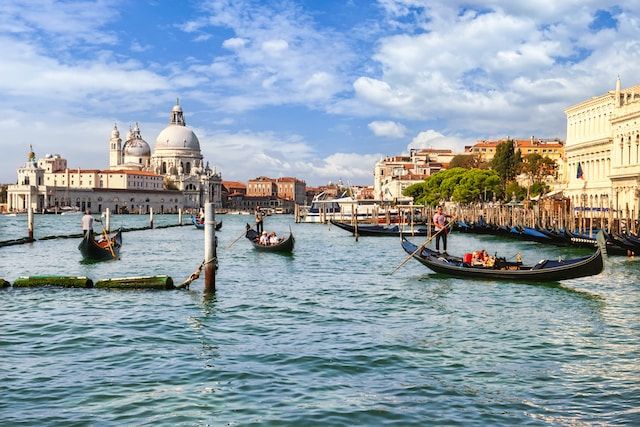
Venice faces several sustainable issues due to its unique location, fragile ecosystem, and the overwhelming number of visitors it receives.
One of the most pressing issues is the impact of mass tourism on the city's fragile infrastructure.
The city's waterways and canals are under constant pressure from the influx of visitors, who often use motorized boats, leading to increased pollution and erosion .
Another issue is the high level of waste generated by tourists, especially during the peak season. The excessive amount of plastic waste, littering, and overflowing trash bins create an eyesore for tourists and locals alike.
Could we say that Venice is a Sustainable City?
Venice, a truly tourism dependent city, is taking several steps to become a sustainable city.
In 2017, for example, the city implemented the "Venice 2030" project , which aims to reduce the environmental impact of tourism while promoting sustainable development.
The project includes measures such as reducing the number of cruise ships, regulating the use of motorboats, and promoting responsible tourism.
The municipality is also investing in renewable energy sources, promoting sustainable mobility, and preserving the city's cultural heritage.
We cannot forget to mention one of the most significant measures introduced in the last years: the ban on large cruise ships in the Venetian Lagoon. The Stop alle Grandi Navi campaign was in fact launched to protest against the negative impact of these ships on the fragile ecosystem and cultural heritage of Venice.
The municipality has also taken steps to regulate the use of motorboats and reduce the number of visitors in the city's historic center.
They are also trying to introduce a tourist ticket system , which would charge tourists for entry into the historical center, with the aim of monitoring daily tourist arrivals and raising funds for the preservation of cultural heritage sites.
These efforts demonstrate the city's commitment to preserving its unique beauty while promoting more sustainable tourism practices .
How to Visit the city Sustainably
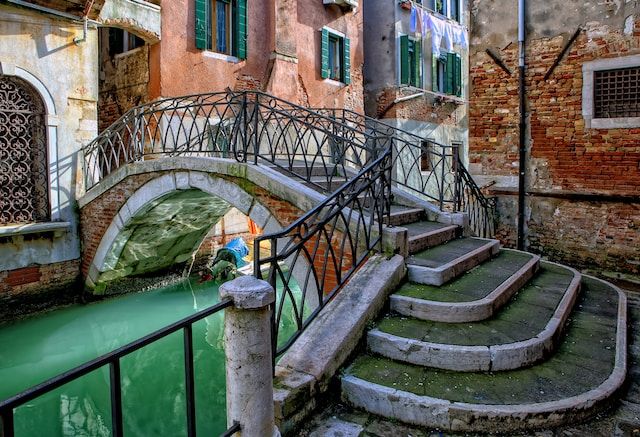
There are several ways to travel around this UNESCO World Heritage site sustainably .
One of the best ways is to use public transportation , such as water buses or the iconic gondolas.
Walking or cycling (where it is possible, like at Lido island) is also a great option to explore the city and its hidden gems.
Choosing eco-friendly accommodations and restaurants that use local and organic products is also an excellent way to support the local economy and reduce the carbon footprint of your visit.
It is also essential to be respectful of the city's cultural heritage and avoid damaging historic buildings or monuments.
Do you know the Detourism Campaign promoted by the municipality?
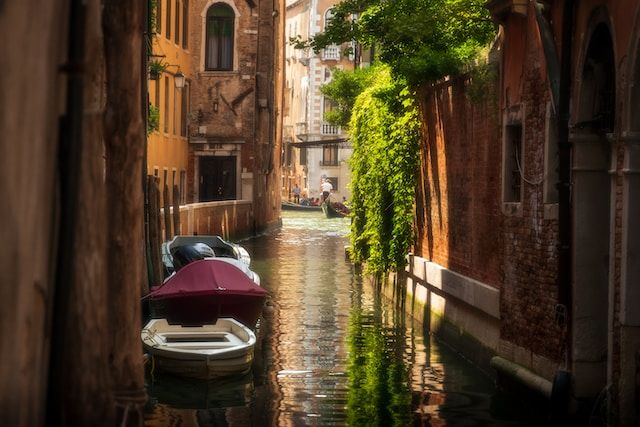
" Detourism " is a movement that encourages travelers to explore off-the-beaten-path destinations and promote sustainable and responsible tourism practices.
This campaign aims to reduce the negative impact of mass tourism on the environment, cultural heritage, and local communities by promoting alternative destinations and sustainable travel practices.
As you have read through the article, Venice has been facing challenges with over tourism for several years, which has led to negative impacts on the environment, cultural heritage, and local communities.
The Detourism Campaign offers an excellent opportunity to promote sustainable and responsible tourism practices in Venice and encourage travelers to discover lesser-known destinations in the region.
The campaign can help reduce the negative impact of mass tourism on the fragile ecosystem of the Venetian Lagoon and preserve the cultural heritage of the city. It encourages travelers to explore alternative destinations, such as the nearby islands, which offer a more authentic and less crowded experience of the region.
Supporting local businesses and choosing sustainable accommodations and tour operators can also help promote responsible tourism practices in Venice!
The campaign is also important because it raises awareness about the impact of mass tourism on the environment and local communities. It encourages travelers to be mindful of their actions and promote sustainable travel practices that benefit both the traveler and the destination.
Overall, the Detourism Campaign is a positive initiative that promotes sustainable tourism practices and encourages travelers to make responsible choices when planning their trips.
In conclusion, Venice is taking important steps towards becoming a sustainable city, but it is also essential for tourists to contribute to this effort by adopting responsible behaviors and choosing sustainable tourism practices.
By visiting Venice sustainably, we can help preserve its unique beauty for generations to come.
Popular tags
Venice 3-Day Sustainable Itinerary and Slow Travel Guide

I may earn income from affiliate links or partnerships in this post. I spend time to curate tours or products that align with my values. Thanks for supporting my work, at no additional cost to you.
Last updated on March 26th, 2022 at 04:49 pm
A re you curious how to spend three or more days in Venice with a slow and sustainable itinerary? Can you imagine visiting one of the most unique and beautiful cities in the world and only staying for less than 20 hours? On top of that, you spend most of your time waiting in line for a crowded tourist attraction? Ultimately at the end of the day, how you visit contributes to the very decline of the beautiful place you’re seeing? Unfortunately, that is how most people spend their time in Venice, Italy. Trying to cram a city as unique as Venice in 20 hours contributes to overcrowding, unsustainable tourism, and poor living conditions for locals. It also decreases the quality of your experience. Venice was meant to be experienced at a slower pace over the course of a 3-day (minimum) itinerary. A slow travel itinerary for Venice immerses you in Venice’s rich culture and history while allowing you to understand the complex modern problems threatening the future of Venice.

Spending 3 or more days in Venice will enable you to get off the beaten path exploring local neighborhoods while supporting small local businesses. Yes, it even allows for time to see the main attractions more sustainably. If you spend even more time in Venice, you’ll also have time to explore more of the remote islands for a unique experience. Whether you have time for a satisfying, sustainable 3-day itinerary for Venice or even more time for a slower travel itinerary, you’ll leave this beautiful destination refreshed and in love with its charm rather than frazzled and stressed.

Before you start planning your multi-day itinerary for Venice, make sure you read my 15 sustainable travel tips for visiting Venice more mindfully . You should implement these tips during your slow travel through Venice for a genuinely sustainable itinerary. A sustainable and slow itinerary for Venice is no longer just an option for the mindful traveler; it is the bare minimum and a must for ALL travelers visiting Venice. Otherwise, Venice will no longer be a place we can visit and enjoy in the future.
What We’re Covering
Day 1: Off-Beat Tour with Local Guide
Day 2: Main Attractions
Day 3: Agricultural Island Tour
Day 4+: Extended Slow Travel
Sustainable Accommodation
Public Transportation
When to Visit
Don’t Forget to Carbon Offset!
Share and Discuss
- Venice was on the brink of collapse from unsustainable tourism
- Locals and tour guides are taking time to reset and rebuild with a focus on sustainable tourism
- It is critical ALL visitors to Venice engage in slow and sustainable tourism
- Doing so ensures Venice is around for generations to come
- You’ll have a more enjoyable experience and leave fulfilled instead of stressed
- Ditch the cruise ships and stay awhile following this slow and sustainable itinerary for Venice
- Make sure to carbon offset and donate to Plastic Free Venice

Day One: Off-Beat Tour with Local Guide
When visiting Venice, you should see much more than San Marco. For this reason, I recommend starting your sustainable itinerary exploring a more local side to the city. This sets the tone of a more mindful trip, away from the crowds, allowing you to see the diversity and charm of the city. The day will focus on hiring a local guide for an off-the-beaten-path tour, followed by some options to suit your tastes, and end with traditional Cicchetti and spritz.

Morning: Private Off-Beat Tour
The best way to start your three-day slow travel itinerary in Venice is with a private or small-group tour led by a local guide committed to sustainability. Doing so helps prevent tourism leakag e by infusing money directly into the local economy. It also creates opportunities for cultural exchange, a pillar of sustainable tourism. Exploring the city with a local guide is the perfect way to find hidden gems, learn about modern life and the threats to Venice. Using your guide as a resource, you can also ask questions aligned with your travel interests to help you plan a multi-day itinerary that you love. For example, we used our guide to ask questions to help us find local breweries, art shops, and the best espresso, allowing us to spend our three days in Venice doing the kinds of things we love for an enjoyable experience.

We booked our private tour with Matteo from When in Venice . He is a former archaeologist who launched a tourism company with his wife. They are both life-long Venetians and entered the tourism industry to be part of the change. When they aren’t providing high-quality, sustainable tours, they are actively working with the local and national government, local businesses, and other tour guides to drive sustainable development in Venice. They offer several tours, including ones focused on food and wine, art, or architecture. The one we chose was the “off-the-beaten-path” tour. The best part about hiring When in Venice is they can customize any of these tours to suit your interests. Matteo crafted the perfect itinerary for us, and we spent a wonderful 4 hours exploring local neighborhoods and the hidden gems of Venice. We got espresso at the coffee shop he frequented while in university. We learned how to spot and identify authentic artisanal craftwork – even popping into some artist’s workshops. We learned about local life as we explored the charming side streets away from the main sights. I can recommend you take their off-the-beaten-path tour, as I think this experience is not often offered by many guides, and you can see some of the more main highlights on your own or with a different guide.

I 1000% recommend When in Venice, but if their tours aren’t your cup of tea, then you can search through a network of guides all committed to sustainable tourism in Venice. All of these guides have taken an oath to maintain the cultural authenticity of Venice and will be great options for your sustainable Venice itinerary.
Afternoon: Choose Your Own Adventure
Shopping, museums, exploring neighborhoods- you choose! But first, Lunch . We started our tour around 9:30 in the morning and finished about 1:30 pm – just in time for lunch. Depending on where you end your tour, ask your guide for a lunch recommendation. Since we are vegetarian and wanted something simple and quick, Matteo suggested Bacaro Risorto . I ordered a cold pasta with veggies and local cheese, and Ganesh got a vegetarian panini. We both ordered several rounds of beer brewed in-house. The servers were friendly and even customized some of our food and chatted with us about their beer. But again, ask your guide for a lunch recommendation that serves local food near where you end your tour. After lunch, you’re on your own to embrace some of the sustainable practices your tour guide bestowed on you. How you spend your afternoon can be somewhat flexible.

Make sure you take breaks throughout the day. Venice has free, and fresh water throughout the city flowing from water fountains. Pause and fill up your reusable waterbottle and take in your sights and surroundings. What can you see? Look at the architecture. What can you smell, feel, and what are you thinking?
This is a great time to shop and pick up a handcrafted souvenir . Avoiding cheap imported souvenirs and investing in the work of an expert craftsperson is one of the best things you can do to support a healthy tourism industry in Venice. We loved our souvenir from Wood in Venice . Each piece of wood tells the story of the Venetian poles you see in the water. The solo striped or plain wooden poles, called Bricola, are used for docking and navigation. Their story starts in the forests of Germany before making their way to the Venetian canals, only to be devoured by clams. I loved this story because the artist engages in the ultimate upcycling, repurposing wood scraps and Murano glass creating new life in beautiful pieces that honor Venice. Other suggestions for great places to shop are around the Calle San Bernardo and Calle Capperller in Dorsoduro, where you’ll find gems like Perla Madre Designs for hand-blown glass beads created by women and Ca’Macana for hand-made traditional Venetian masks. Process Collettivo sells creations from women at the local prison, which helps them develop practical skills. Another area for shopping is a store called Paperowl for sustainable paper jewelry and crafts and the surrounding area.

If you are not interested in shopping, you can explore some of the neighborhoods you missed during your private tour. We will explore Castello on day 2, so save that for later. If you didn’t see Cannaregio, Dorsoduro, or Giudecca, I suggest one of these as a starting point, depending on where your tour ended.
Cannaregio is home to the Jewish Ghetto. Here, some highlights include the ‘golden house’ and Campo di Ghetto Nuovo and Vecchio, filled with plenty of churches, synagogues, and exciting architecture . I recommend visiting the Museo Ebraico to learn about the Jewish history in the region.
Giudecca , which is technically part of Dosorduro, has a feel of its own in a quiet residential neighborhood and is the perfect place to lose the crowds. Artisti Artigiani del Chiostro, is a former monastery turned artist compound, making it another great spot to pick up an authentic souvenir. Chiesa del Santissmo is a catholic church built to celebrate the end of the plague. The Fortuny factory and museum are a testament to hand-made fabrics and a reminder of the importance of supporting such art. Other than that, the highlight here is to get lost.

We will be ending our day with an evening in D orsoduro proper. Suppose you want to spend the afternoon exploring this area before an Aperitivo. In that case, some of the highlights here are Campo Santa Margherita for farmers markets and espresso, the floating produce market, Ponte dei Pugni, S. Maria’s Basilica, and unique art vendors.
You can also spend your afternoon visiting some of Venice’s numerous museums. I found St. Mark’s and Doge’s Palace scratched my museum itch just fine, but if you are a museum fanatic, some notable ones to see are the Peggy Guggenheim, Ca’ Rezzonico, and the aforementioned Jewish history museum.

No matter how you chose to spend your day, make your way down to Dosorduro; specifically, the lower part near the gondola shed toward the evening. I suggest a combination of walking and catching the public transportation ferries for a scenic boat ride. But, remember locals use public transportation to commute for daily activities, and this is not your personal sightseeing tour.
Evening: Cicchetti and Spritz
It is an important part of sustainable travel in Venice to experience the local food and drink. Spritz, or a drink that is cut with sparkling water, was created in the Venetian region, and it is typical to get an Aperol or other type of spritz in the later afternoon. It is often paired with Cicchetti, which is a Venetian style tapas. Cicchetti is small pieces of bread topped with nibbles such as cheese, olives, hummus, fish, or cured meats. You’ll find places all over Venice serving Spritz and Cicchetti, but this evening we will head to an authentic tavern in Dosorduro for a great evening of food and drink.

If you arrive in Dosorduro by ferry at Zattere stop, then don’t miss the gondola boatyard . This 17th-century boatyard is where the famous Venetian gondolas are built and restored. It is an excellent place for a photo and to appreciate the history and importance of the gondolas in Venice. While most locals get around in motorboats, the gondolas are still used as taxis, for tours, and Venetian rowing practice and competitions. Don’t worry, we will take a gondola ride tomorrow!

After viewing the boatyard it is time for Cicchetti and Spritz at Cantine del Vino gia Schiavi Enoteca Schiavi . This cozy and place is an authentic Venetian stop for late afternoon cocktails and snacks. Bottles of wine and spirits fill dark wooden shelves reaching from the floor to ceiling, giving the vibe of an old study. The first thing you’ll notice is there are no seats or tables. In Venice, it is customary to stand while eating and drinking. So, embrace the Venetian way of doing things – order at the bar and get comfortable standing.
I recommend selecting 3-5 vegetarian Cicchetti to start, pairing them with a traditional Aperol Spritz. The prices here are so cheap you can easily spend a few hours enjoying spritz and Cicchetti. If the restaurant is full they will let you drink and eat just outside the shop. However, if you choose to do this, your drinks will be served in plastic cups, so if you brought your to-go cup, this is the time to pull it out and ask for a drink made in your cup. A local left a helpful reminder on this post to not take your drinks to go and do a Spritz crawl of sorts or take drinks out to sit on steps or along the canals. Be mindful and respectful and only take the drinks just outside the restaurant in their allotted space. They also suggested trying a Sprissito, which I can also recommend. There are a variety of spritz style drinks, so make sure you try something other than the Aperol Spritz.

Enoteca Schiavi is a great place to end your day, especially if you’ve been walking all day since the start of your tour. You can head back to your accommodation to decompress, grab some dinner if you are still hungry, or catch an early night, as we will have an early day again tomorrow.
If you’re a spring chicken and still have the energy, you can enjoy the university vibe of Dorsoduro and see what the youths of Venice are doing. Caffe Rosso is a great local spot for a nightcap in the heart of the university district. It is also perfect for an early morning espresso to start day two.
In order to develop Venice, many natural wetland and seagrass ecosystems were destroyed, urbanized, or alterned. By doing this, the Venetian Lagoon lost its ability to naturally prevent flooding. There are ongoing efforts to restore these ecosystems as Venice experiences catastrophic flooding , which destroys historic buildings and modern day homes. Banning cruise ships from entering the lagoon allows for this restoriation to take place without contributing to flooding stressing the region.
Day Two: The ‘Highlights’ of Venice

Just because they aren’t the main focus on your sustainable three-day itinerary doesn’t mean the highlights of Venice aren’t worth seeing. In fact, St. Mark’s Basilica and Doge’s Palace add crucial historical context to your itinerary in addition to learning about modern and local life on day 1. Don’t worry, though, because even after seeing the touristy highlights, we will, of course, include some local hidden gems for a well-rounded day.
This day should ideally be a weekday or at least part of an off-season itinerary. If you need to adjust your itinerary to ensure this lands on a weekday, please do so. Your experience will be much more enjoyable, and you can save hours wasted in line. If you do visit Venice in the summer or peak season, honestly I suggest skipping St. Mark’s and Doge’s Palace. Will you still have a great, time, absolutely. In fact, spending your holiday enjoying local highlights rather than waiting in line is critical to enjoying your stay. There is plenty to do and see in Venice and trust me, it is ok to skip these highlights .

Morning: Guided Tour of St. Mark’s and Doge’s Palace
It is, again, critical to hire a local guide to take you to see St. Mark’s and Doge’s Palace continuing the theme of supporting the local economy. In addition, our guide gave us significant local context about both locations that no audio guide or self-guided tour could offer. You should book your small group guided tour in English ahead of time. We met at 10 am at the San Marco ferry terminal and gathered with a few others before heading into St. Mark’s Basilica. Our tickets included access to the terrace and the museum, which in my opinion should not be missed. Our guide shared stories of how the flooding and unsustainable tourism impacted the church and his livelihood. Hearing these stories firsthand alongside a mix of modern local perspectives with technical history about the Venetians was wonderful.

After visiting St. Mark’s, our small tour group headed over to Doge’s Palace, where we got to skip the line. We had plenty of time to take photos and explore the gaudy and lavish rooms of the Doge’s Palace. We lucked out that our guide was a fan of renaissance painting and art and touched on everything from the colors used and the historical context depicted in each painting and room. Our tour took us over the Bridge of Sighs into the prisons before we parted ways.
Afternoon: Castello and Gondola Ride
Our tour was just over 3 hours, so we were on our own for lunch again. Matteo from our private guided tour had recommended Bar All’Arco , near the Rialto market. While it is a Cicchetti bar, I am sure, they say there is no such thing as eating too much Cicchetti in Venice. Bar All’Arco is located in a bit of a touristy area, so one might think this isn’t a great option, but it is a place frequented by locals for their authentic Cicchetti. It gets a sustainability stamp of approval for serving local seafood. If you are a vegetarian or looking for a more sophisticated sit-down lunch, then Ai Mercanti is an intimate slow food experience that requires reservations. They serve vegetarian (not vegan) food sourced from local farms along with local-caught seafood. For organic vegans, you can eat at La Tecia Vegana .
What you eat in Venice matters. Whether you are vegetarian or eat seafood, it is imperative to eat fish sustainably caught in the lagoon and produce sourced from Venice’s gardens. When the unsustainable tourism boom hit Venice, many restaurants began to cater to cruise ship clientele and began importing seafood and produce, hurting local fishing and agricultural industries. This, in turn, pushed Venice to continue relying on unsustainable tourism instead of a well-rounded economy while increasing the carbon footprint of the food you eat.

After lunch , take some time to explore the Rialto Market and Bridge before heading into Castello. The Rialto Bridge is ultra touristy, so while the views are great, I don’t recommend spending a lot of time here and do not buy any of the items for sale. Enjoy the view and drop into the Rialto market. Here you can see firsthand the effects of unsustainable tourism on the local produce and fishing industry. The fish market was once full of local stalls and vendors selling their seafood, but the stalls have dwindled to just a few fishers selling their goods over time.
Castello was one of our favorite places to wander, and we found it to be the least crowded and touristy area of our stay. I can recommend you just take some time to let your feet carry you down whatever alleyway strikes your fancy. Enjoy the fresh laundry blowing in the wind and locals saying hello to each other while out and about. I recommend stopping at Libreria Acqua Alta , which is a charming book store. Books fill vintage boats and bathtubs in this quirky store with canal front real estate. Enjoy petting the cats and picking up a used book or local postcard.

As you make your way down to the Venetian Arsena l , take time to enjoy the architecture, unique bridges, and museums. The Venetian Arsenal is a shipyard dating back to 1100 and it is an excellent place for photos and to learn about some of Venice’s powerful naval history.
If you still have a lot of energy, take the time to enjoy Venice’s gardens, including Giardino della Marinaressa and Bienalle . Visiting parks is a great way to enjoy a bit of nature and stay grounded while exploring Venice.
Evening: Gondola Ride and Local Dinner
For dinner, we are going to work our way back into the heart of Castello. To get there, it is time to take a famous gondola ride ! When we talked to Matteo, about whether it was ethical to take a gondola ride, he said, “Of course! Venice was meant to be seen from the water. The entrance to the city and the many historical buildings were designed to be seen from a gondola along the canals. You are doing yourself and our city a disservice if you don’t ride a gondola!” He did have one tip for us though, don’t ride the gondola near the San Marco or Rialto Bridge. Getting into the more local neighborhoods means it is less crowded, and you get to see some hidden gems. So, Castello is a great place to catch a gondola.

Note: if you prefer to do a night or evening gondola ride, it is more expensive, and you can catch one after dinner and head to our restaurant on foot or public transportation.
Dinner is at a place called Local Venice . The curators of this restaurant are committed to sustainability and local food. ALL their food is locally sourced, which supports the local economy and reduces the carbon footprint of your food. It is highly recommended you make a reservation and prepare to have your mind blown!
After dinner, you can head home to rest and relax or catch an evening gondola if you opted for that option. For those looking for another nightcap in the form of a Spritz, I recommend heading back into the San Polo region around S. Maria, where you’ll find great Spritz at Adagio or La Bottiglia .
Day Three: Islands and Agri-Tourism
Day three is about getting out of Venice proper and seeing some of the islands and surrounding areas. While Murano and Burano are trendy destinations, I will encourage you once again to get off the beaten path and see a unique Venetian island, Sant’Erasmo . (But, there is time for Murano, if you’re up for it!)
Morning: Agricultural Bike and Honey Tasting
For day three of our sustainable multi-day Venice itinerary, you’ll need to book a guided tour to Sant’Erasmo. As you’ve been following my three-day sustainable itinerary of Venice, you’ll have eaten plenty of local produce and food. Much of this food comes from the gardens on Sant’Erasmo, including those fabulous purple artichokes you see. The area is also known for its sustainable beekeeping, which keeps the gardens pollinated. So, what better way to explore Sant’Erasmo island than a bike tour of the gardens paired with a honey tasting? With a local guide, you’ll spend the day exploring the farms of Sant’Erasmo, supporting and learning about rural agriculture and the importance of local food in Venice.

Late Afternoon and Evening: Murano
After your day on a bike, you’ll surely be hungry. Make sure to stop by the Experientia food truck on Sant’Erasmo for a foodie experience. Sit outside and enjoy casual but quality eats at a slow food pace.
If you have the energy and want to make the most of your time in Venice, you can catch the ferry back to the main island via Murano if you want. Murano is known for its long history of glassmaking. Take time to learn about the trade by visiting the museum and popping in the shops throughout the island. If you purchase something, make sure you look for the artisan seal of quality craft to avoid tourist traps.

For dinner, you can visit Osteria Acquastanca on Murano. This standing-room-only restaurant gets a sustainable seafood approval rating serving up lagoon caught seafood for fresh and low carbon food. If you are a vegetarian, there are plenty of other pizza and pasta joints on Murano with veggie options.
After dinner, you will likely be wiped out and ready to head back to your sustainable accommodation to call it a night.
Day Four +: Extended Slow Travel in Venice
If you have more time in Venice, good for you! You are leaps and bounds ahead of most tourists that speed through the city. While we didn’t stay longer than three days, our local guides gave us some great starting points I can pass along for those engaging in long and slower travel.

Take time to visit any of the islands you missed, including Burano and Torcello. Visit any neighborhoods you missed, or return to your favorite to get to know the region more intimately. Furthermore, if we had more time, we would have liked to see Lido. Biking down Lido is a great experience, according to our guide. Hopefully, when we return to the area, we would like to start Jesolo and take the local ferry system down to Chioggia, biking along the way, stopping in Venice only for this three-day sustainable itinerary. Doing this, you could spend 5-7 days slow traveling down the lagoon with bikes and camping or staying at sustainable eco-accommodation along the way.
Where to Stay: Sustainable and Eco Accommodation in Venice
Speaking of sustainable accommodation: Where should you stay in Venice? While my 15 tips to visiting Venice more mindfully are a great primer to help you identify sustainable accommodation while avoiding problematic situations, here are some great tips for places to stay in Venice.
Sustainable Hotels in Venice
For those looking for a bit of a luxurious stay in Venice, without compromising on sustainability I can recommend Corte di Gabriela . They have a strong commitment to maintaining the local authenticity of Venice, protecting the environment, and the local community. As you search for accommodation in Venice proper make sure to look for certifications read their about page. If they don’t have a clear statement prioritizing cultural and environmental sustainability them you better look for an alternative.
Camping Spots in Venice
If you’ve been following along with our Italian campervan adventures then you’ll know we stayed in a slow travel Venice certified campsite just outside of Venice called San Giuliano Venice . This was definitely a basic campsite, but it was an ethical spot to park for several nights. There was really nothing to do at camp, so we spent most of our time in Venice. However, I can recommend it as a sustainable option for those camping or even on a strict budget as it was quite cheap. If you stay outside of Venice you need to consider that as these outer regions develop locals displaced from Venice are now once again being displaced by Airbnb and uncertified cheap hotels.

Eco Accommodation and Agri-accommodation in Venice
It is no secret that I am an advocate for agricultural tourism. If you want to embrace a slow travel itinerary in the region and stay away from the hustle and bustle of Venice, I can recommend you look on Eco Bnb for a relaxing place in the countryside to help support rural economies during your multi-day sustainable Venice itinerary.
View this post on Instagram A post shared by Susanna • Sustainable Travel (@curiositysaves.travel)
Public Transportation and Getting Around the City
Since we stayed outside of Venice at the San Giulian campsite, we had to commute into the Venice city center. It was very important for us to realize we were sharing transportation with locals commuting and were respectful of their space and commute. I said this before and I’ll say it again, locals use public transportation and it is important to not treat the boat rides, trams, and busses as a personal tour.

We were able to buy a handful of 24 Venice Transportation cards from our campsite, but you can get these at any info booth, tourist site, or transportation hub. Every time we hopped on a ferry or caught the tram back to camp, we would pull out our cards to scan.

I certainly recommend catching public transportation once during your stay for the experience, and if you are staying outside of Venice you’ll need it to commute. But, every time you take a ferry or boat you are increasing your carbon footprint, so walk when you can, and catch a human-powered gondola as much as you like. Using taxi gondolas as your transportation puts money in the pockets of local gondoliers and reduces your carbon footprint. Win-win!
I do not recommend visiting Venice in the summer or peak holiday season in July and August. Most people I know that enjoyed their stay in Venice visited during the winter or extreme shoulder seasons. Furthermore, I can recommend visiting mid-week rather than the weekend. Anything you can do to skip crowds will make your stay more enjoyable. The best time to visit in my opinion would be April-May or late September-November.
Carbon Offset
Don’t forget to carbon offset your flights, drive, or trip to Venice. While carbon offsetting is not a solution for our environmental crisis it is necessary for every trip we take. I ALSO recommend donating to a local environmental non-profit such as Plastic Free Venice for an even bigger impact.
As much as I love a spontaneous trip, a sustainable and slow multi-day itinerary for Venice is a place that requires both strategic planning and the spontaneous ability to take things slow and discover them as you go. I know this sounds contradictory, but it is important to look up and start sustainable and ethical restaurants and book eco-accommodation and local guides ahead of time. Beyond that, allow yourself the leisure and flexibility to just get lost and enjoy both the long history of the region and modern-day life. By doing this you’ll decrease the pressure of unsustainable tourism on Venice and enjoy your stay.
- Have you visited Venice? How long did you stay? Could you have stayed longer and what did you miss out on by not engaging in slow and sustainable tourism in Venice?
- Are you also someone who vowed to never visit Venice? What is something you can adopt in order to see this beautiful place without contributing to harmful behaviors?
- What is something you’re looking forward to the most during your 3-day itinerary for Venice?
View this post on Instagram A post shared by Susanna • Sustainable Travel (@curiositysaves.travel)
Spread the Curiosity
Make sure you pin this post, so more people can plan a 3-day slow and sustainable itinerary to Venice, Italy

About the Author: Susanna Kelly-Shankar
Related Posts

22 Sustainable Beach Tips to Plan an Eco-friendly Beach Trip

Impacts of Beach and Coastal Tourism – Sustainable Beach Vacations

Strasbourg Christmas Market 2023 Sustainable Guide
30 comments.
I have never been to Venice but would love to go. I actually had a planned trip last year which has sadly been cancelled, and I have yet to reschedule. Hope to visit soon and I’ll be sure to keep this well detailed post handy.
I hope you are able to reschedule and see Venice soon!
I always get so sad seeing the cruise ships coming into Venice. It’s a much better idea to explore the city in a slow and sustainable way because there are so many beautiful sites in Venice to see!
Great post! I love Venice and hope to return later in the year. Will definitely follow your advice and hure a local guide – being pretty good with churches and which art hangs where, I would love to see where Venice is really off the beaten path. Also seeking out film locations can be fun. I want to do a “Don’t Look Now” walk next time, and “Wings of the Dove ” and “Death in Venice” feature locations that are off the main routes.
That is a great way to get off the beaten path in Venice – by seeing some of the more hidden locations that are used as filming locations. Great idea! I always say that sustainable travel can align with your interests and you just have to find that interest and niche.
Any day in Venice is an awesome day. I love the idea of the floating farmer’s market! My family and I loved exploring Venice and then on to Murano and Burano. Did a walking tour and loved it.
I totally agree, any day in Venice is a great day. So, glad you did a walking tour and loved it – we loved our guided walking tour as well.
I have been to Italy but unfortunately I haven’t been to Venice yet. Definitely saving this for my next trip because I will be making Venice a stop on the itinerary!
I hope you are able to visit Italy sooner than later and slow travel through Venice and the surrounding region.
After reading this entire post, my believe is that the author is well-intentioned, and makes some very good recommendations for first time travelers to the lagoon. Taking a local guide is always a wise choice if one wishes to get off the beaten paths and into the heart of the sestiere. That said, as a longtime resident of Venice, I feel compelled to point out a couple of things that I hope will be received as a bit of constructive criticism. First, there seems to be a bit of a disconnect in suggesting that a cicchetti crawl or a sprissetto can be a portable or ‘to go’ experience. The entire point is to socialize in the atmosphere of the bar and the character of the locale with friends while enjoying one another’s company while having a drink and a snack in Venetian style. Not only is eating and drinking while walking or (even worse) sitting alongside a canal or monument a bruttissima figura (huge faux pas) in Venice, but the very idea of taking a plastic cup or any kind of ‘take away’ drink or food (with the possible and exception of water) contrary to our customs and norms as Venetians, but such comportment runs counter as well to the author’s stated intent of promoting ‘slow’ or sustainable tourism. While much of the information contained in this post will be helpful for visitors, I’d hazard to point out that when ordering a Spritz (Spriss or sprissetto in dialect) it is very much in keeping with local color and style to choose Select instead of Aperol or Campari. Why? Because since 1926, Select has been made in Venezia by Pilla, and it makes a delicious and very Venetian Spriss. Just tell the barista you’d like a Spritz col Select (pronounced SELL-ect with the emphasis on the first syllable); you wont be disappointed. Other tips: Please do not picnic or walk with food or alcohol in Venice. When visiting, please do savor all that it has to offer, but respect Venice and enjoy our unique city as it is meant to be enjoyed. Pax tibi.
Hi Magnas, thanks for your opinion and feedback, it was well-received! A great tip to order a Sprissito, thank you. We were able to try a variety of spritz during our stay and loved all of them. I do agree with you that everyone should try a sprissito! I hope you were able to read throughout my article where I encourage people to do as the Venetians do and get comfortable standing and mingling. For me, this was an important part of visiting Venice. I certainly did not mean to recommend anyone do a spritz crawl or even to take them to-go far from the bar. My meaning was rather that this one spot might be busy, and if so, they were letting people take them just outside their shop. If anyone chose to do that I was hoping to help them reduce their plastic but suggesting they always have their own cup ready to go, but that wasn’t trying to promoting the idea of walking around with a to-go cup. I hope I was able to clarify my meaning and re-worded it a bit. Thank you so much for sharing, I really appreciate it.
Hi Susanna, I appreciate your observations and your enthusiasm for Venice is wonderful. I may have misconstrued what you meant. It’s just that we are a paradoxical bunch, we Venetians; we lament over-tourism (rightly, as it is having a deleterious effect on the character, spirit, and physical infrastructure of our home. On the other hand, we require tourism to survive, so we are developing, or rather, attempting to develop, implement, and experiment with new concepts for slow, sustainable tourism. Let me be clear: I loved your post and enthusiasm, I just wanted to clarify that Venice is fragile, and we all must bear this in mind, whether we are tourists or residents. Keep up the great work, and enjoy all your travels!
Great post. I love Venice & the last time I was there it was November. There were far fewer tourists. We had sunshine every day although it was very cold. I would thoroughly recommend going outside peak season.
I definitely agree. We only went around the summer months as they had very few tourists after recently opening back up for the pandemic. Otherwise we definitely would have visited during winter.
I have been to Venice twice, one with school as a teenager and one with a local. I loved it both time but I know I would love to visit again! Thanks for sharing sustainable tips about how to visit this places= without wasting its beauty!
Thanks for reading – that is so amazing you go to go there for school, and the visit again with a local!
I hired a different local guide on all 3 days of my visit for the off-the-beat tours. It was the best part of my visit to Venice. They really revealed their city to me.
That is so great that you were able to hire so many local guides. We basically did the same and had a different local guide for each of the days. We learned so much about Venice – past, present and the future.
I love how you approach sustainable travel in all of your trips. It’s something that I try to do as well so I really enjoy reading your posts. It’s good to know that they have fresh running water throughout the city so you can fill up without buying plastic water bottles!
Thanks so much, Krista, and I always notice the mindful approach in your content too! I love that fresh, and free local water. Munich – my home city does such a bad job with that, so I am always blown away when cities have refill stations!
I think this is the first time I am seeing crowd-free Venice streets and canals and I love it. There is always news about flooding in Venice and how it is on the brink of sinking. I am so happy to hear that sustainable tourism efforts are being made and accepted. Loved reading this sustainable itinerary.
We really lucked out being able to experience Venice in a way most people can not. Our guide kept saying he would love to have Venice remain a less crowded, but with higher quality visitors.
I love seeing this! Venice is so different when you slow down and dig a little deeper. Just getting away from the main tourist spots (San Marco and Rialto in particular!) provides a whole different experience. I loved getting up super early, when it’s just you and the city and maybe a few pigeons!
Unfortunately, we never managed to explore super early since we were camping outside of the city, but we had hardly any tourists as we visited just shortly after they opened. I do love seeing most cities early in the morning though – they are so peaceful and I imagine Venice is just beautiful at sunrise.
Good article in general with some good ideas on traveling slow and supporting the local economy as much as possible. I do have to take a point about the Rialto. Most of the stores on the bridge itself are nice little shops and sell mostly Italian goods. We purchased some wonderful red coral horns and chains at Eredi di Jovan right on the bridge. If you want to support local craftsmanship, this is one of those places in the Middle of the “ultra touristy” area
Hi, Angelo, thank you so much for the recommendation. I looked at their online shop and love that it is a local family business featuring handmade items – exactly the things I love to support when traveling sustainably in Venice. I will look at adding this to my guide. Thanks for reading and commenting!
Thank you for informing me of the money you’ll receive. I have a suggestion: stay in the NOW with NO itinerary. Slow=leave no trace. Carry your OWN garbage out; you’ll have less “garbage” if your responsible for your own garbage. Learn to say thank you, hello, good day, & good night in Italian. ALWAYS leave a little lagniappe (a little something extra), for the people in the service sector. And, don’t go to a restaurant if you can’t be kind. Stay safe, keep calm, and be well. v
Being in the NOW in Venice is a great way to visit. I have found that knowing a buongiorno, buonasera (for after lunch and into the evening, and quanta costa or quant’è, goes a long way. My only caution is leaving lagniappe at a place where servizio is already included could be taken as a slight or an insult. Most important to know if you plan on stopping back – you could get a very cold reception the next time.
Wonderful guide, thanks!
Venice is one of my very favorite cities in the world and it breaks my heart to see how much it has suffered from the massive cruise ships and overtourism.
This is a brilliant guide that I’ll definitely be using for my next trip there!
Leave A Comment Cancel reply
This site uses Akismet to reduce spam. Learn how your comment data is processed .
Undertourism
Exploring venice's hidden delights with sustainable travel tips.
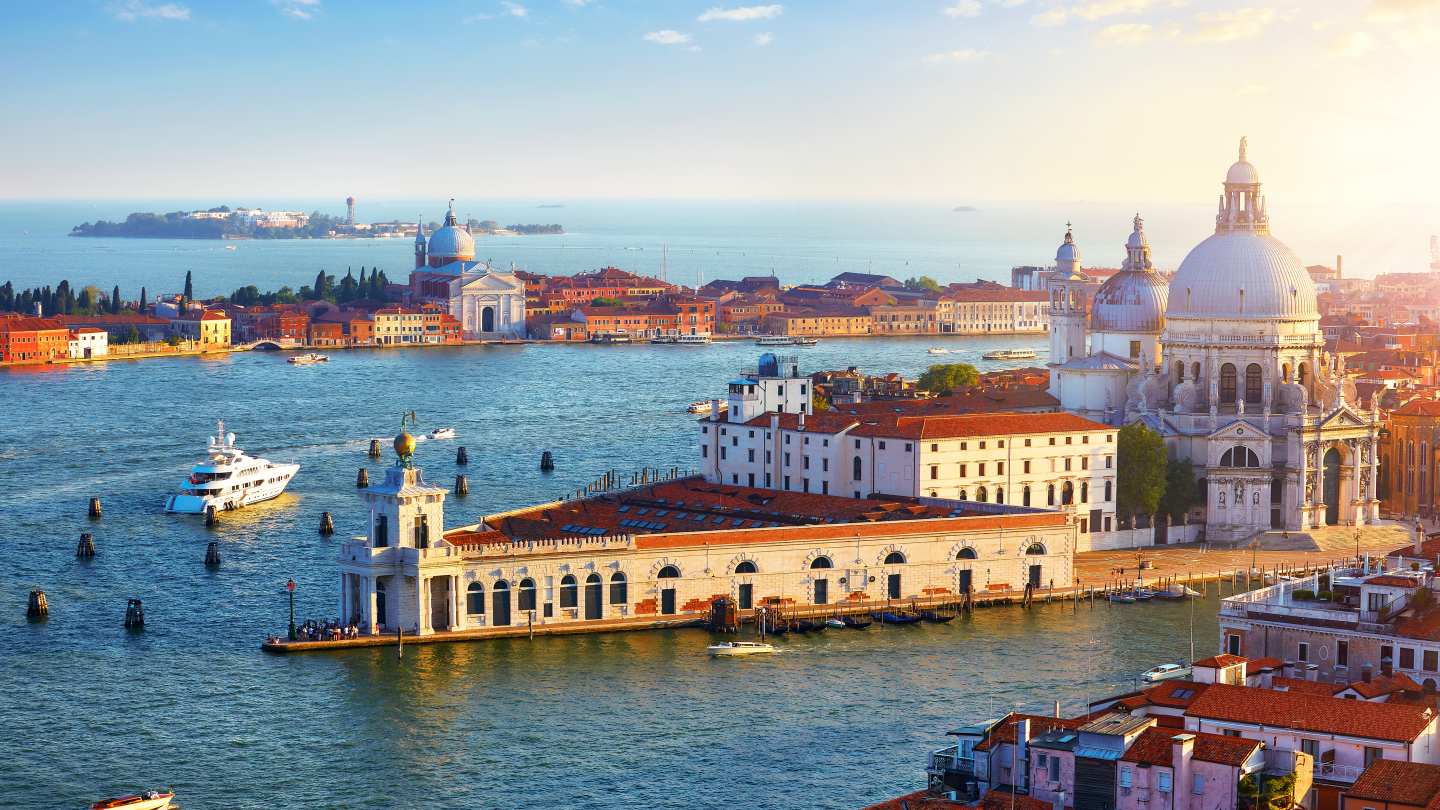
Venice and its lagoon are an unparalleled treasure of the Italian landscape. The city, an ancient maritime hub and cultural crossroads, is renowned for its unique beauty and over a thousand year history. The famous canals, elegant gondolas and sumptuous palaces create an atmosphere beyond compare. The lagoon itself is a precious ecosystem that has withstood the test of time, hosting unique flora and fauna.
Venice also boasts a rich and diverse culinary tradition . From fresh seafood dishes directly sourced from the lagoon waters to local specialties like squid ink risotto or cicchetti (small Venetian appetizers).
Overtourism: Impacts and Challenges
However, in recent years, the exponential influx of tourists has led to overcrowding, stressed natural resources and negatively impacted the environment. Like other Italian cities, Venice has suffered from congestion and price hikes, putting a strain on its beauty and authenticity . The Flood of 1966 initiated a demographic decline, making Mestre (on the mainland) more populous over the century. Venice's unquestionable tourist attraction has led to overtourism, making it difficult to quantify the millions of annual visitors, including numerous day-trippers and cruise passengers. Striking a balance between tourism, the local community and the environment has become crucial. On crowded days, some areas become nearly inaccessible, affecting transportation and food costs. For a sustainable Venice , rethinking tourism is essential. Longer stays facilitate better integration and reduce the impact of tourist influx, mitigating the 'hit-and-run' effect. There are ways to enjoy Venice and its lagoon more sustainably while avoiding hordes of tourists. One of the main suggestions is to explore the city outside peak hours when streets and monuments are less crowded. Additionally, embracing lesser-visited areas like the lagoon islands (such as Burano or Torcello) can offer an authentic perspective of Venetian life without the chaos of tourists. To help preserve Venice's beauty, it's crucial to support local activities, dine at Venetian family-run restaurants, and purchase local artisanal products. Exploring the lagoon through eco-friendly tours or biking excursions can be a sustainable way to fully appreciate the beauty of this region without compromising environmental integrity.
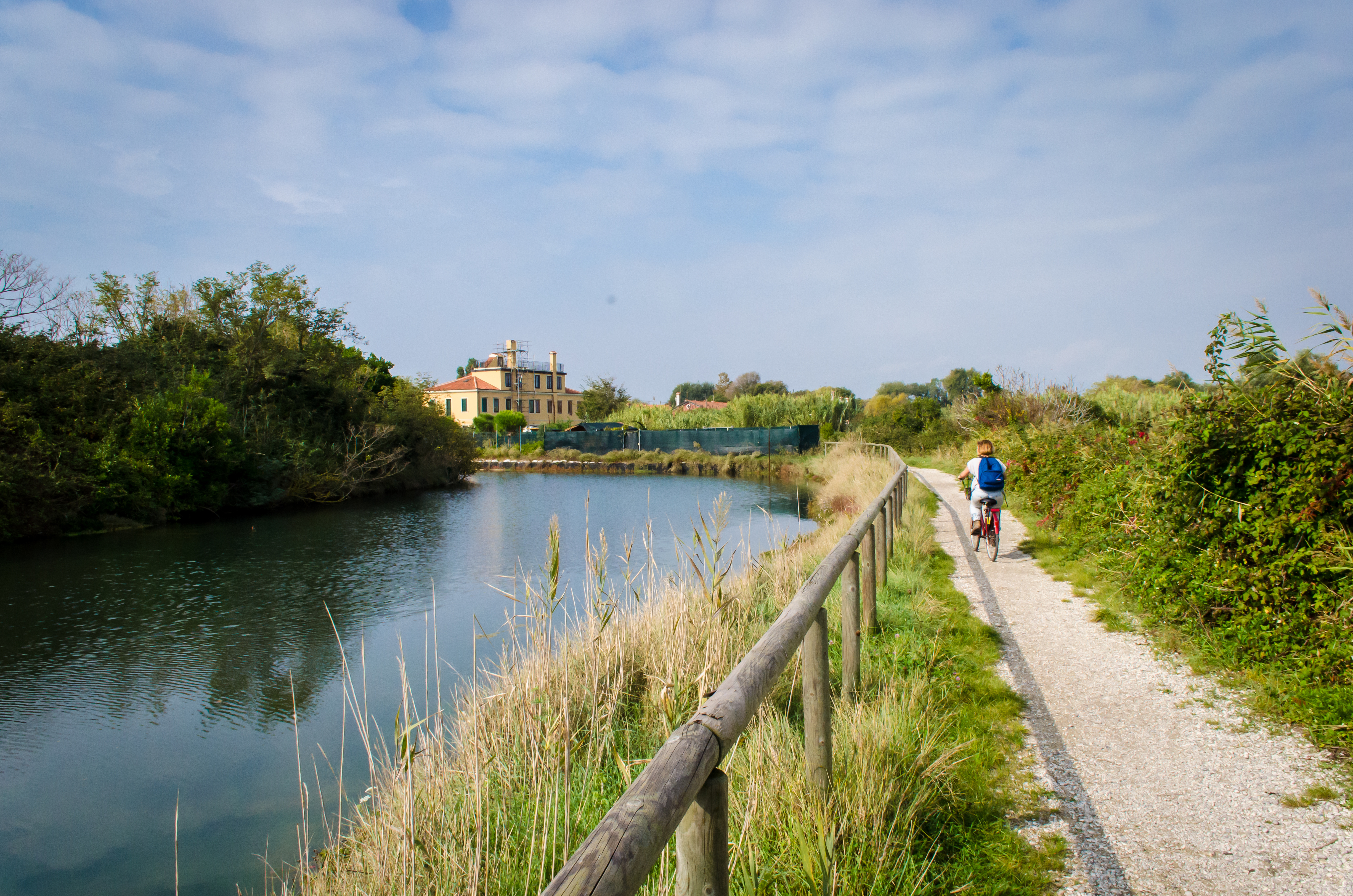
Practical Tips to Counter Overtourism
Here are some practical tips to counter overtourism:
- Using earphones when in a group helps reduce noise and prevents crowding along streets, making spaces less congested and more accessible for everyone.
- Carrying a reusable water bottle can significantly reduce plastic use: multiple spots in the city have fountains with high-quality water to refill them!
- Avoiding blocking bridges for selfies allows smooth passage for people and carts operating in the area, ensuring smoother circulation and a more pleasant experience for all visitors.
- Longer stays foster deeper integration with the city, offering the chance to explore Venice beyond the main attractions and helping mitigate the impact of tourist influx.
- Exploring less crowded places like Pellestrina by bike offers a sustainable way to enjoy the region's beauty without harming the environment while also enjoying a more authentic connection with local culture.
- Visiting main sites during evening hours , such as St. Mark's Basilica or the Doge's Palace, helps avoid daytime crowds, ensuring a more enjoyable and less chaotic visit.
- Taking advantage of historic boats to explore Venice offers a less crowded and authentic experience compared to traditional transport methods.
- Being mindful of personal water use is a respectful way to preserve a city like Venice, where water management is integral to daily life.
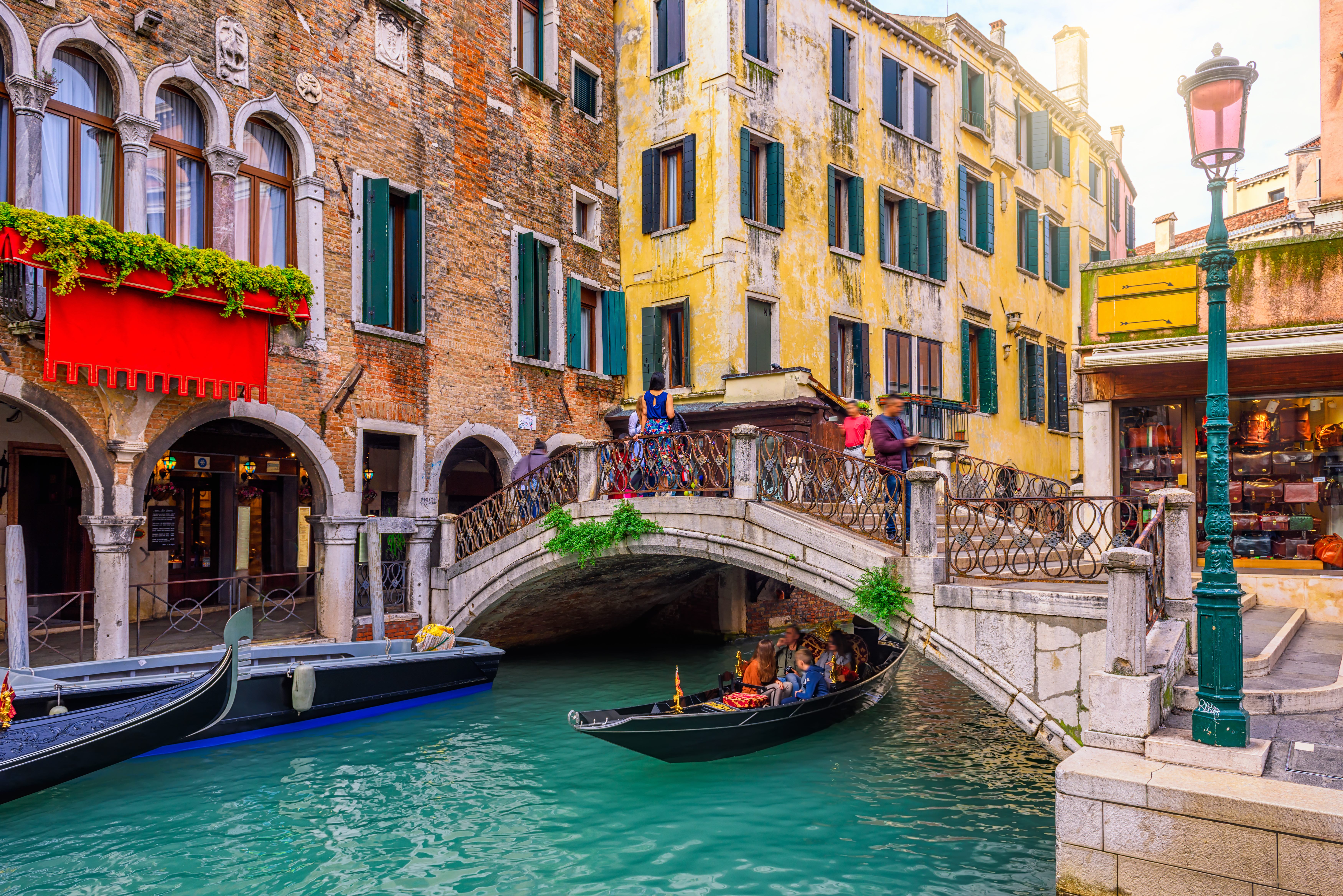
Unveiling Hidden Treasures
Beyond the main tourist destinations, there are lesser-known attractions that house invaluable treasures. Here are some not to be missed:
- Chiesa dei Frari: located in the enchanting Campo dei Frari in the San Polo district, it is Venice's largest church, rich in history and artworks.
- Palazzo Ca’ Rezzonico : overlooking the Grand Canal, this well-preserved palace houses a rich collection of furniture, paintings, and sculptures from the 18th-century Venetian era.
- Gallerie dell’Accademia: centrally positioned, near San Marco, offering an extraordinary collection of Venetian art.
- Palazzo Fortuni and Fabbrica Fortuni in Giudecca: offering a comprehensive journey through iconic and highly prized printed fabric.
- Madonna dell’Orto: this church preserves some of Tintoretto's most important paintings, created specifically for this location. A not-to-miss combo is with the Garden of the NH Hotel dei Dogi.
- Sestriere Castello: Castello is home to many traditional Venetian neighborhoods, where locals live and work, providing a glimpse into daily life in the city. Even better, because it’s not so well known, it’s a place where you can enjoy a quieter side of Venice
Exploring these lesser-known places can provide an authentic experience and a more intimate perspective on Venice's magnificence, adding value to your journey and helping counteract the effects of overtourism.
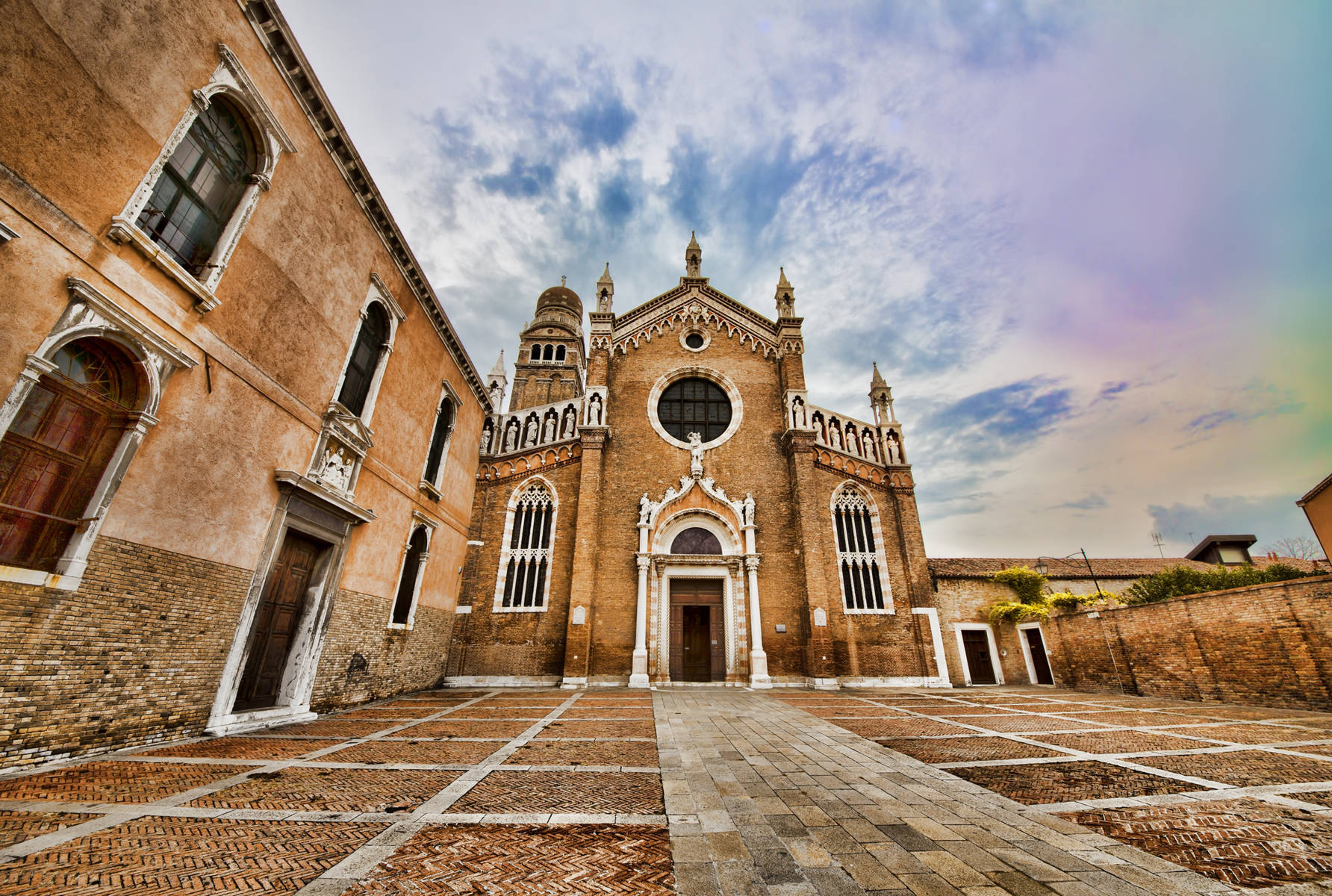
© 2023 Italyscape. All rights reserved. Privacy
Related articles
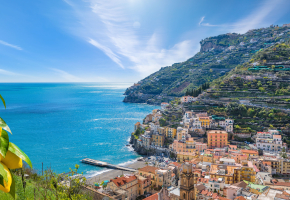
Learn how to experience the Amalfi Coast and Sorrento Peninsula in a smart way
- Destinations
- Travel Guides

Tips for travelling sustainably in Venice
)
Jo Williams
- Venice travel tips
The ‘sinking city’ isn’t a nickname that any place wants, but despite recent efforts to build a giant protective dam, Venice still faces unprecedented floods. Its beautiful buildings are literally sinking back into the lagoon they sprung from. So if you haven’t been yet, it’s now more important than ever to visit Venice in a sustainable way.
Just half of Venice’s 36 million annual visitors stay overnight. This kind of checklist tourism isn’t good for the local businesses or for maintaining the delicate infrastructure of the city. The huge environmental impact of this many day-trippers is at an imbalance with the peaceful, timeless beauty of the floating city.
Here are a few ways to make your trip to visit a bit more sustainable – and probably enjoy yourself more too
)
1. Choose when you visit
It almost goes without saying to avoid visiting much of Europe in August. Not only will you spend more, but the attractions will be busier too. Nobody wants to share the place they’re visiting shoulder-to-shoulder with thousands of other people... and this is definitely the case in Venice.
You’ll enjoy your visit more if you avoid peak times like summer and weekends. You can also choose to avoid visiting via a cruise ship (see We Are Here Venice for the reasons why), and to always try to spend more than just one day exploring the city.
But also be aware that there are often floods (aqua alta) in winter, so do what the locals do and bring a pair of waterproof boots.
2. Travel slowly
By spending three days or more in Venice, and travelling more sustainably, we can have a more positive impact on this precious part of Italy. Your tourism dollars are more likely to benefit the local community, and you can see the city at its best - in the evenings when there are fewer crowds.
The city is also set up to go green, with a distinct lack of cars and plenty of reasons to explore on foot. Plus, like many Italian cities, Venice is full of free water fountains where you can refill your reusable water bottle.
)
3. Find sustainable accommodation
Another way to make a difference is to avoid home-rentals and stay in a locally-owned B&B instead, this way the locals aren’t priced out of their own city.
If you really want to stay in a Venetian home try Ecobnb or Fairbnb , a more ethical home-sharing site that supports community projects as well as the locals.
Otherwise, Corte De Gabriela is an eco-friendly boutique hotel in the heart of the city. Their blend of sustainability and luxury comfort has won them the European Certificate of Eco-Sustainable Hotels.
If you're looking for a more affordable option, Ca’ della Corte is a completely renovated Venetian palace near Piazzale Roma. It’s been certified by Eco World Hotels for its ecological practices as well as its focus on reducing consumption and waste.
4. Use public transport
While water taxis and gondolas get all of the glamour, they do nothing to help the infrastructure of Venice. Use the public vaporetto service to get around like the locals and pay into the city’s economy, by getting a tourist day pass you will save a lot of money too.
Of course, for short distances you can’t beat walking. Venice is one of the best cities in the world for pedestrians and you never quite know what you’ll find over the next bridge or around the next hidden alleyway.
)
5. Hunt out locally-made souvenirs and food
Venice-made souvenirs can be hard to track down, with plenty of cheap knock offs available. But if you take the time to seek out the places that sell them, you will be supporting the local economy and you will have something that you can treasure forever. Check out Venezia Autentica’s interactive map of local businesses in Venice to support.
In restaurants and at the fresh produce market look out for the label ‘ Nostrano’, it means locally grown or caught and is a great way of supporting the local economy. Vegetarian and Vegan restaurants are also on the rise in Venice, and fresh food is always a source of pride for locals.
6. Choose local tours
A great way to make your money go even further is by booking a tour with a local. Venezia Autentica offers impactful experiences like rowing on the canals, glass bead making, and walks around the lesser-known side of Venice with a Venetian.
These tours all directly support local businesses and give back to the people that are still making a living here.
)
7. Explore the rest of the lagoon
A total of 118 floating islands make up the Comune di Venezia in the shallow Venetian Lagoon, all are inter-linked by over 400 bridges, public bus-like vaporetto routes, and water-taxis. But many visitors never leave the main island.
If you have a few days in Venice, take off on a Vaporetto and explore one of the other islands during the day. Nineteen scheduled water bus routes connect the main island to nearby islands like Murano, Burano, and Lido.
Come back to St Marks and Rialto at night time and you will find there is a lot more room to breathe and there’s still time to take in all of the unmissable sights.
What is the Venice Tourist Tax?
There are two types of tourist tax in Venice , a city tax is paid through your accommodation (as is the norm throughout Italy), and the new day-tripper tax (initially due to be rolled out in Jan 2023, but has been postponed to 2024) will be paid via an app for anyone entering the city.
Prices will go up in busy periods, and fall in quieter seasons. However, if you are staying for more than one night you will be exempt from this payment.
What is the Venice ‘Detourism’ campaign?
The City of Venice is known for being pretty strict when it comes to tourism management and even has a ‘Detourism’ campaign. Some of their tips to help everyone enjoy the sometimes crammed city are:
To be mindful of your surroundings when taking photos.
Always walk to the right side of the street.
And (like in many Italian cities) don’t sit on the ground or on any public steps to eat or drink - this can lead to congestion and litter (plus the gigantic seagulls will steal your lunch)!
So should I still visit Venice?
All of that being said, Venice is a city that only survives through tourism. It’s what gives the majority of people here employment, so visitors are always very welcome. Venice needs visitors - it just needs us to be a bit more mindful when we visit.
It’s also completely unique. If you’ve been to Venice before it's easy to find the same canal side charms in spots like Chioggia, but nothing quite lives up to the romance of a first visit to Venice.
Plan wisely, and you can help instead of harm this mesmerizingly beautiful sinking city.
Share this article
)
Author - Jo Williams
Jo Williams is a freelance writer with 10 years' experience working in travel and tourism. A Brit who got fed up with the 9 to 5 corporate life, she sold everything to become a full-time wanderer.
Jo has travelled to over 70 countries and worked throughout Europe for a major tour operator. She hopes to inspire you to work less and travel more.
Last Updated 14 March 2024

www.Venice.nu
How to go green in venice.
Venice is one of a kind, a unique urban environment, a UNESCO world heritage site and a cultural city of outstanding value. In such a special and beautiful destination, it is important to make sure you go green, and enjoy as sustainable a stay as possible.
#EnjoyRespectVenezia is the city’s awareness campaign to encourage responsible and respectful approaches to the environment, landscape, artistic beauties and identity of Venice. The aim is to raise awareness of tourist impact, in the belief that responsible travel can be sustainable.
The DETOURISM Campaign , run by Venice’s Tourism Department, promotes slow tourism and sustainable tourism in the city – encouraging visitors to come outside of peak season and to venture off the beaten track and explore Venice’s hidden gems – beyond the overcrowded main attractions.
Going Green in Venice involves Getting Off the Beaten Track
While you may wish to see the Doge’s Palace, St Mark’s Square and Rialto Bridge, Venice is far more than just a list of highlights. Taking time to explore the city’s hidden corners and less well known attractions not only reduces your impact; you will also get to know the real Venice and enjoy its beauty in away from the shuffling crowds. Check out the DETOURISM campaign’s magazine for plenty of cool alternative things to see and do.
For getting around, Venice makes green local travel easy! From its centre you can reach any part of the historic city on foot in 30 minutes. And public transport , if you need it, is a pleasure. The water-bus trip down the grand canal, for example, gives you some of the most spectacular views in Europe.
Amongst other things, you should see Venice’s lesser known islands, from the brightly coloured houses of Burano, to the ‘island of the mad’ – San Servolo Insane Asylum – and maybe Poveglia Island – the ‘plague island’ with a dark yet fascinating past. You could also make your way off the tourist circuit to the peaceful island of Torcello, where the city began over 1,500 years ago. Take a public water-bus (See the vaporetto network map ) or informative guided tours .
Going Green means finding Sustainable Accommodation
Finding a sustainable place to stay is key to going green in Venice. Most hotels in Venice make some effort to be eco-friendly, and notable examples include these two 4-star hotels: • Hotel Corte di Gabriela , San Marco, Venice, where nothing is thrown away, re-using is integral to their philosophy, and there are a range of other eco-friendly features. • NH Collection Palazzo Barocci , San Marco, Venice part of a truly eco-friendly chain of hotels, covering key issues such as water consumption, reduction, recycling, lower CO2 emissions, biodiversity etc.
A budget-friendly but very pleasant option, where sustainability is treated seriously, is: • Ca’ Riza Residenza Tipica Veneziana , a friendly B&B in Santa Croce, Venice. Apartments are often better value than hotels. Some eco-friendly options in Venice can be found at ecobnb.com .
Tripadvisor now has a ‘Green Leaders’ programme which rates member hotels Bronze, Silver, Gold, or Platinum according to their green credentials. As with all such programmes, not all eco-friendly hotels join the programme, and some may get accepted without deserving it, but it can be a useful starting point. Look out for the green leaf symbol under a hotel’s ‘About’ section.
You could also consider a farm stay or tent camping at one of the eco farms in the area around the city, rather than staying within the city itself.
Going Green means Eating and Drinking Sustainably
Venice has fabulous natural drinking water, considered superior in quality to bottled drinking water, much fresher, and provided free throughout the city. Pumped from far below ground and rigorously monitored for quality, it now flows from more than 100 city-wide drinking fountains. Filling your one bottle from these, instead of buying multiple bottles repeatedly, reduces the vast tonnage of discarded plastic that cities and waterways normally suffer from.
Venice is also an easy place to eat sustainably. If you’re staying in an apartment, you can source fresh local produce at markets such as the famous Rialto market in the city centre, full of local produce from Venetian islands such as Sant’ Erasmo as well as fresh fish of all kinds.
For organic vegetables, try the Mercato Biologico Solidale Aeres on Thursday and Monday mornings in Rio Tera dei Pensieri, in Santa Croce. Or the Thursday morning market (9-10 a.m. only) in front of the women’s prison on Giudecca. Everything here is grown by the female prisoners without the use of chemical products, machinery or fertilisers.
You’ll also find a growing number of organic and health food stores around the city. Find them on the searchable map of Venice , using search terms ‘organic’ or the Italian ‘ biologico ’.
For dining out, some of the city’s best rated organic and eco-friendly eateries are: • La Tecia Vegana (Vegan & organic), Callei dei Secchi. • Le Spighe (Vegan & organic takeaway, with compostable containers), Via Giuseppe Garibaldi. • Oro, Giudecca. • Bacarretto Bitrot il Siciliano, Sester Santa Croce. • All’ombra del Gabbiano, Via Caneve. Find them on this searchable map .
Going Green in Venice means Buying Local, Sustainable Products.
Like anywhere else, it’s eco-friendly to support local producers, and it’s worth considering this when choosing souvenirs and gifts. The most visited parts of Venice are awash with touristy tat masquerading as ‘souvenirs of Venice’ but actually imported from the other side of the world. It’s more rewarding for both you and the people whose city you are visiting to seek out authentic local products, especially high quality items made by local crafts people.
World-famous Murano glass, exquisitely made carnival masks, and genuine gondolier hats are good examples. Warning: some shops in the places most frequented by tourists offer sub-standard copies of these products made in China or Taiwan. Ask a local where to find the genuine articles or see these useful lists of authentic local souvenirs and where to find them, here , and here .
Another green option is to buy some of the cool, locally crafted accessories made from recycled materials. Find these at: • the Mercato Biologico Solidale Aeres (See above). • ‘ Piedaterre ‘, selling traditional Venetian Fruilane shoes made from jute bags and other recycled materials • ‘Dream’, an upcycling store on Calla Seconda dei Saoneri • ‘Magoga’ an upcycling shop in Castello, with locally hand-crafted bags made from damaged sails.
Counterfeit goods such as cheap handbags with fake designer labels should be avoided. The illegal street traders in the touristy parts of the city may seem harmless, but the criminal gangs who supply them are often involved in much nastier activities.
When going green in Venice, it is always a good idea to befriend some locals, who will be happy to point you in the direction of sustainable and off-beat options, no matter what kind of adventure you are looking to enjoy.
Venice has had issues with the high numbers of tourists who visit here each year, especially the crowds who troop on and off large cruise ships. But it is possible to avoid contributing to the problems that the city faces. As you can see from the above, going green in Venice is easier than you might imagine.
Maps, news, tips, topics & travel tools

Travel Home > Venice for the Sustainable Traveller
Venice for the Sustainable Traveller
- Travel Tips

Rising out of the blue water in Venice’s Grand Canal, a sculpture of large, white hands lending their support to the Ca’ Sagredo Hotel’s façade quickly became one of the most popular Instagram shots in the city in 2017. Put into place for the Venice Biennial, contemporary artist Lorenzo Quinn sought to draw attention to the problem of climate change and rising sea levels which threaten to sink the city.
However, so poignant was Quinn’s piece, it also sparked conversation to defend the integrity of Venice from the strain of its increasing popularity. As more people come to visit, the canals and monuments face greater wear and tear, and locals are finding it difficult to afford higher costs of living. However, the city of Venice is dedicated to fighting for its preservation while continuing to encourage visitors to experience its unique beauty and cultural wealth.
Sustainable travel in Venice is easy and enables visitors to experience a more authentic Venice while positively contributing to the city’s economy, environment, and community. To do your part:
Choose Green Transport
Cruise ships are one of the most popular ways visitors arrive in Venice each year, however they negatively impact the cleanliness and ecology of the waters around the city. Reduce your carbon footprint and environmental impact by arriving by bus or train. Fast trains such as the Frecciarossa and Italo in Italy are especially convenient- you can walk right out of Venice’s station onto the banks of the Grand Canal! Once inside the city, get around by walking or booking your private water taxi with Luxe Associates Travel.
Visit During the Off-Season
Not only will you be traveling sustainably to help the city, but chances are your experience in Venice will be more enjoyable! Instead of fighting through summer crowds in Piazza San Marco, you’ll be able to walk around with ample personal space in the winter or early-spring/late-fall. Monuments and museums will be less congested, and you will have your pick of the city’s best hotels and restaurants. To make the most of this, book your private tour of St Mark’s & the Doges Palace
Stay in Sustainable Accommodation
In Venice, accommodations for the sustainable traveler will benefit both the environment and the local community. Locals in Venice are being negatively impacted by illegal accommodation and unregulated B&B’s which contribute to limited housing and rising rents. Be sure to book your stay in Venice with a licensed hotel or guesthouse. Go the extra mile and do your part to help the environment by looking for hotels dedicated to minimizing their waste of energy and water.
Partake in De-Tourism
De-Tourism, as promoted by the city of Venice, encourages the sustainable traveler to venture off the beaten path, away from the typical hotspots to undiscovered areas of the city. Not only will this alleviate wear and tear in the busy areas of Venice, but you will be able to experience and visit the authentic Venice untainted by tourist traps. Talk with locals and discover unique experiences not found in guidebooks. Other islands in the lagoon, such as Murano and Burano , are a short vaporetto ride from Venice and are less visited. By taking a detour to these islands, gain a glimpse into wider Venetian life and culture through their colorful buildings and strong traditions of glass and lace production.
Contribute to the Local Economy
Travel sustainably in Venice by simply avoiding tourist trap restaurants and stores and illegal vendors. Instead, support local businesses by purchasing goods from local artisans to help keep their craft and contribution to Venetian culture in Venice itself. Eat and drink where the locals do to support local restaurateurs and experience authentic and delicious Venetian food. Wander off the beaten path to find the real Venice and celebrate it by favoring quality over quantity and convenience in your purchases.
Follow the Rules
Being respectful of the place, people, and culture you are visiting is the cornerstone of sustainable travel philosophy. Though Venice has survived the test of time, it is a fragile city where rules have been put into place to ensure its preservation. It is forbidden to jump into and swim in the canals. Though they look inviting for a respite, do not use the steps of bridges, churches, or monuments as places for a picnic. Respect the environment and the city itself by throwing trash away in the appropriate bins. These actions are simple, but they go a long way in terms of ensuring that Venice will continue to be enjoyed by visitors and locals for generations to come.
See all our Venice tours here!
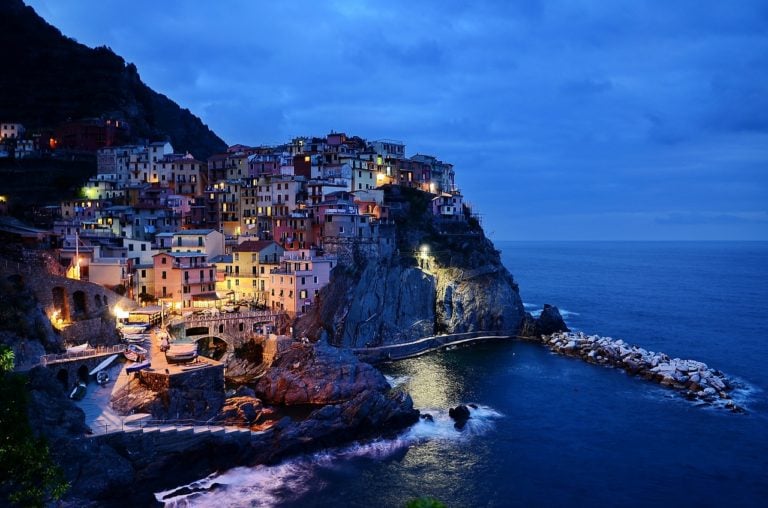
Why You Should Choose a Private Italy Tour
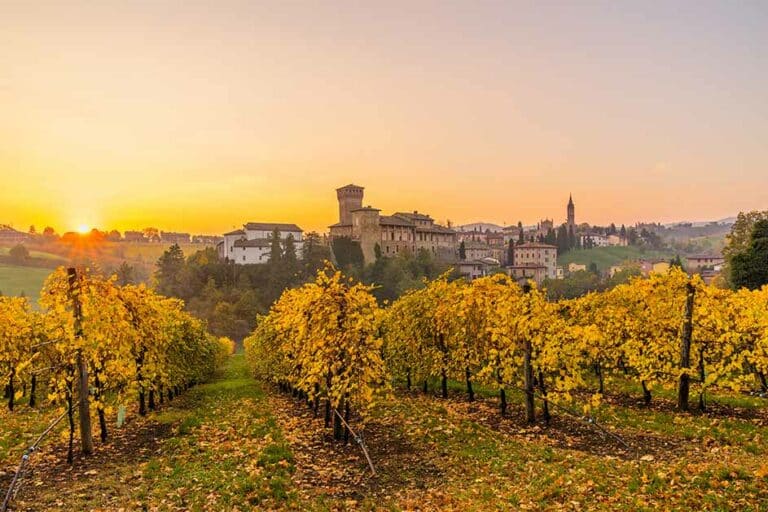
Why Spring Is The Perfect Time To Visit Italy
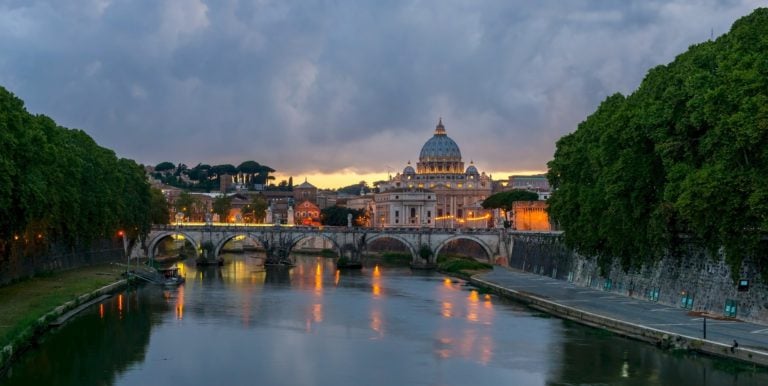
Why is Rome Called The Eternal City?
Let us know your questions!
Call our team
+1 (424) 766-5955
WhatsApp us
We're here to help!
Contact Our Team For A Tailored Private Tour Itinerary
We understand that no two private tours will be the same, and we endeavor to tailor every tour exactly to the tastes and requirements of our guests. So if there is anything we can do to customize your tour, just let our friendly planners know in the form below.
Rated 5-Star on Google & TripAdvisor
Qualified Guides. Certified Excellence.
Our popular tour itineraries.
Take a look at some of the example tour itineraries below for inspiration before getting in touch with our experts to start planning your own trip!
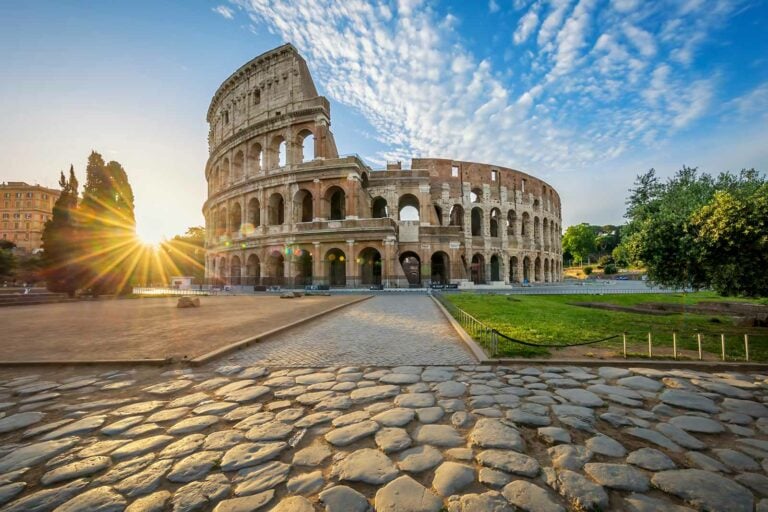
28 Day Private Tour of Italy Itinerary
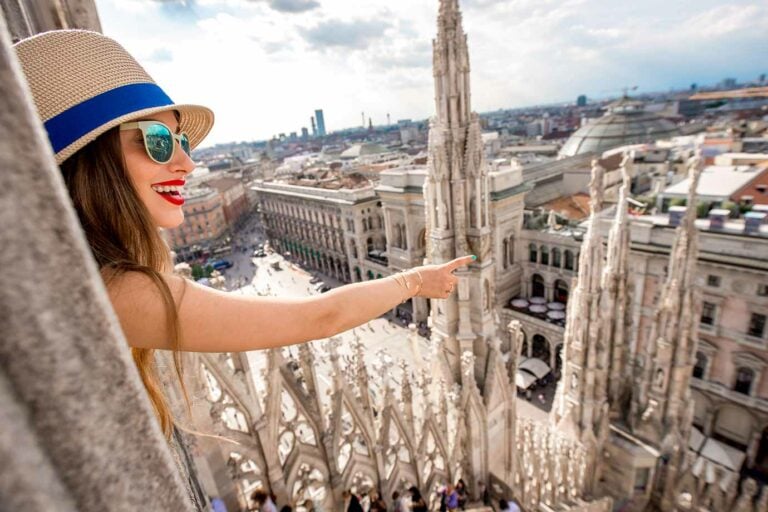
Highlights of Italy – 18 Day Itinerary
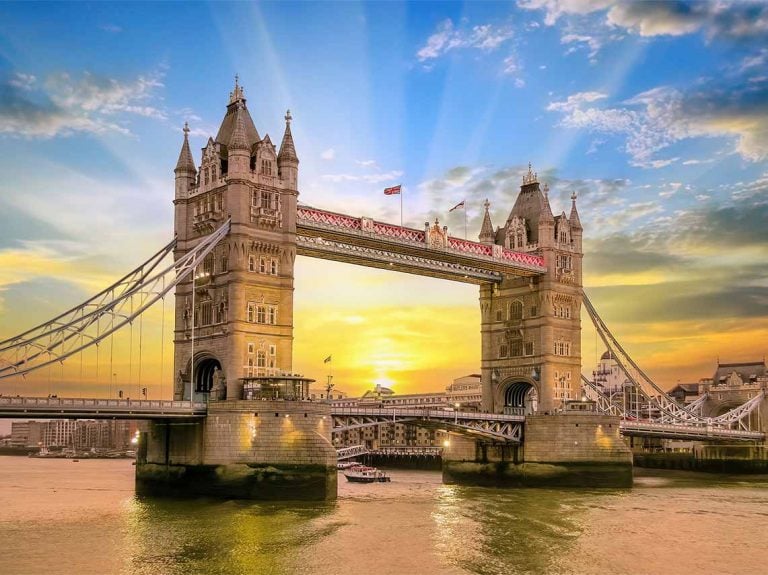
25 Day Grand Private Tour of The UK
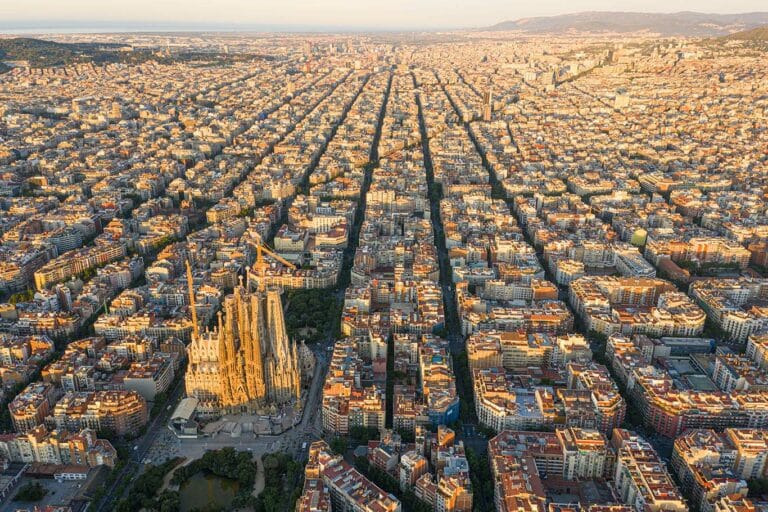
Italy, France & Spain 16-Day Tour Itinerary
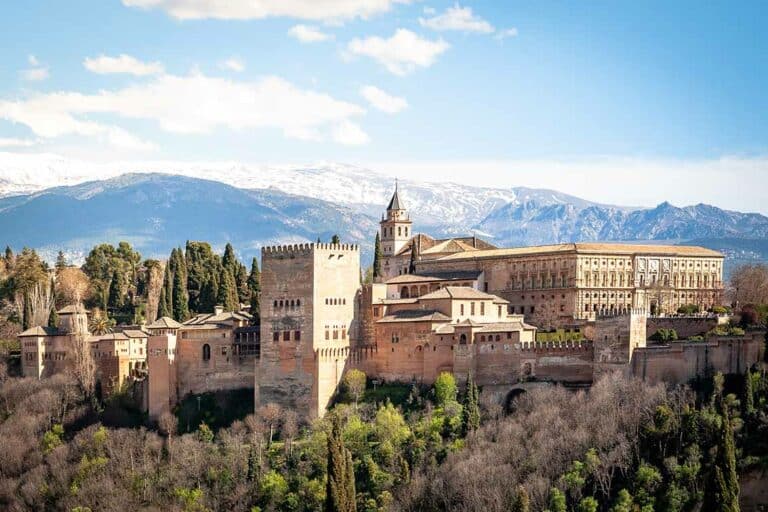
10 Day Spain Itinerary
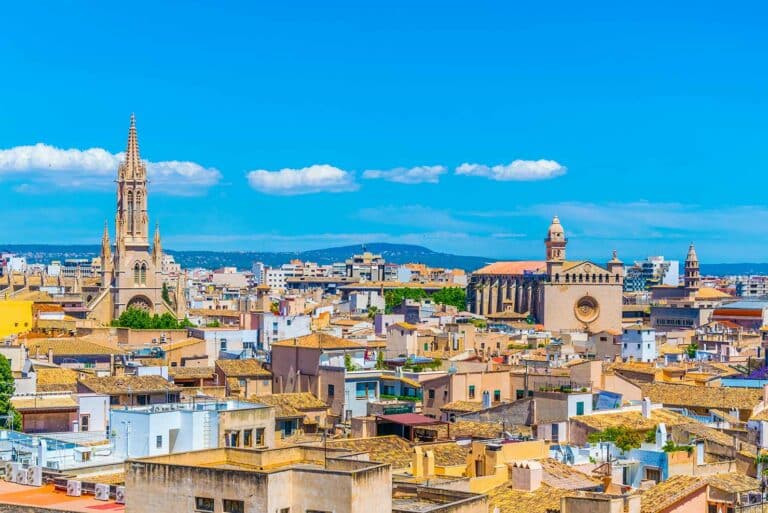
21-Day Driver-Guided Tour of Spain & Portugal

18 Day Private Tour of Scotland & Ireland
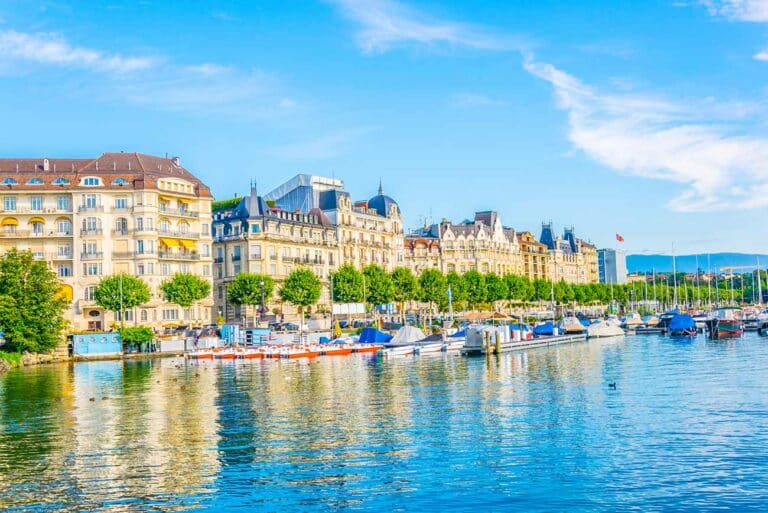
Switzerland & Italy in 2 Weeks Itinerary
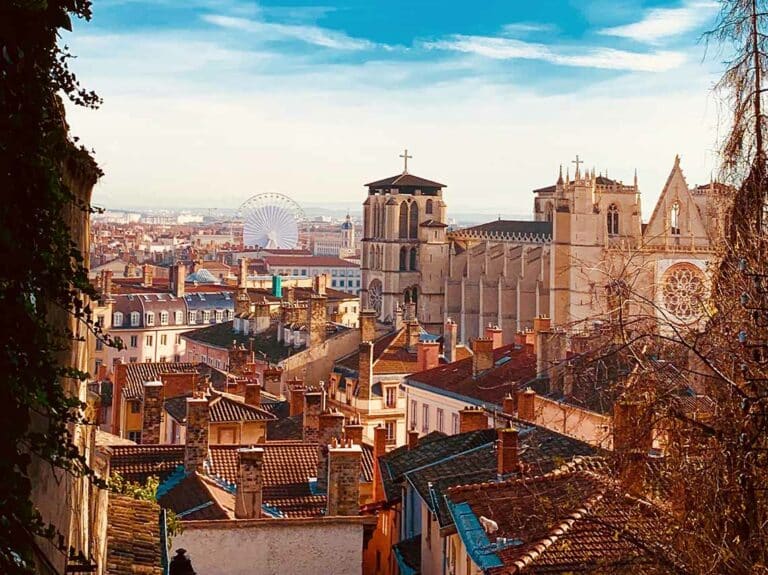
21 Day France Tour Itinerary
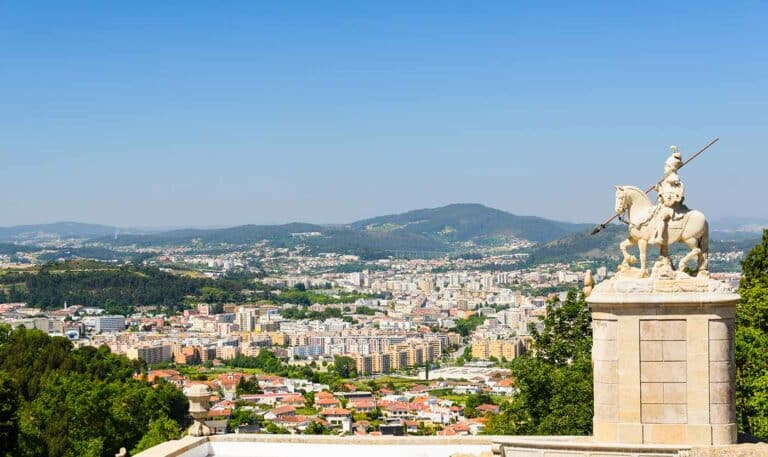
Portugal 7 Day Tour Itinerary
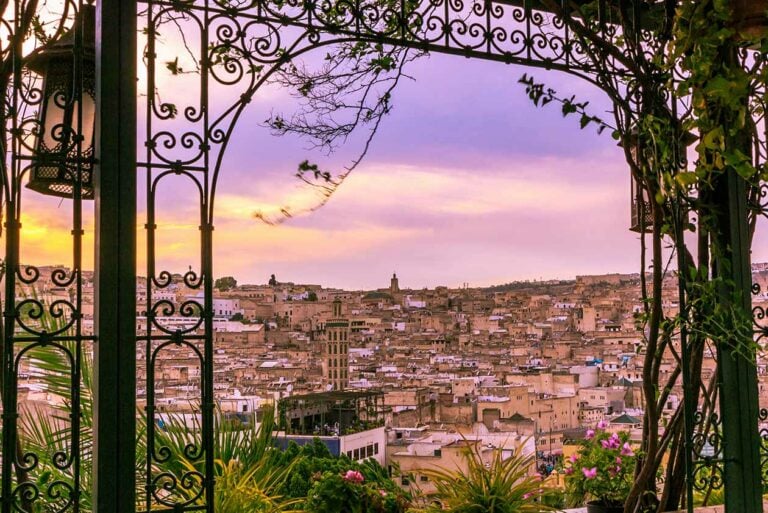
14 Day Best of Morocco Itinerary
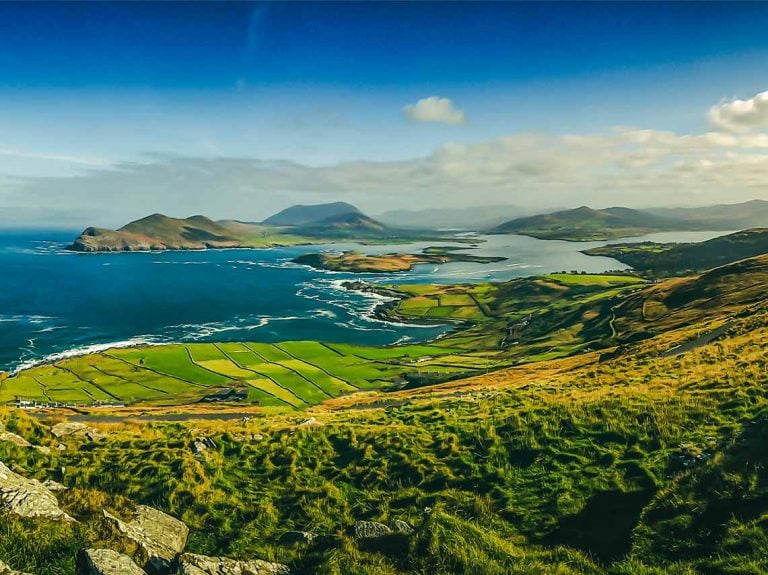
7 Day Driver-Guided Private Tour of Ireland
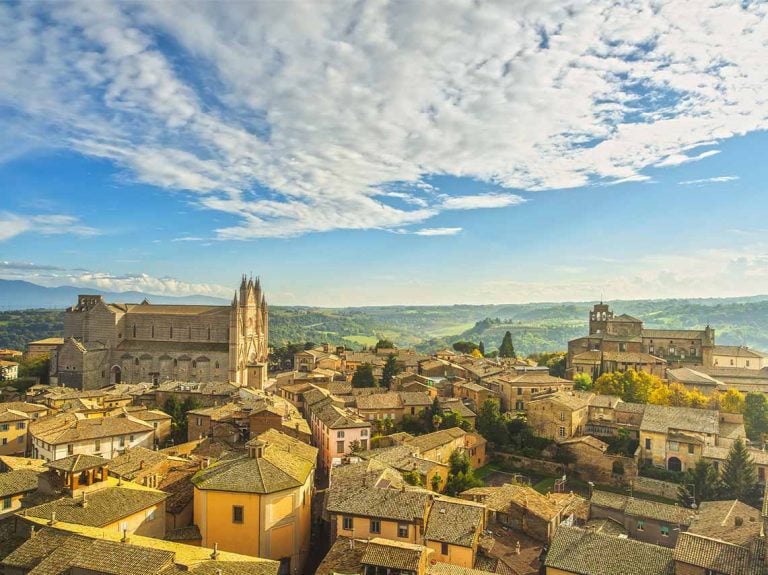
10 Day Guided Tour of Central Italy
Most popular tour destinations
Search Luxe Tours, Experiences, and Destinations
Or start planning your perfect tour itinerary today.
Or contact our team directly today at +1 (424) 766-5955
Contact The Luxe Team
Destinations, popular itineraries, contact our team.
Let our European travel experts plan your trip

- Privacy Overview
- Strictly Necessary Cookies
- 3rd Party Cookies
- Cookie Policy
This website uses cookies so that we can provide you with the best user experience possible. Cookie information is stored in your browser and performs functions such as recognising you when you return to our website and helping our team to understand which sections of the website you find most interesting and useful.
Strictly Necessary Cookie should be enabled at all times so that we can save your preferences for cookie settings.
If you disable this cookie, we will not be able to save your preferences. This means that every time you visit this website you will need to enable or disable cookies again.
This website uses Google Analytics to collect anonymous information such as the number of visitors to the site, and the most popular pages.
Keeping this cookie enabled helps us to improve our website.
Please enable Strictly Necessary Cookies first so that we can save your preferences!
More information about our Cookie Policy
share this!
June 25, 2021
Venice reinventing itself as sustainable tourism capital
by Colleen Barry
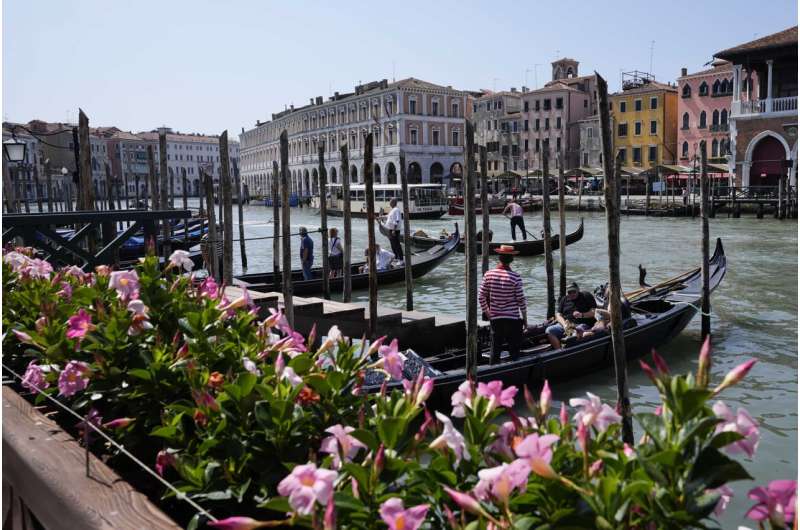
Away from the once-maddening crowds of St. Mark's Square, tiny Certosa island could be a template for building a sustainable future in Venice as it tries to relaunch its tourism industry without boomeranging back to pre-pandemic day-tripping hordes.
Private investment has converted the forgotten public island just a 15-minute waterbus ride from St. Mark's Square into a multi-faceted urban park where Venetians and Venice conoscenti can mix, free from the tensions inherent to the lagoon city 's perennial plague of mass tourism.
"This is the B-side of the Venetian LP," said Alberto Sonino, who heads the development project that includes a hotel, marina, restaurant and woodland. "Everyone knows the first song of the A-side of our long-play, almost nobody, not even the most expert or locals, know the lagoon as an interesting natural and cultural environment.''
It may be now or never for Venice, whose fragile city and lagoon environment alike are protected as a UNESCO world heritage site. Citing overtourism, UNESCO took the rare step this week of recommending Venice be placed on its list of World Heritage in Danger sites. A decision is expected next month.
After a 15-month pause in mass international travel, Venetians are contemplating how to welcome visitors back to its picture-postcard canals and Byzantine backdrops without suffering the past indignities of crowds clogging narrow alleyways, day-trippers picnicking on stoops and selfie-takers crowding the Rialto Bridge.
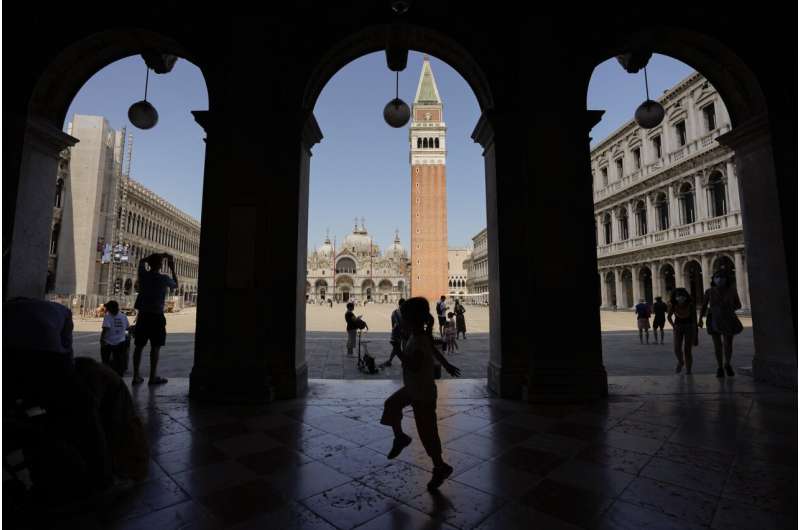
The recommendation by UNESCO's World Heritage Center took into account mass tourism, in particular the passage of cruise ships through the historic center, a steady decline in permanent residents as well as governance and management problems.
"This is not something we propose lightly,'' Mechtild Roessler, director of the World Heritage Center, told AP. "It is to alert the international community to do more to address these matters together."
Veneto regional officials have submitted a plan for relaunching the tourism-dependent city to Rome that calls for controlling arrivals of day-trippers, boosting permanent residents, encouraging startups, limiting the stock of private apartment rentals and gaining control over commercial zoning to protect Venetian artisans.
The proposal, submitted in March, aims to make Venice a "world sustainability capital," and hopes to tap some of the 222 million euros ($265 million) in EU recovery funds to help hard-hit Italy relaunch from the pandemic.
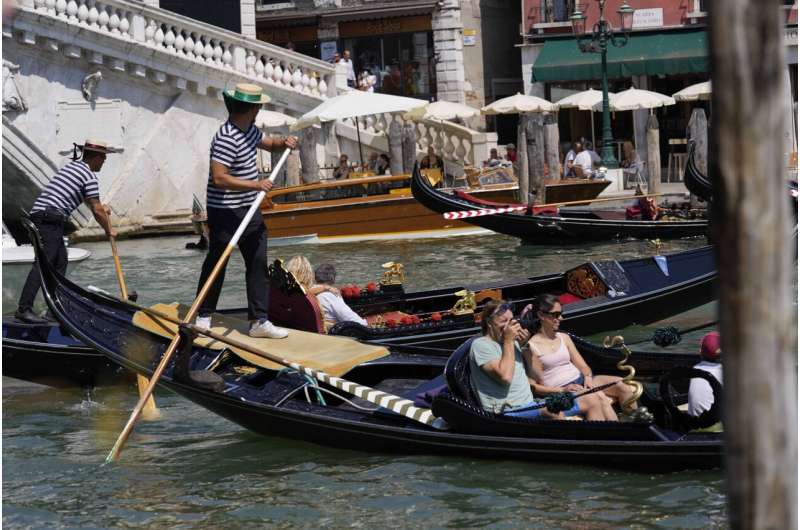
"Venice is in danger of disappearing. If we don't stop and reverse this, Venice in 10 years will be a desert, where you turn the lights on in the morning, and turn them off in the evening,'' said Nicola Pianon, a Venice native and managing director of the Boston Consulting Group whose strategic plan for Venice informed the region's proposal.
The proposal responds to Venetians' urgency to reclaim their city from the mass tourism that peaked at some 25 million individual visitors in 2019, and stanch the exodus of 1,000 Venetians each year. It envisions investments of up to 4 billion euros to attract 12,000 new residents and create 20,000 new jobs.
As much as Venetians groan at the huge tourist flows, the pandemic also revealed the extent to which the relationship is symbiotic.
Along with lost tourist revenue, Venetians suffered a drastic reduction in public transport, heavily subsidized by tourist traffic. Even city museums could not afford to reopen to residents when lockdowns eased.
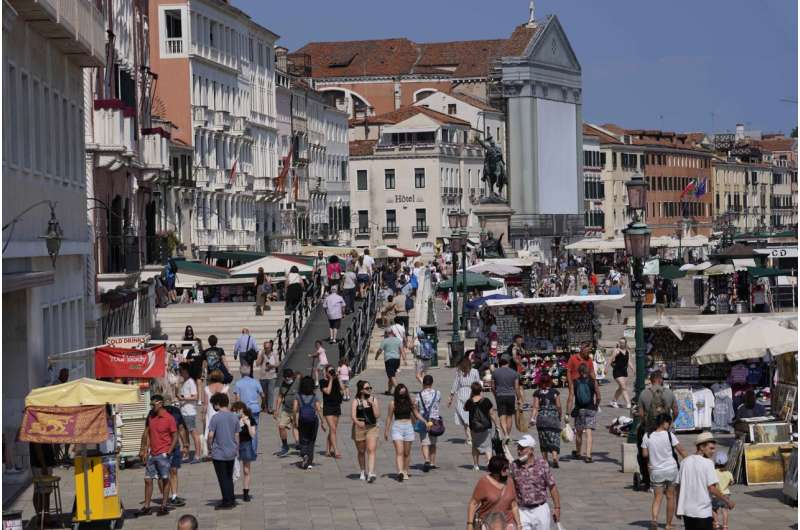
"Venice without tourists became a city that could not serve its own citizens,'' said Anna Moretti, an expert in destination management at Venice's Ca' Foscari University.
The pandemic paused the city's plans to introduce a day-tripper tax last year on visitors who sleep elsewhere—80% of the total tourist footfall.
Some 19 million day-trippers visited in 2019 , spending just 5 euros ($6) to 20 euros each, according to Boston Consulting. On the other side of that equation, the 20% of tourists who spend at least one night in Venice contribute more than two-thirds of all tourist revenue.
A reservation system with an access fee is expected to launch sometime in 2022 to manage day visitors.
With an eye on monitoring daily tourist arrivals, the city set up a state-of-the-art Smart Control Room near the main railroad bridge last year that identifies how many visitors are in Venice at any moment using cell-phone data that also reveals their country of origin and location in the city.
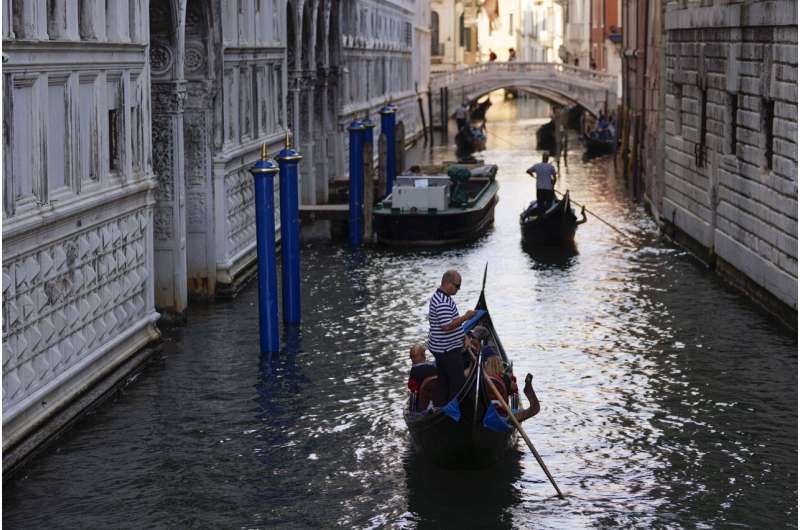
The technology means that future reservations can be monitored with QR codes downloaded on phones, without the need to set up check points. Pianon said the plan is feasible in a city like Venice, which has a limited number of access points and is just 5 square kilometers (2 square miles) in area.
Relaunching more sustainable tourism in Venice would require diverting tourists to new destinations, encouraging more over-night stays, discouraging day trips and enabling the repopulation of the city with new residents.
Much could go wrong. Tourist operators are desperate for business to return, and there is a pent-up global desire to travel. In addition, many changes being sought by regional and city officials must be decided in Rome, including any limits on commercial zoning or Airbnb rental properties.
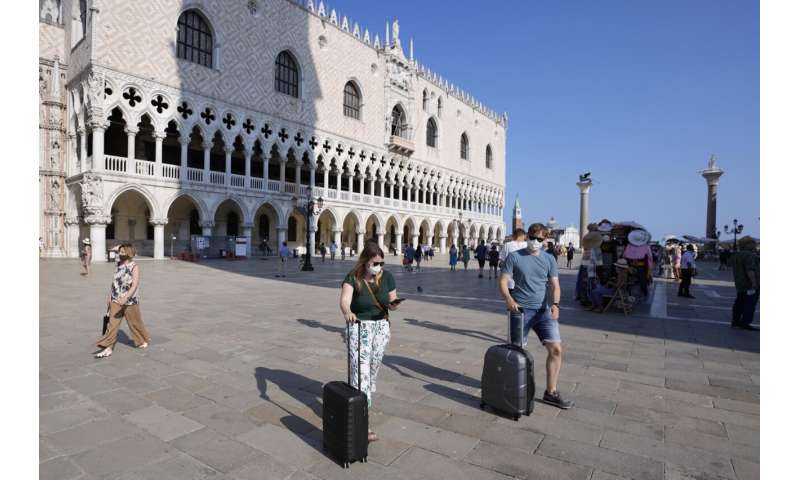
"I think the level of dystopia that we had reached was of such a scale that there has to be a reaction,'' said Carlo Bagnoli, head of an innovation lab, VeniSia, at Ca Foscari University. "There are many projects emerging from many places."
Certosa island, after more than a decade, is still a work in progress, but its success is in the numbers: 3,000 visitors each weekend.
Sonino sees another 10 public sites in the lagoon with redevelopment potential, including former hospitals, abandoned islands and military bases.
He blames Venetians themselves for the city's predicament, being long on talk, short on action. But he feels the pandemic—coupled with the world's abiding interest in Venice's future—might just be the push the city needs to change.
"I prefer to hope that we catch the opportunity. Carpe diem is not only a slogan but an opportunity,'' Sonino said. "We need a lot of ideas and a lot of passion to take Venice from the past to the future."
© 2021 The Associated Press. All rights reserved. This material may not be published, broadcast, rewritten or redistributed without permission.
Explore further
Feedback to editors

Baby white sharks prefer being closer to shore, scientists find

Key protein regulates immune response to viruses in mammal cells
5 hours ago

Unraveling the mysteries of consecutive atmospheric river events
8 hours ago

Research team resolves decades-long problem in microscopy

RNA's hidden potential: New study unveils its role in early life and future bioengineering
9 hours ago

Smoother surfaces make for better accelerators

Scientists reveal hydroclimatic changes on multiple timescales in Central Asia over the past 7,800 years

Research reveals a surprising topological reversal in quantum systems
10 hours ago

NASA's Juno gives aerial views of mountain and lava lake on Io

Toxic fireproof chemicals can be absorbed through touch, 3D-printed skin model shows
Relevant physicsforums posts, unlocking the secrets of prof. verschure's rosetta stones.
6 hours ago
Iceland warming up again - quakes swarming
11 hours ago
Tidal friction and global warming
21 hours ago
Large eruption at Ruang volcano, Indonesia
Apr 17, 2024
M 4.8 - Whitehouse Station, New Jersey, US
Apr 6, 2024
Major Earthquakes - 7.4 (7.2) Mag and 6.4 Mag near Hualien, Taiwan
Apr 5, 2024
More from Earth Sciences
Related Stories

Cruise ships restart in Venice, bring environmental protests
Jun 6, 2021

Thousands demonstrate against cruise ships in Venice
Jun 8, 2019

Devastated Venice braced for third major flood
Nov 17, 2019

Venice canals clear as city tourist-free under coronavirus
Mar 18, 2020

Image: Deserted Venetian lagoon
Apr 15, 2020

Venice calls European port cities to arms over cruise ships
Aug 1, 2019
Recommended for you

A third of China's urban population at risk of city sinking, new satellite data shows

Dense network of seismometers reveals how the underground ruptures
13 hours ago

'Human-induced' climate change behind deadly Sahel heat wave: Study
14 hours ago
Let us know if there is a problem with our content
Use this form if you have come across a typo, inaccuracy or would like to send an edit request for the content on this page. For general inquiries, please use our contact form . For general feedback, use the public comments section below (please adhere to guidelines ).
Please select the most appropriate category to facilitate processing of your request
Thank you for taking time to provide your feedback to the editors.
Your feedback is important to us. However, we do not guarantee individual replies due to the high volume of messages.
E-mail the story
Your email address is used only to let the recipient know who sent the email. Neither your address nor the recipient's address will be used for any other purpose. The information you enter will appear in your e-mail message and is not retained by Phys.org in any form.
Newsletter sign up
Get weekly and/or daily updates delivered to your inbox. You can unsubscribe at any time and we'll never share your details to third parties.
More information Privacy policy
Donate and enjoy an ad-free experience
We keep our content available to everyone. Consider supporting Science X's mission by getting a premium account.

E-mail newsletter

Sustainable Tourism in Venice
The state of tourism in venice.
Everything you need to understand the impact of tourism in Venice, today.

Making Tourism Sustainable in Venice
How we are working to make tourism in Venice more sustainable

Getting Started - Our Guides to Sustainable Tourism in Venice
Must read guides and must use tools to travel Venice in a sustainable way, easily

- First Trip In Venice
- Eating like a local In Venice
- Impactful Experiences To Try
- Shopping local in Venice
- Where to Stay in Venice in a responsible way
- Tips for responsible tourists
- Places where to Eat & Drink
- Places where to Shop
- Hire Venetians for your Services
- Private Tours & Experiences to Book
- Interactive Map
Looking for things to do in Venice? Experience Venice with a local!
We’d love to chat.
Let us know
how we can help
- Things to do
Explore > Art > Sustainable Travel in Venice
Sustainable Travel in Venice

_Photo by Candré Mandawe on Unsplash _
There’s no doubt about it: Venice is not only one of the most beautiful cities in Italy, it’s one of the most beautiful cities in the world. With its incredible history, stunning waterways, and jaw-dropping architecture, a holiday to Venice tops nearly every traveller’s bucket list.
Because of that, Venice is facing overcrowding, as millions visit every year. In conjunction with Venice’s new initiative to promote sustainable and responsible travel ( #EnjoyRespectVenezia ) we’ve put together a guide on how we can all be better tourists in Venice.
With an emphasis on respecting the local environment, economy, and inhabitants, responsible tourism can contribute to a sustainable Venice for years to come.
Tips for Sustainable Travel in Venice ————————————-
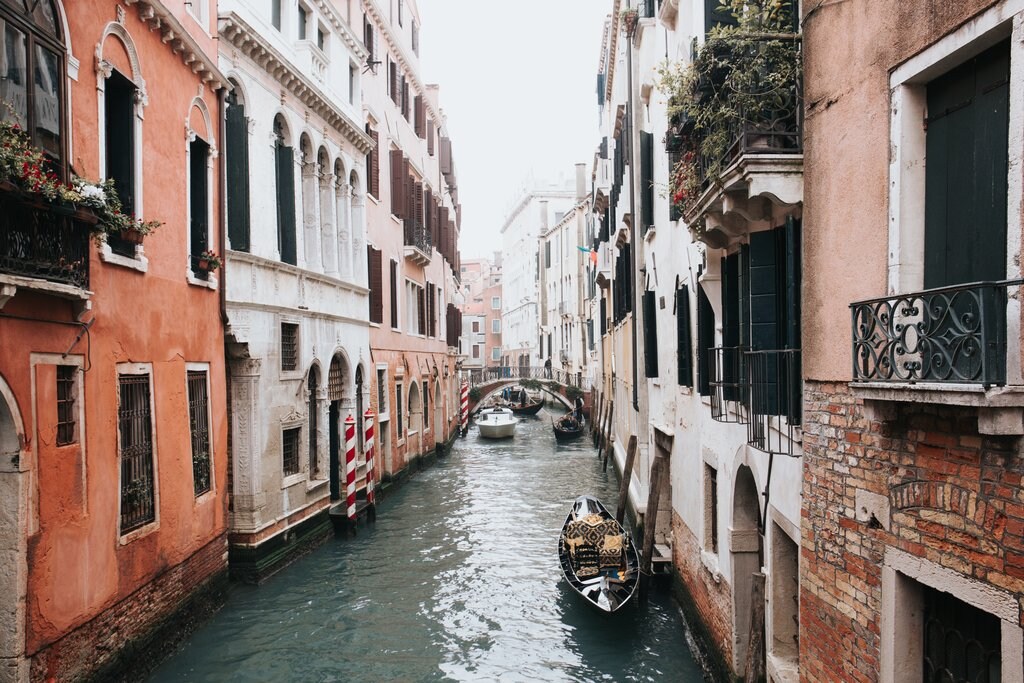
_Photo by Alisa Anton on Unsplash _### 1. Step off the beaten path
The phrase “off the beaten path” may be overused in travel writing, and some may argue it’s impossible to step off the beaten path in Venice. But doing a bit of research and joining a local tour can help you unlock some of Venice’s lesser-known spots .
Another wonderful option for helping to diffuse overcrowding in Venice is to visit the smaller islands in the lagoon, including Murano, Burano, and Torchello.
### 2. Focus on local culture
Sustainable travel is all about supporting the local community of a destination. In Venice, this means supporting local businesses, including locally-owned restaurants, tour companies, and shops. Not sure where to start? Ask a local, of course! The staff at your Venice hotel will be well-versed in local places to shop, eat, and sightsee.
Eating in Italy is one of life’s great joys, and you’ll find no shortage of local cuisines to try in Venice and the surrounding lagoon. If you’re unsure what to try, go for a seafood dish (sardines, small crabs, and squid ink are all popular). Risotto and polenta are also very common in the area, and make sure to try bigoli in salsa , a local pasta dish that’s perfect as a starter! For dessert, try the delicious (and very Venetian) baicoli with your espresso.
### 3. Buy locally-made souvenirs
An ideal way to immerse yourself in Venetian culture is to visit a local artisan’s workshop. From leather and woodworking to glass and graphic design, there are many workshops where you can learn about how these local products are made. The souvenirs you purchase will be all that much better if you’ve actually seen the handiwork behind it!
And as tempting as it may be to shop from illegal vendors that usually set up on the street (think fake designer handbags, for example), buying these products only end up hurting the Venetian economy, not helping it.
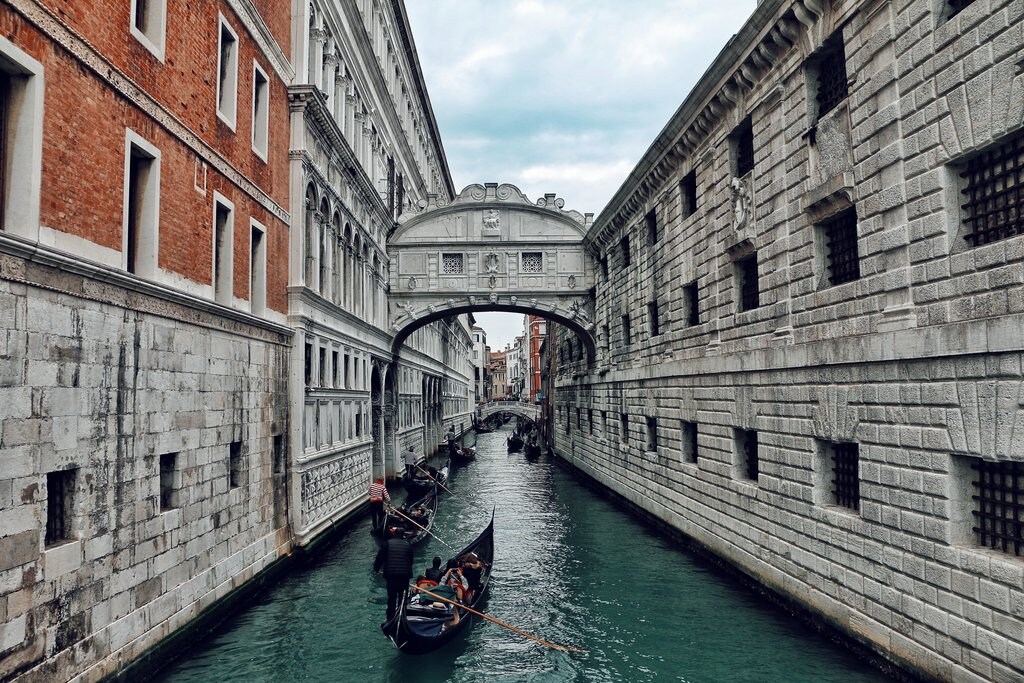
_Photo by Soroush Karimi on Unsplash _
### 4. Take care of public spaces
Not only does this include disposing of all rubbish and recycling properly, it also means no loitering or eating in places you’re not meant to. As breathtaking as St. Mark’s Square is, for example, it is not a picnic spot. Similarly, bridges, wells, monuments, and the steps of churches should not be used as rest areas or spots to eat. There are plenty of public gardens around Venice where you can rest or picnic to your heart’s content!
In the same vein, just because Venice is surrounded by water doesn’t mean you can swim anywhere you’d like. Make sure to swim in only the designated areas !
### 5. Visit Venice in low season
There are many benefits to travelling to Venice in low season, including fewer crowds, more space to yourself, and potentially better deals on transportation and accommodation. Travelling in low season is a fantastic way to support sustainable tourism and help offset overcrowding in Venice’s peak summer months!
Another way to travel responsibly in Venice? Visit for more than just a day trip. Staying for a few days in Venice helps the local community by giving more business to local hotels and restaurants. And trust us… one day in Venice isn’t enough, not when there are so many amazing things to do in the city and the surrounding lagoon!
### 6. Leave no trace
Sustainable travel is all about creating as low of an impact on the local environment and community as possible. This means absolutely no littering or graffiti (including locking padlocks to bridges). Think of Venice as your backyard… would you want people to throw rubbish on your lawn or write their names on your house?
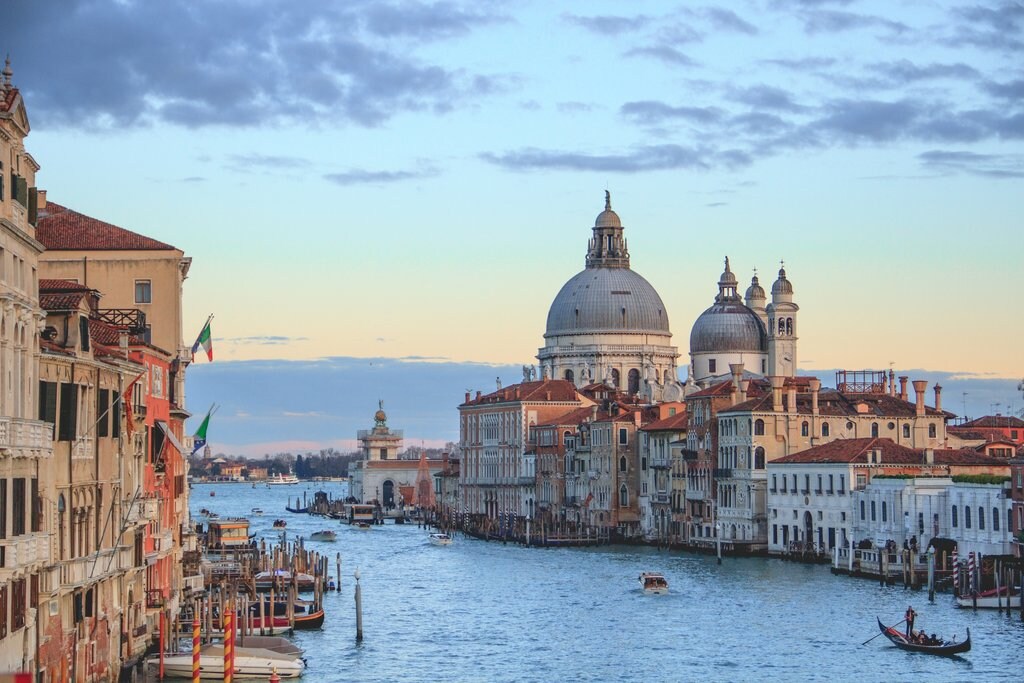
_Photo by Henrique Ferreira on Unsplash _
### 7. Try to avoid disposable plastic products when possible
Disposable plastic products such as water bottles and shopping bags are some of the biggest culprits when it comes to the world’s waste problem. Simply put, plastic waste is taking over our planet, including on land and at sea. There are two simple ways you can help reduce your plastic waste while on holiday in Venice:
-bring a reusable tote bag for all of your shopping needs
-bring a reusable water bottle; tap water is safe to drink in Venice, and there are over 100 public drinking fountains around the city where you can fill up your bottle!
### 8. Respect Venice’s inhabitants
As much as it looks like it was ripped out of a fairytale, Venice is indeed home to hundreds of thousands of people! A big part of being a responsible tourist is respecting the local inhabitants of the destination you’re visiting. This can include all of the above, of course, but also making sure to keep noise levels to a minimum at night, never taking a photograph of someone without their permission, and remembering that Venice is a city filled with people trying to live their daily lives amongst the tourists.

_Photo by Jenny Kim on Unsplash _
A city as beautiful and unique as Venice deserves to be treated with respect. We can all do our part to help maintain Venice’s beauty and history for many generations to come; a few small actions by each of us can equal a massive shift in positive sustainability. Sustainable travel in Venice is indeed possible… together we can make it happen!”
More Articles With Art
Discover the very best museums and galleries through virtual tours. From London to New York, explore these online museums without leaving your home!
Find everything you need for a fun visit to the York Art Gallery with this comprehensive visitor’s guide.
Discover the top art galleries in London to experience some history and culture on your holiday.
Discover the top art galleries in Manchester to experience culture and history on your next holiday.
Visiting the spas and Georgian buildings of Bath? Check out our visitor’s guide to the Fashion Museum.

Sustainable
Discover eco-friendly Venice with our sustainable tours. Immerse in green practices, explore responsibly, and support local conservation efforts.
La Biennale di Venezia
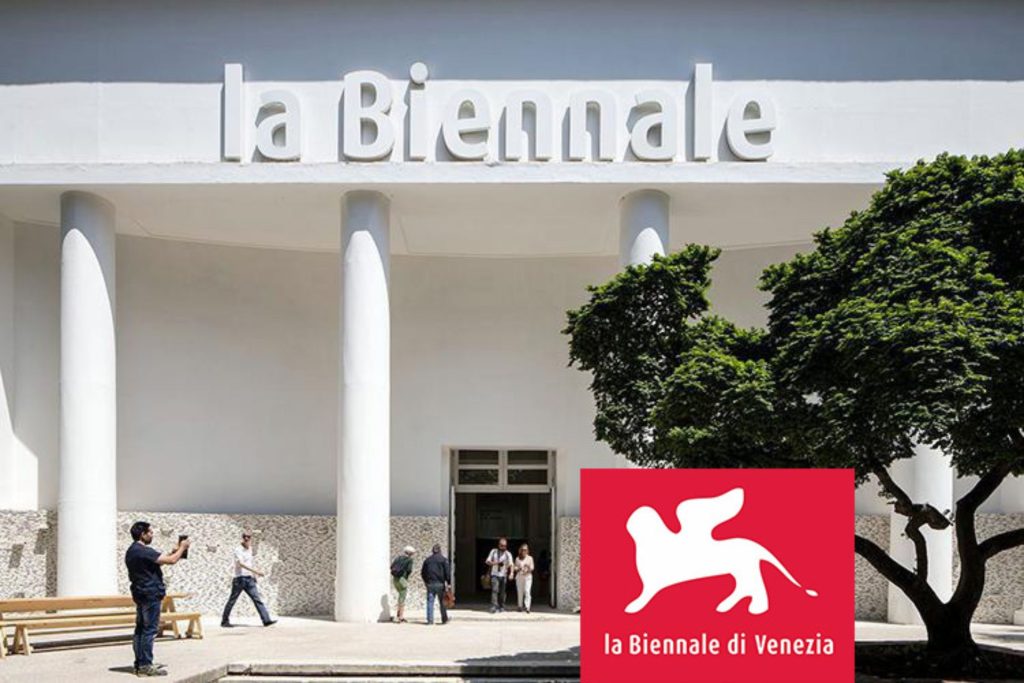
Gondola tour and dinner

Doge’s Palace and the full Basilica
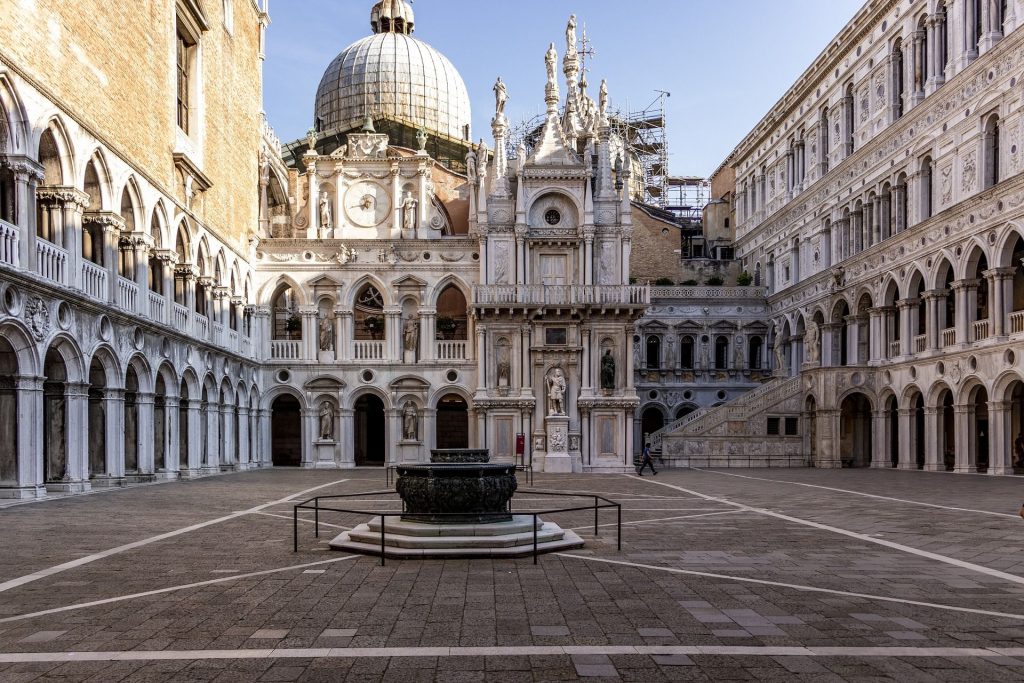
Walking tour and the full Basilica
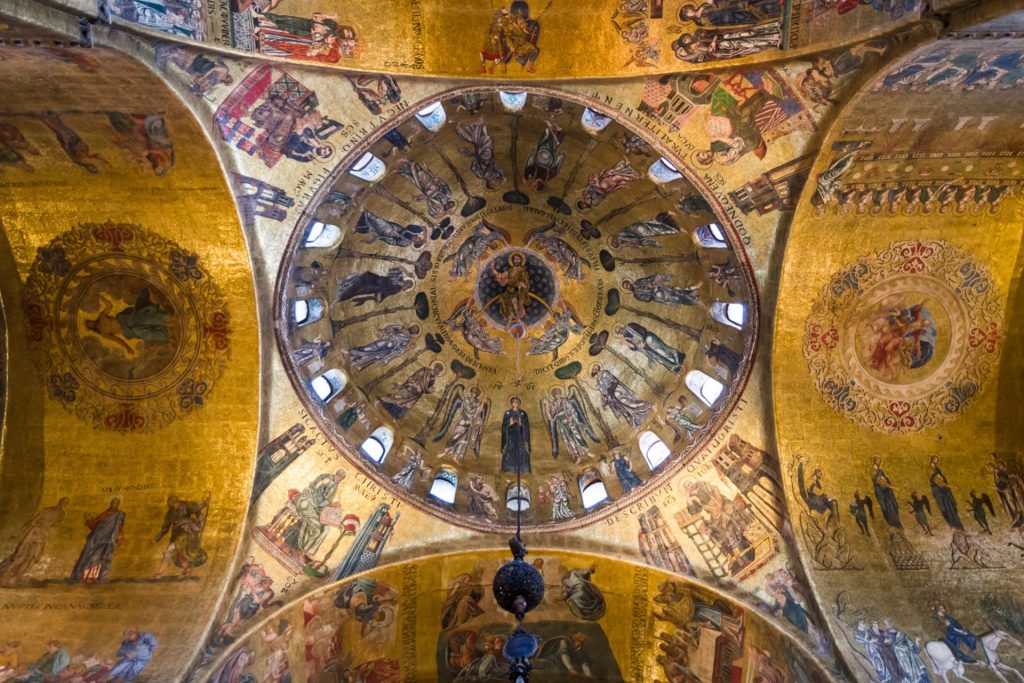
Venice highlights

30 minute proposal gondola ride in Venice

Bike tour in Lido
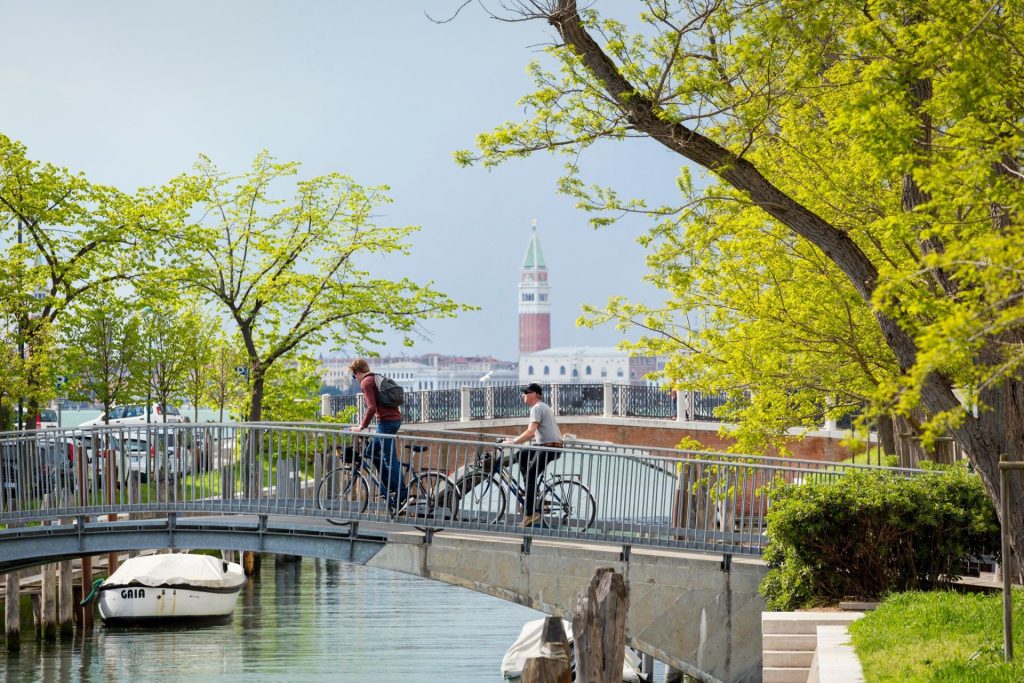
Fabrics and Perfumes

Cannaregio District
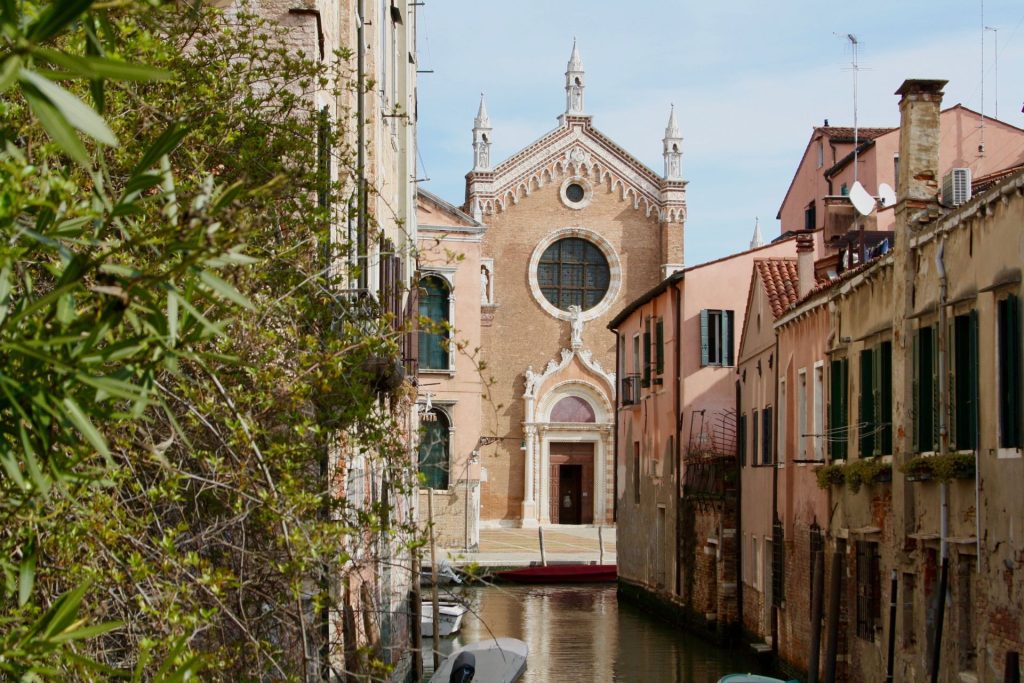
You’ll receive monthly our newest programs and offers. If you are a business owner you’ll have the opportunity to earn your commission!
I Accept the Terms & Conditions and to receive your newsletter

Cancellation Policies
Terms & conditions, newsletter archive, events in venice.
- +39 0415283547
- Support 24/7: +39 3478471794
- [email protected]
Copyright © 2023 Destination Venice
We use cookies to give you the best experience on our site.
- Work With Me

- Central America
- South America
- Solo Travel
- Budget Travel
- Digital Nomad Life
- Work Exchange
- Foodie Experiences
- Responsible Travel
- Winter Travel
- Backpacker Accommodation
- Accommodation In the UK
- Hostel Tips
- Hostel Packing List
- Work as a Hostel Volunteer
- Work in Exchange for Accommodation
- Travel Websites to Book Your Trip
- Travel Planning Checklist
- How to Travel for Free
- How to Save Money While Travelling
- Carry On Packing List
- Long Haul Flight Essentials
- Campervan Packing List
- Flight Tips
- Solo Travel Tips
- Accommodation
- Travel Insurance
- Packing Lists
- Eco-Friendly Travel Products
- Carry On Backpacks
- Backpack Essentials
- Filter Water Bottles
- Camera Gear
- Camping Gear
- Gifts for Travel Lovers
- Backpacking Gifts
- Hiking Gifts
- Campervan Gifts
- Beach Gifts
- Personalised Travel Gifts
- Small Travel Gifts
- World Map Gifts
- Gift Experiences
- Privacy Policy
Backpacking in Europe , Backpacking in italy , Responsible Travel , Travel Tips
- How to Be A Responsible Tourist in Venice
Venice is a beautiful city, there is no doubt about that, but over the past few years, Venice has suffered the effects of over-tourism. 2020 changed all that of course, but now tourists are returning to Venice it is important to do everything we can to preserve the city. I would love for everyone to be able to visit Venice and enjoy the experience, so without simply telling people not to go there, here are some ideas for how you can be a responsible tourist in Venice and visit Venice sustainably.
This website contains sponsored and affiliate links. If you click through the links on this page and make a purchase, I may earn a small commission. As an Amazon Associate I earn from qualifying purchases. Thank you for your support. [Learn more]
Know Before You Go to Venice
Before travelling to Venice, check if you have to pay the Venice Access Fee, which applies to day trippers to Venice on certain dates starting in spring 2024. This official page has more information.
Overnight guests do not have to pay the fee, as they already have Tourist Tax included in their accommodation. If you need accommodation in Venice make sure you book in advance as hotels can sell out.
🛌 MY FAVOURITE CHEAP HOTELS IN VENICE:
$$ Hotel Antiche Figure – opposite the station, friendly staff and great service.
$ Albergo Marin – great value for its location next to Grand Canal close to the railway station.
$ Ostello S. Fosca in the centre of Venice or Anda Venice a fantastic hostel in Mestre
⭐ TOP 3 VENICE ACTIVITIES TO BOOK IN ADVANCE:
1. Doge’s Palace Reserved Entry Ticket – the most popular activity in Venice
2. Grand Canal Gondola Ride with App Commentary – great for solo travellers
3. Burano, Torcello & Murano Boat Tour w/Glassblowing – the top day trip from Venice
🚌 Pre-book your transfer from Marco Polo Airport to Venice by bus or water taxi
Plan Your Trip to Venice Responsibly
Check out this short video with my top tips, and read on for more details:
Visit Venice in the Off Season
Venice is a hugely popular destination, so try to plan your visit to avoid peak times around summer and other school holidays. Venice is also popular as a weekend destination, so if you are able to take time during the week and avoid the weekend you will find it much quieter.
Of course, there are some special events when the city will be packed such as Carnival in February but choosing a quiet time to visit Venice can make a huge difference to your trip.
Spend More than a Day in Venice
Unfortunately, many visitors only spend one day in Venice , so they rush around, doing the same things as every other day tripper does – St Mark’s Square, a Gondola ride, Rialto Bridge…. However, take your time to explore Venice and other islands around the Lagoon and you will discover far more than the average tourist.
READ MORE: How Many Days in Venice is Enough?
Don’t Follow the Crowds
Certain areas in Venice are more popular than others, so expect St Mark’s Square, Rialto Bridge and the streets between them to be very busy. Instead of blindly following the crowds, if you see a quiet street, walk down it and take the scenic route. Venice is a wonderful city to get lost in, so explore the quieter neighbourhoods away from the main attractions to catch a glimpse of Venice without the crowds.

Take a Tour with a Local
If you take part in any tours or experiences while you are in Venice, make sure that the guide is a local, so you are putting money back into the community. Not only do local people know all the best places to visit, but they can also share with you a wealth of information that you simply won’t find in any of the guidebooks.
I did a glass making class with a local craftsman and enjoyed a Cicchetti food tour with a lovely local lady, so I felt confident my money was going to the right place.
Try to stick with a small group or private tours, although this can push the price up, it’s much more enjoyable strolling around Venice when there aren’t a hundred of you following someone waving a flag.
Taste the Local Food and Buy at the Market
Although you will find fast-food joints like McDonald’s and Burger King in Venice, skip the burgers and try some of the local specialities. The food in Venice is delicious, and it can be cheap too if you stick to local restaurants and avoid the tourist traps.
READ MORE: What to Eat in Venice
Buying fresh food to cook back at your accommodation is also a wonderful opportunity to try local fruit, vegetables and seafood. Markets on Venice are dying out as the local people move away, so supporting the stalls will help to preserve them for generations to come. Head to Rialto Market in the morning or buy something from the market stalls you’ll see dotted around the city.

Be Respectful of People Living in Venice
It can be frustrating having thousands of tourists right outside your front door (I know from living in Barcelona’s Gothic Quarter). Be mindful of local people and of fellow tourists as you explore.
The main streets in Venice get very crowded, and when these streets are narrow it creates human traffic jams. Stick to the right-hand side (as if you were driving in Europe or the USA) so both lanes of traffic can keep moving.
Of course, everyone wants to take photographs and admire the views from the bridges but be considerate to other people and don’t block the bridges while you pose.
Explore the Veneto Region
Venice isn’t the only destination worth exploring in Veneto. Stay in Venice Mestre and use it as a base to explore the Veneto Region by train. You can easily get to destinations like Padua, Treviso, Verona and Lake Garda, as well as plenty of rural areas such as Prosecco-making vineyards!

Choose Your Accommodation Wisely
Try to book sustainable accommodation. There have been complaints about Airbnb pushing up rental prices so local people can’t afford to live in Venice anymore, so avoid booking a whole apartment through Airbnb. There are some lovely private rooms in locals’ homes which you can book instead, or stay in a hostel.
Hostels have less impact on the environment per person than a hotel, as the dorm rooms are shared by more people and they need less heating, lighting and electricity than individual hotel rooms. I stayed at the Wombat’s Hostel in Venice Mestre, a lovely hostel which has sadly closed (hopefully temporarily) due to the crisis this year. If you are visiting Venice on a budget , check out the other hostels in Venice on Hostelworld .
FIND A HOSTEL IN VENICE
Reduce your Plastic Use in Venice
We should all aim to reduce our plastic waste every day, not just while we’re travelling, but Venice is particularly vulnerable to the amount of waste as everything has to be transported off the island. Boats come by to collect the rubbish, but in many places, the bins fill up before the rubbish collectors have time to come and pick it up.
Eat Gelato in a Cone
I would never suggest not eating gelato in Venice, but instead of ordering it in a cup with a (usually plastic) spoon, order a cone so nothing will go to waste. Delicious and environmentally friendly!

Bring Your Own Water Bottle
Instead of buying bottled water, bring your own refillable water bottle with you, and fill up at one of the many water fountains in Venice. Most of the Campos (squares) will have a water fountain where you can fill up, so every time you see one just top up and you’ll save plastic and money! I love my Water to Go bottle ( read my full review here ) and take it everywhere with me – including to Venice.
If you haven’t got a reusable water bottle yet, I have partnered with Water-to-Go to offer all Tales of a Backpacker readers a 15% discount on the purchase of a Water-to-Go bottle so you can save even more money!
ACTIVATE YOUR DISCOUNT
Bring a Cotton Bag for your Souvenirs
When you’re shopping at the market for food or in shops for something to buy from Venice, bring your own reusable bag so shopkeepers don’t have to give you a plastic bag to carry all your goodies.
Say No to Plastic Straws
Some restaurants and bars are already reducing their plastic use by not offering straws with their drinks, while others still add them automatically. Make sure you request drinks without straws, and if you need to bring your own bamboo or metal straw you can easily find them online.

Avoid the Cheap Plastic Masks
Although I wholeheartedly recommend buying something from Venice as a souvenir, skip the cheap imported plastic masks and spend the money on authentic Venetian souvenirs like a traditionally made mask which you will treasure forever.
You could even make your own at a mask workshop, try some locally made grappa and choose your favourite to take home, or choose from all sorts of products made by local artisans – just skip the plastic tat.
READ MORE: What Souvenirs to Buy in Venice
Follow the Rules to #EnjoyRespectVenezia
Venice City Council and the Municipal Police have some rules in place that must be followed in line with their campaign #EnjoyRespectVenezia , and you risk a fine if you do any of these
Don’t eat or drink sitting on the ground or outside the designated areas – Fine: €100-€200
Bringing a picnic is not illegal, but you have to find a suitable place to eat it like the public parks and gardens or a bench in a piazza – you can’t sit on the ground or on church or building steps in any of the piazzas in the city.
Don’t Bathe, Swim or Dive into the Canals – Fine €350
This is very dangerous due to the amount of boat trafffic, so don’t be tempted to go for a swim. If you want to hit the beach in Venice, take a Vapretto to Lido or Pellestrina islands, which has miles of sandy beach to enjoy.

Don’t walk around bare-chested or in a swimsuit – Fine: €250
Save your swimsuit for the beach. No-one wants to see that much of your body while admiring the architecture, no matter how hot it is!
Don’t bring a bicycle onto the island – Fine: €100
This applies to the ‘main’ island of Venice, and includes leading the bicycle by hand. You can ride a bike on the mainland around Mestre or on the island of Lido, where you can find bicycle hire shops. If you want to take a bike from the mainland to Lido, you’ll need to take the ferry as bikes aren’t allowed on the vaporetto waterbuses.
Don’t litter or dump rubbish in public areas – Fine: €350
Just don’t. There is enough waste left behind by visitors, don’t make it harder for people to clean up after you!

Don’t feed pigeons or seagulls – Fine: €25-500
As fun as it might be to stand in St Mark’s Square covered with flying rats, please don’t feed the pigeons. There are often people selling birdseed in St Mark’s Square to tempt you, but don’t do it – you could be landed with a heavy fine, and it’s gross. As for the seagulls, if you are eating a picnic (in designated areas) then watch out for them, they might swoop down and steal your food!
Don’t camp in public areas – Fine: €200
Camping is not allowed on Venice Island so don’t try it!
Don’t deface public or private property with graffiti – Fine: €400
Street art is very rare in Venice for this reason, so don’t be tempted to create your own masterpiece on the walls of the city.
Don’t place locks on bridges or monuments – Fine: €100
You know those love locks that people attach to bridges to show their love will last forever? The weight of the locks can do serious damage to the bridges they are attached to, so find another way to show your undying love!
Don’t buy counterfeit goods from illegal sellers – Fine: €100-7000
It isn’t always easy to spot counterfeit goods, but in Venice, if it’s too good to be true, it probably is. If you are looking to buy souvenirs in Venice, avoid cheap knockoffs and support local artisans who handmake their goods like masks or glass jewellery.
If we all follow these simple suggestions when we visit Venice, hopefully we can preserve and enjoy the city for years to come! Do you have any more tips for making a trip to Venice more sustainable? Comment below and let me know what you think!
Where to Stay in Venice
Hotels in venice.
Although staying somewhere close to the train station isn’t as convenient for St Mark’s Square, you won’t have to worry about moving heavy cases around the streets of Venice.
Hotel Antiche Figure , for example, is just opposite the station and gets great reviews for the friendly staff, good location and great service.
Albergo Marin is a good choice to get a mix of value and location, next to Grand Canal and 10 minutes walk from the railway station.
B&B Ca’ Bonvicini is a lovely bed and breakfast hotel just 7 minutes walk from Rialto Bridge if you would rather be more ‘in the middle’ of the action. It gets great reviews for the traditional Venetian decor and friendly staff.
FIND A HOTEL IN VENICE
Apartments in Venice
There are lots of options for Airbnb in Venice, but given how many locals have had to leave their homes, I would advise against getting a whole apartment for yourself. A private room in a local’s apartment will help them to pay the rent, and help you to really feel like a local in Venice, as well as saving you money.
This room in Venice with a terrace , for example, is a short walk from the train station and walking distance from the main sights in Venice. Alternatively, try Homestay.com which has some options for private rooms in apartments in Venice, Mestre and surrounding areas.
If you do want a whole apartment, you can rent full homes on Vrbo like this lovely historic apartment that is close to the centre of Venice, or this apartment which has its own garden! Booking.com also has a large selection of vacation rentals available too, browse available apartments here .
FIND AN APARTMENT IN VENICE
Hostels in Venice
I stayed at the fabulous Wombat’s City Hostel Venice Mestre , which is now sadly closed due to the pandemic. It may reopen in future, but it’s not looking good at the moment. However, there are other hostels in Venice if you are visiting Venice on a budget , take a look at these options:
- Anda Venice : a trendy hostel a short train ride from Venice in Mestre with excellent reviews
- Ostello S. Fosca in the centre of Venice
- Combo Venezia , set in the grounds of a 12th Century convent.
You can also take a look at all of the hostels in Venice on Hostelworld .
Want More Sustainable Travel Tips?
- How to Reduce the Carbon Footprint of Your Flights
- The Best Water Filter Bottles for Travel
- Water to Go Review – The Best Filtered Water Bottle?
- How to Visit Barcelona Responsibly
Like this post? Pin it to read later:

Hi! I'm Claire Sturzaker, a 30-something foodie traveller who loves to enjoy the best of a destination without breaking the bank. I'm here to help you and all women backpackers to plan their best budget travel adventure. I am an avid supporter of female solo travel, and took my first solo trip 20 years ago! I love to write about travel, hostels, backpacking and van life.
Leave a Reply
Your email address will not be published. Required fields are marked *

Venice sustainable tourism
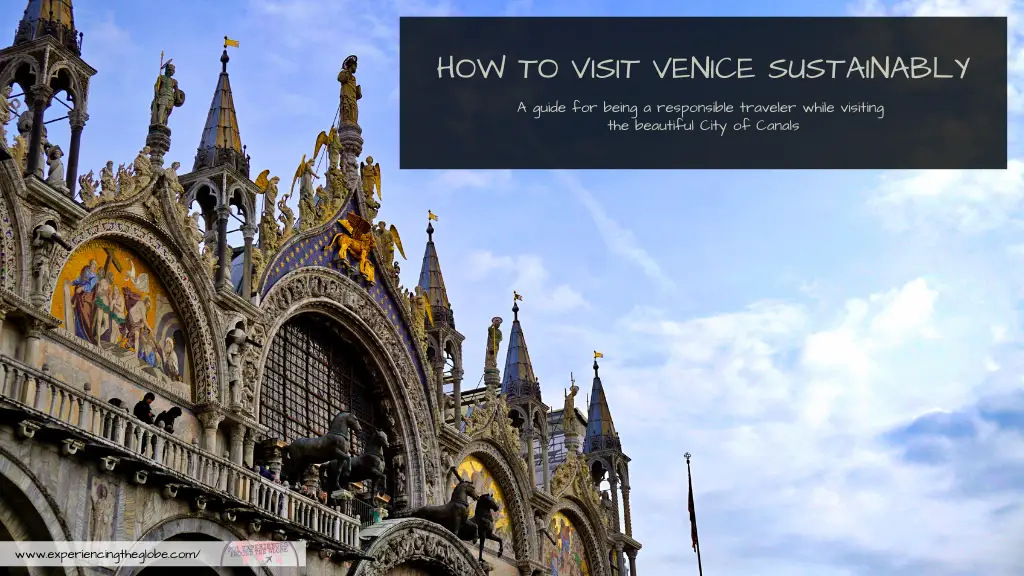
Venice is one of the most special places in the world. I think pretty much everyone has Venezia in their travel bucket lists, and it’s absolutely worth the spot. But the romanticism of walking alongside the canals, watching the gondolas go by, admiring St. Mark’s Cathedral and Rialto bridge has a price on the city itself and its inhabitants. There’s a serious negative impact of tourism in Venice due to overtourism . But don’t despair! There is a lot the millions and millions that are drawn to the capital of the Italian Veneto region each year can do: visit Venice sustainably . Here are all the steps you can take to ensure Venice sustainable tourism, so the city can be preserved for generations to come.
I seriously dislike when there are thousands of people around me while traveling. You can’t enjoy the place, you can’t appreciate what you’re seeing, you can’t meet locals, you can’t even take a decent picture. Now imagine how bad that is for the people that live in the place.
That’s why traveling sustainably is of the outmost importance. We need to protect the places we visit, we need to be mindful of the locals, and we need to help the community with the money we spend. Venice is on top of the list of destinations around the world affected by overtourism, so it’s especially crucial to be conscious of our behavior to be part of the solution and not part of the problem.
Venice sustainable tourism tips
What can you do, you ask? Simple. Follow all these suggestions and you’ll be the perfect traveler!
Travel off season
If there’s only one thing you do to help the cause, let it be this one. During summer you won’t be able to walk, it’s that crowded! Off season will still be full of people, but it’ll be a much more tolerable experience, for you and the locals.
This year I visited in January and it was as enjoyable as Venice gets. Sure, you might get acqua alta , when the tide peaks flood the city. If you’re flexible, you can always swipe cities around –visit Verona or Padova while you wait it out. Or if you’re adventurous, embrace it and visit anyways. It’ll be a completely different experience (just be careful and follow the instructions of the locals on what to do and not to do).
During winter there are also an astonishing number of sunny days, even hot ones! A few years ago I passed through Venice in February and I was wearing only a t-shirt –it get’s that hot, so it’s like visiting in a mild summer, but without the crowds. Perfect, ah?
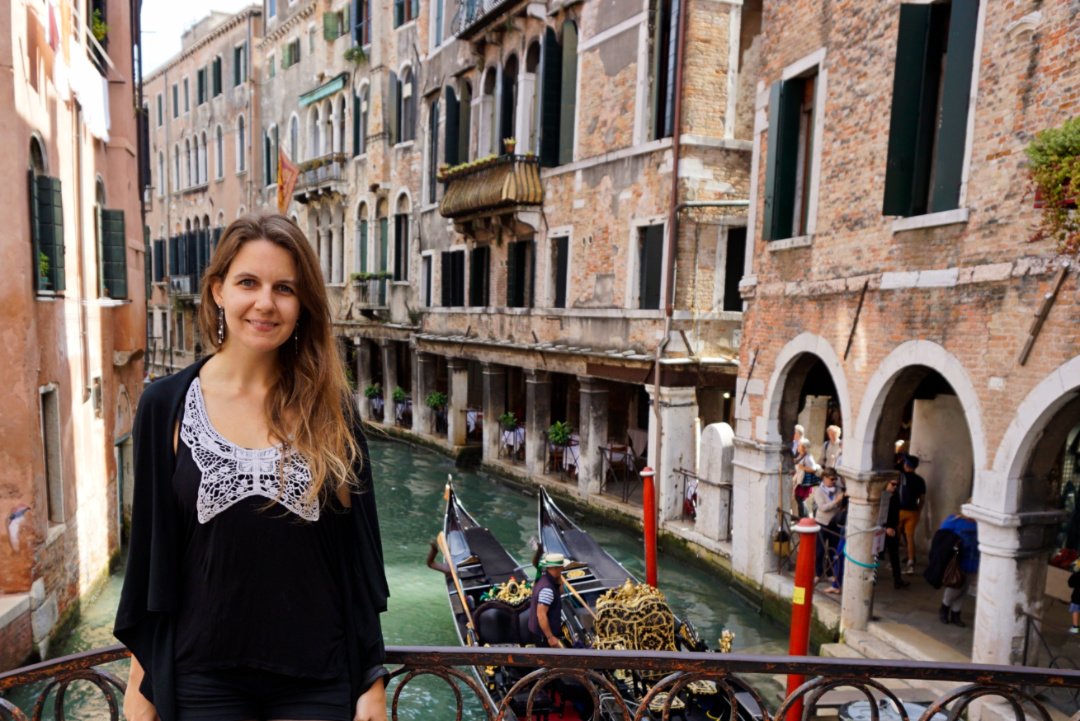
Don’t go as a day trip, even less in a cruise!
I know cruises can be an excellent way of seeing more when you have limited time. They are also a comfortable way of traveling, and even a convenient one if you find a good deal. But, let’s face it, from the port cities’ perspectives, they’re the worst! Thousands of people that don’t spend a dime in the place are just an annoyance. Stay and contribute to the local economy instead. The added value for you is that you’ll have the city to yourself when the day trippers are gone.
View this post on Instagram A post shared by Coni 🌎💕📷 (@experiencingtheglobe) on Mar 11, 2019 at 2:14pm PDT
If you’re staying, search for accommodation in Mestre
I know you’re picturing a balcony over the canal, so you can see the gondolas before going to bed, but it’s not worth it. The suitcases being dragged all over the island are damaging the streets, and you end up suffering trying to pass through the crowds looking for your accommodation.
Mestre is still Venice, only a 1,35€ and 9 minutes train ride away from Santa Lucia. You’ll likely to arrive there anyways, so why not leave your suitcase/backpack behind, and go explore hassle free? Besides, Mestre itself is lovely and much cheaper!
Take a train from wherever you’re coming
Trains are much more sustainable than airplanes, cars and buses in terms of CO2 emissions, energy consumption, use of space and noise levels. Together with being a more responsible traveler , a train ride will allow you to see more of the country, and it will be a perfect place to do some people watching, and even make new friends –both locals and fellow travelers. Trenitalia is not the most reliable company in the world when it comes to schedules, but I notice an improvement in every new trip to Italy, so give them a chance.
Always select a registered hotel or apartment that complies with the local laws
Airbnb has become the poster child of overtourism, so make sure that if you book through that platform, the host complies with the law. A simple way of knowing is that they should charge you a city tax, and ask for your passport or ID card to register you.
Particularly in places like Venice, it’s better to go to sites like Ecobnb, that only offer sustainable accommodation. If you’re staying in a hotel, go for locally owned ones instead of big chains.
Take a bag for your trash when walking around the islands
This one is self-explanatory: you can walk for hours in some areas without running into a single trash can. Keep your garbage with you, please don’t throw anything to the floor or the canals! What I do is to take a Ziploc bag, so after I throw my trash away, I quickly wash it and reuse it.
Carry your own water bottle
In Venice (actually everywhere in Italy) tap water is perfectly safe, so don’t waste money and don’t overpollute, top your bottle up in the morning and voila! There’re some points around the city where you can refill it. Say goodbye to single use plastic!
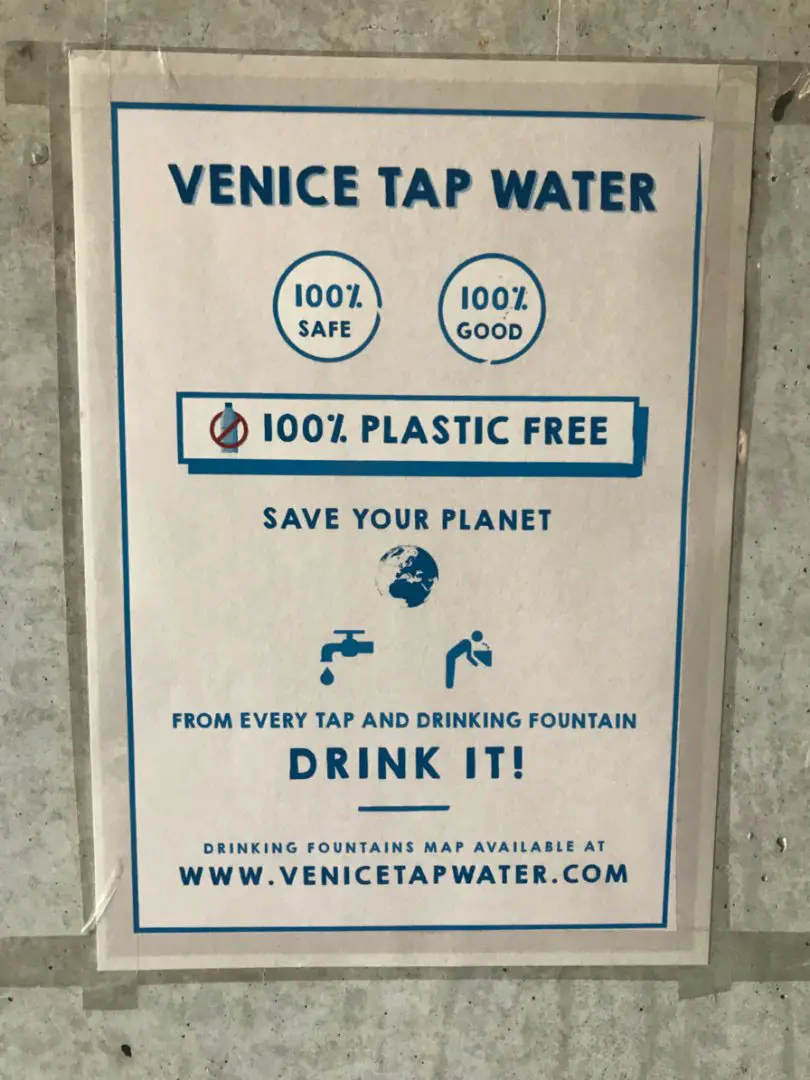
Eat locally
Find an authentic panificio (bakery) or osteria (eatery) where there’s proper Italian food, with seasonal ingredients. Don’t worry, there’re plenty. Vegetarian options are easy, and even vegans can eat fine in Venice. Same goes for drinks. Find a bacaro (typical Venetian bar) or any restaurant that doesn’t have a ‘tourist menu’ (the more Italian you hear, the better it’ll be) and enjoy an Aperol spritz or a glass of local wine. You’ll get to experience Venice as a local, and you’ll contribute to the economy.
When in Venice, do as Venetians do: order cicheto (Venetian-style tapas) and ombra (a small glass of house wine).
Choose the alleys with less people
Everywhere you go in the city you’ll find hidden treasures. Why not explore where there are less crowds? Just stop following everyone! Sure, you have to see the main sights eventually, but spend some time away from them too.
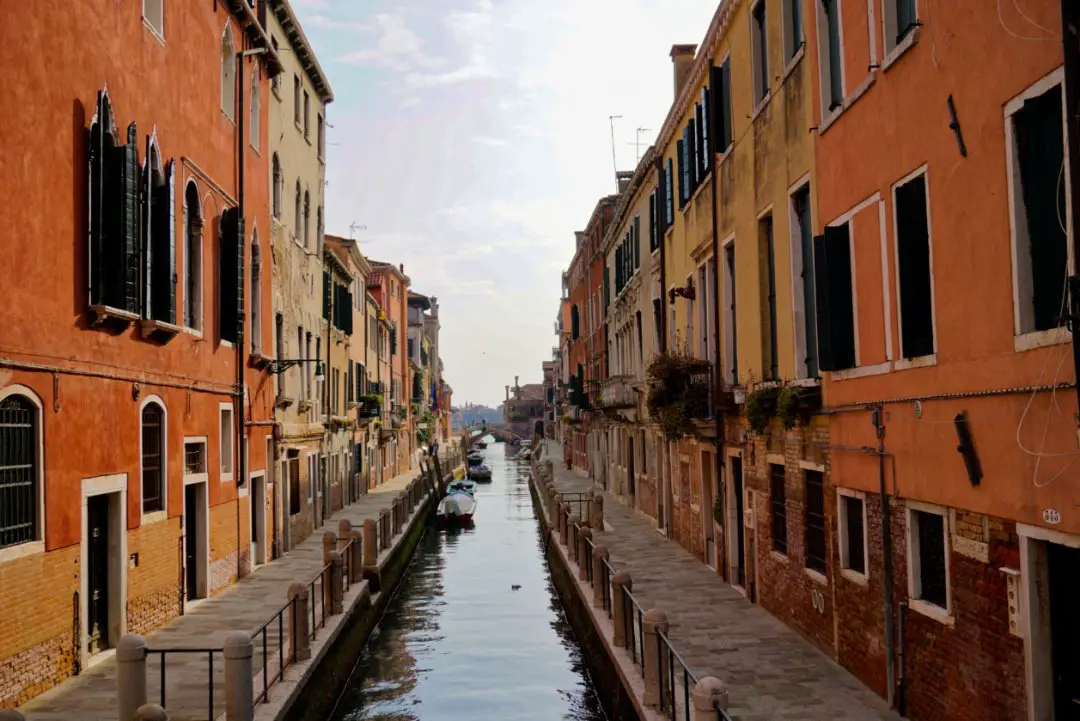
If you’re unsure about how to explore the city on your own, book a tour with a local that will take you to see all the hidden gems. Here are some suggestions:
Limit the time you spend on St. Mark’s square and cathedral
St. Mark is a magical place, like nothing you’ve seen before, so of course you’ll want to spend time taking it all in. But remember that every other visitor thinks exactly the same. Go early in the morning or late in the evening to find the place with the least amount of visitors.
As for the basilica, it opens from 9:30 am every day, except from Sundays, when it’s open at 2 pm. There’s always a queue, but it goes fairly fast. If you have a backpack or any bulky bags, there’s a free cloakroom around the corner where you can drop them. You won’t be able to enter with them. Remember that photos are prohibited, and that –even though most of us visit for the history, art and architecture– it’s a church in a very Catholic country. So make you visit shortly, dress appropriately, be respectful, and be quiet.
Visit other islands of the lagoon
Murano, Burano, Torcello, Lido, San Francesco del Deserto, or any of the 118 islands across the Sestieri… you have way more options than time to visit them! All of them are special in their own way –discover which one is the one for you!

Buy original Venetian products from artisans’ workshops
The artisans will be happy to teach you about their trade (the mask makers are interesting and fun to watch), and you’ll get a one-of-a-kind item. Don’t get anything from illegal vendors. And avoid anything made in China. You can get those souvenirs when you visit China. In Italy, stick to Italian.
If you want a more “hands on” experience for your souvenirs, I’d suggest any of these original tours:
Be mindful when taking photos
I’m the kind of person that can spend an hour just standing in a particular spot waiting for people to pass to get the perfect shot. But I know better in Venice (and in every other place that suffers from overtourism). Sustainable travel photography is important. The picture of a bridge with the gondola passing by can be gorgeous, but if it doesn’t happen spontaneously, let it go. Spend just a minute in your shot and continue walking. Actually, standing on bridges can get you in trouble. The fines go from 25€ to 500€.
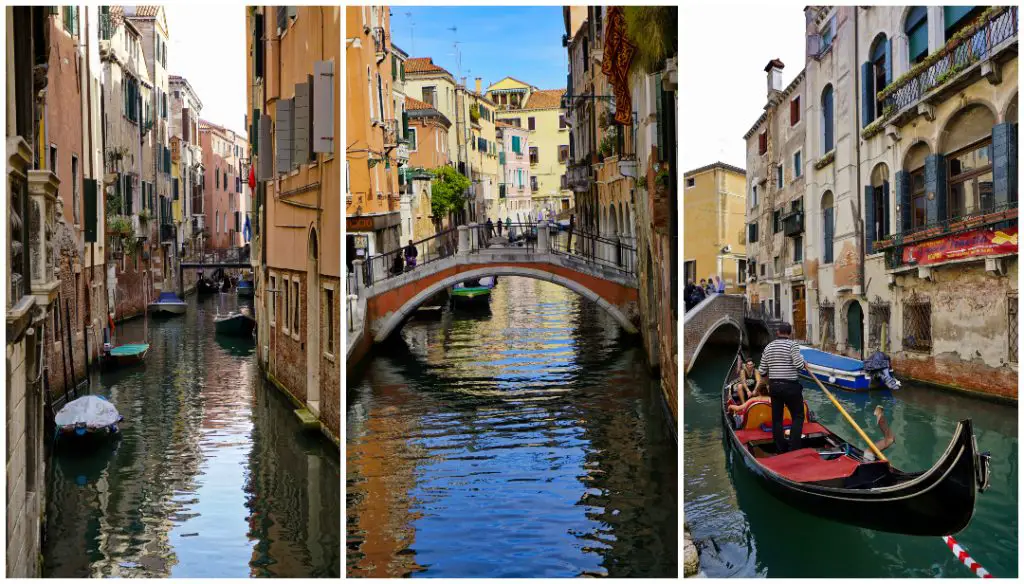
Don’t sit on the floor or in any step
There’re fines for siting in the steps of churches, bridges, wells, monuments and banks of canals. These are meant for people to walk, not for you to have a picnic or a rest. I know it’s tempting to buy some food to go and enjoy it with a nice view, but in Venice it’s a no-no.
All the no-nos in Venice Swimming in canals Making picnics in public areas Pausing too long on bridges Dropping litter Riding or wheeling bikes Standing or lying on benches Busking or making art without a permit Attaching “love locks” to monuments and bridges Climbing on trees, buildings and monuments Getting changed in public Sightseeing topless or in swimwear Feeding birds Making too much noise, whether at night or during siesta time (1-3 pm)
Don’t feed the pigeons
This goes for wildlife everywhere. But in Venice is banned, so throwing around a few breadcrumbs could cost you. The fines start from 50€.
Even though it used to be a Venetian tradition, the issue is that the city is a UNESCO World Heritage Site, and the pigeons are destroying facades and statues by carving into them to reach little pieces of food that got caught inside, and by pecking the most exposed parts of the marble seeking for calcium carbonate.
It’s also a matter of public health. It’s estimated that 130.000 pigeons live in the historical center, which is 40 times more than the optimal concentration per square kilometer.
So don’t be tempted by the photo-op. There’re still vendors offering breadcrumbs. Just say no.
Don’t put padlocks on the bridges
I know it doesn’t get more romantic than Venice, but choose a different way to display your love. Part of the railings of the Pont des Arts in Paris collapsed a few years ago due to the weight of the growing number of “lovelocks”. Venetian authorities decided to put a stop to the practice before the same happened around the canals. And that’s great! Lovey-dovey couples will have to create a new and more sustainable trend.
Learn a few words in Italian and always wear a smile
This tip goes for every place you visit. Basic words of the local language will take you far everywhere, and even more if you say them with a smile. But in Venice locals tend to be fed up with tourists, so you can make their day with something that’s quite simple. You’ll do with ‘ ciao’ (hello), ‘ grazie’ (thank you), ‘ per favore’ (please), ‘ buongiorno’ (good morning), ‘ buonasera’ (good evening), and ‘ arrivederci’ (goodbye).
View this post on Instagram A post shared by Coni 🌎💕📷 (@experiencingtheglobe) on Jul 18, 2018 at 1:40pm PDT
Remember that this is actually a city, not an open-air museum
People live here. They go to school, markets, work, and, in general, go about their daily life –but with a million people stopping them with their selfies. Literally, there’re about 55.000 residents in the historical center and 20 million tourists per year. Can you imagine having thousands of disrespectful visitors in your doorstep all year around?
This is even worse in some periods of the year, like Carnevale , Regata storica and Festa del Redentore when the tourism mass can reach up to 120.000 people per day.
One big consequence has been the shrinking of the local population. It’s common nowadays to hear the remaining locals say that there is no other possible future for Venice than one of a Venetian-less theme park for adults.
The city itself hasn’t changed in centuries. The architecture and the traditions have remained for hundreds of years. Now it’s in our hands, as tourists, to prevent a theme park from happening, and to allow the future generations to witness the wonders of Venice too. Be mindful, kind, and behave properly.
If you want a crash course on the city’s history (and to see how unchanged it is), visit Gallerie dell’Accademia . The paintings in the museum will let you see that the place is virtually the same as it was six hundred years ago. I’m sure that learning about the place will help you to value it even more.

Show that you care! The Comune di Venezia designed a Venice sustainable tourism awareness campaign . Use the hashtags # EnjoyRespectVenezia and # Detourism to spread the word!
Liked it? Want to read it later? Pin it!

Did you like what you read? You can show your appreciation by buying me a coffee 🙂 Your support will ensure I keep bringing you stories and insights from around the world! Thanks so much!

30 thoughts on “Venice sustainable tourism”
Thanks for sharing such a great post, glad to see these amazing ideas to be a responsible traveler in Venice. I subscribed so I don’t miss any post from you.
I’m so glad you enjoyed reading, and that you learnt a bit about sustainable tourism. Expect a lot more on that topic in future posts. And thanks for subscribing! 🙂
I’m just in love with Italy and ready to return there again and again, at least reading your blog. Venice is an amazing city … You have written a terrific post! Your photos are gorgeous! Thanks for sharing!
Awww! Such a sweet comment! Thanks so much, Victoria! 💕
Very different and much-needed perspective on Tourism in popular places like Venice. Thanks for sharing all these great tips. I’ll spread the word too!
Thanks, Sana! I’m glad you want to share it too, it’s indeed such an important topic!
This is such an important post! I’m going to share it to help spread the word.
Awesome! Thanks, Krystianna!
Sustainable tourism is so important. We’ll keep these in points in mind when we visit Venice. Thanks for the great guide!
Hannah | https://getlost.blog/
Thanks so much, Hannah! Hope the guide helps on your trip to Venice! Safe travels!
Great tips – an important issue, especially in a city that is flooded by tourists in the high summer season! 🙂
Thanks, Loredana! 🙂
This is so important it’s wonderful over there and so crowded by a lot of people who not respect the environment. Thanks a lot!
People think it’s an attraction, they forget it’s a city. Hope this helps them noticed! 🙂
It’s really important to share the word about this! It’s a nice place but so crowded! Thanks a lot!
Hope I contributed a little bit towards that end 🙂
Fantastic post!! Definitely need more posts like this to encourage people to travel sustainably and all your tips are spot on. 🙂 I’m really glad you’ve pointed out making sure your airbnb is legit, as that’s such a huge issue in cities now.
Awww!Thanks, Clazz! I’m really hoping to create awareness. Once people notice the (most of the time) unintentional damage they’re making, they change their behaviors 🙂
This is all so true. What a sad future if Venice no longer has Venetions. Barcelona is starting to have the same problems.
Barcelona and Venice are the most known places that suffer from overtourism, but there’re plenty others. I’d dare to say that the problem in Dubrovnik (Croatia) is even worse! And it’s up to us to make it better!
This is so important! I’m going to be travelling more in 2020 than I have in the past few years, and I want to stay really cognizant of sustainability. Beyond environmental concerns, I think it’s really important to remember that we are guests in someone else’s city. Will definitely come back to reference this!
That’s an amazing goal, Adriane! Take a look at my content about sustainability. There are so many simple things we can do to help, but we’re just not aware of them. And don’t hesitate to reach out if you have any questions!
This is such an important topic! Thank you for writing about it – there should probably be guides like this for every overtouristed (don’t think that’s a word, but making it one) place! Really love the last point about remembering that people live there – I think it can be easy to forget that when you see a place all over social media. You start to see it as an attraction rather than somewhere people actually have real lives.
Thank you so much for your words, Kelsey! Sustainability is super important to me, so I’m happy to spread the word! I’m thinking of making this a series of guides, so any suggestion of other overtouristed place you want to read about is more than welcomed! Love the word, by the way -I’ll start using it!
Lovely! I love your writing to try to ask others travel in Venice with more thoughts and consciousness. Somehow, I feel the impact on over-tourism is happening everywhere in Italy, and unfortunately, it seems not that easy for the Italians (especially from bigger and complicated city with more political powers) to handle everything very much well. When I saw the marks on Colosseum, I felt so sorry about it. Hope more people can read this post 😀
Awww! Thanks, Menty! I completely agree that is not a problem only of Venice, many other places in Italy are also seeing the consequences. That’s why I encourage people to travel off the beaten path. There are countless places in Italy where you only see locals. It’s such a beautiful country, with so much to explore… I wish people would see more than the typical loop, but I can understand it for first-timers. Venice is a must. Hope they visit in a sustainable way!
These are all incredible tips! Thank you. Traveling more sustainably is actually something I’m working on in 2020 and I wouldn’t have though of some of these things on my own.
Thanks so much, Stephanie! And what a great goal for 2020! Make sure to take a look at my other posts on sustainability. Even with little actions, we can make a great impact, but sometimes we just don’t know where to start ❤️
This is such a great post and so important for people to realize the effect that tourism has on this beautiful place. Thank you for a great share!
Thanks for your words, Michelle! Sustainability is really important to me, and it breaks my heart when I see travelers that can’t behave. Hope this helps!
Leave a Comment Cancel Reply
Your email address will not be published. Required fields are marked *
Save my name, email, and website in this browser for the next time I comment.
Let's go round the world in 201 experiences! Get tons of tips and inspiration in your own inbox.
Check our Privacy policy
Modal Header
Some text in the modal.
The Future of Travel and Tourism in Venice
Pauline Ronnet ponders whether the post-Covid shape of tourism in Venice will be more sustainable.
Venice is a microcosm of many of the global sustainability challenges facing the world today. Built on a coastal lagoon, the city and its natural surroundings exist in symbiosis as part of the same ecosystem. In this singular coexistence, the line between nature and infrastructure is blurred.
With climate change threatening to tip this balance, the negotiations around how human intervention affects the natural environment are more important than ever. In 2019, the city saw the worst floods since 1966 as a result of sea-level rises, physically damaging buildings and damaging the salt marshes which are crucial to the health of the lagoon.
Venice Overtourism
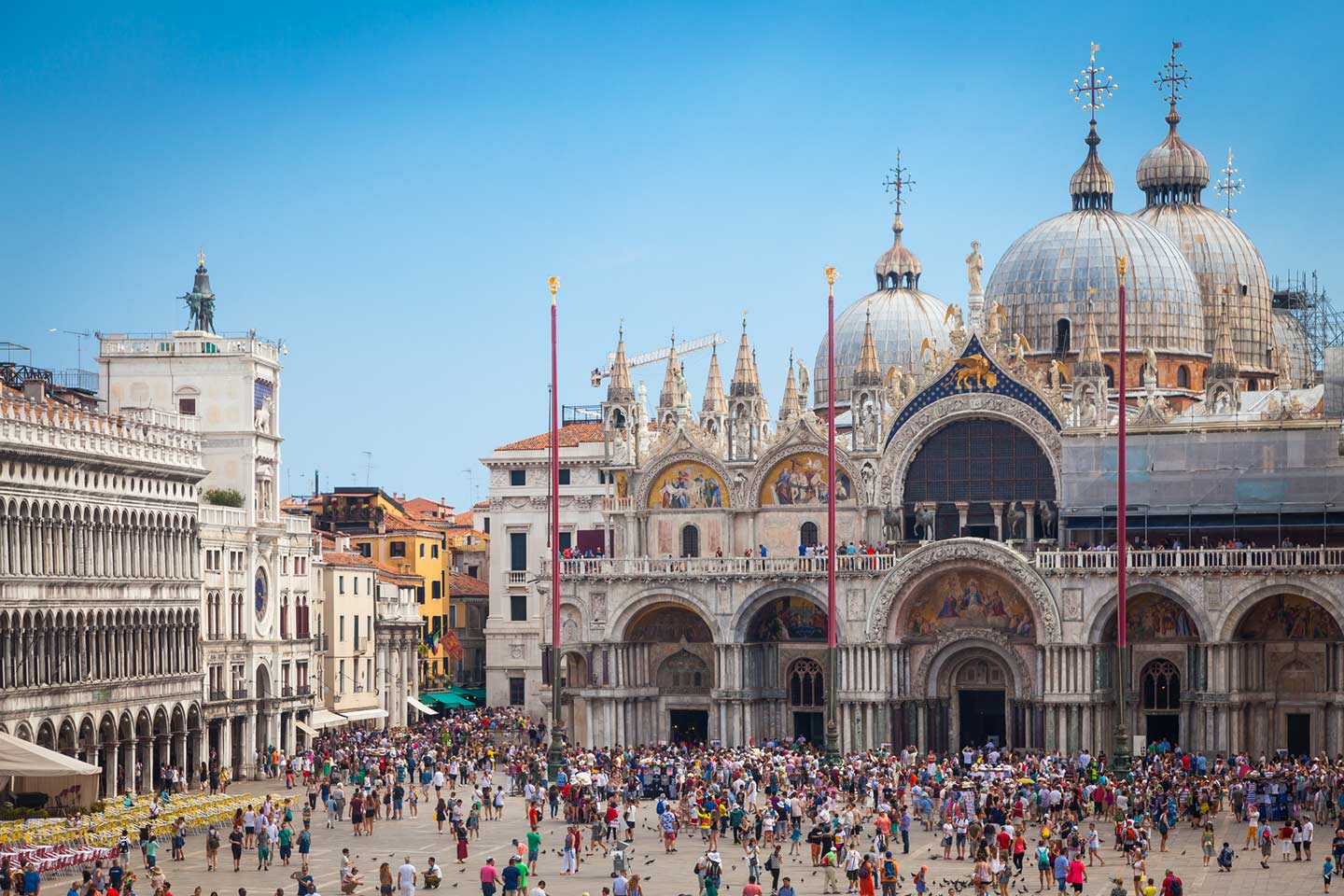
Moreover, overtourism is turning Venice into a ‘Disneyland attraction park’ as it is often described, rather than a living city. This has been facilitated by the rapid rise of cheap plane tickets, cruise ships and home-sharing platforms such as Airbnb and Booking.com.
In a pre-covid setting, day-trippers arrive en masse on polluting cruise ships to set foot in the city and visit the gift shops, then leave without having made any significant economic contribution. Those who stay one or two nights perpetuate the business of converting what could be family homes or low-rent properties into holiday homes for tourists, driving up property prices for locals.
Many of the city’s shops, bars and restaurants cater to tourists – rather than to Venetians – due to the strong economic incentive to do so, leaving few employment opportunities outside of the tourism industry. Over the decades, the situation has degenerated, causing large-scale depopulation as many Venetians desert the city to seek a higher quality of life elsewhere.
The Enemy Within
Earlier this month, Venetians have also found themselves betrayed from the inside when city mayor and businessman Luigi Brugnaro decided to keep the Venice’s museums closed despite the scheduled re-opening of Italy’s civic museums on the 15 January.
“Our museums depend principally on the tourists. There is a business logic, an entrepreneurial culture in making things work. Should I be ashamed of administering a public asset like a business enterprise, of making it profitable?” he said.
Jane da Mosto, CEO of the Italian NGO We Are Here Venice (WaHV), said, “The preemptive announcement of the Civic museums’ total closure for the coming months was disturbing because it overlooks the importance and significance of the museums as cultural assets. Visitors and exhibitions are just the tip of the iceberg in terms of real work invested in scientific research, cataloguing, development of learning, conservation and maintenance.”
As opposition leader Monica Sambo put it, this move sends the message that Venice’s amenities can “be considered relevant only to tourists”.
A Deathly Calm

With the tourists gone, the streets are quiet and the canals have gone from murky to clear due to the absence of motorised boats. Nature has made a comeback. Gondoliers count the fishes to pass the time, with no customers and no way of getting alternative employment.
Covid restrictions have had a disastrous impact on the city’s economy and have caused unemployment to be at an all-time high, exposing the lack of security in the current tourism model.
Although some initiatives have been put forward in recent years by the local administration in an effort to regulate Venice overtourism, these have been ineffective and have failed to address the root cause of the problem. One of the latest proposals is a tourist tax for day-trippers, which is set to be implemented in 2022, but which has been called “useless and damaging” by the Italian Minister of Tourism Gian Marco Centinaio.
A Sustainable Future for the Tourism of Venice
With the pandemic acting as a breaking point between the present economic crisis and the growing problems of the past decades, WaHV is pushing to use the pandemic as an opportunity to transition towards a more sustainable tourism model.

WaHV advocates for sustainable cruising and works on projects to increase alternative employment opportunities.
In a recently published report , ‘Whose city is it anyway?’, WaHV suggests that tourism should be regulated by introducing policy measures such as tax incentives to encourage the long-term rental of properties and subsidy schemes to support permanent residents and attract new residents.
“Our task now is to ensure that the città storica is reborn following this period of enforced hibernation – not merely resurrected as a facsimile of the former, ailing status quo”, it states.
The next few years will see whether tourism in Venice is indeed reborn in a more sustainable manner than before, or whether it will revert to business as usual.
Enjoy this post? Subscribe to our newsletter for monthly updates:
Explore topics.

Pauline Ronnet
Pauline is an intern at the sustainability mobility consultancy Fly Green Alliance, which works with stakeholders to commercialise sustainable aviation fuel for airlines. She grew up in France and has a degree in Biology from Imperial College London.
Read more posts by Pauline Ronnet →
Related Content:
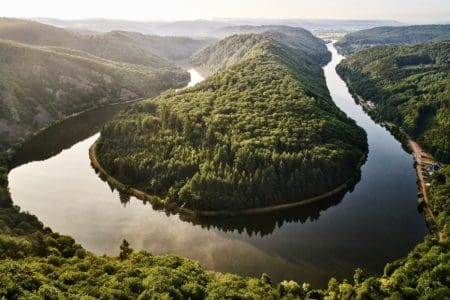
Leave a Reply Cancel reply
Your email address will not be published. Required fields are marked *
Explore Further
- Experiences
- Travel Destinations
- Southeast Asia
- Events & Festivals
- Opinion / Profiles
- Business Travel & Travel Industry
- Travel News
Travel Topics
- Travel Guides
Recent Posts
- How to Stay Connected When Travelling 17 April 2024
- What’s Wat on a Day Trip in Bangkok 17 April 2024
- Uses for Bulk Coconut Oil: An Extensive List 16 April 2024
- Getting Ready to Travel with a Wheelchair 16 April 2024
- Camaroncito EcoResort & Beach 15 April 2024
- A Weekend Guide to Hidden Gems and Local Favorites in Sacramento 13 April 2024
- History and Customs of the Isle of Man 13 April 2024
Stay up to date with notifications from The Independent
Notifications can be managed in browser preferences.
UK Edition Change
- UK Politics
- News Videos
- Paris 2024 Olympics
- Rugby Union
- Sport Videos
- John Rentoul
- Mary Dejevsky
- Andrew Grice
- Sean O’Grady
- Photography
- Theatre & Dance
- Culture Videos
- Food & Drink
- Health & Families
- Royal Family
- Electric Vehicles
- Car Insurance deals
- Lifestyle Videos
- UK Hotel Reviews
- News & Advice
- Simon Calder
- Australia & New Zealand
- South America
- C. America & Caribbean
- Middle East
- Politics Explained
- News Analysis
- Today’s Edition
- Home & Garden
- Broadband deals
- Fashion & Beauty
- Travel & Outdoors
- Sports & Fitness
- Sustainable Living
- Climate Videos
- Solar Panels
- Behind The Headlines
- On The Ground
- Decomplicated
- You Ask The Questions
- Binge Watch
- Travel Smart
- Watch on your TV
- Crosswords & Puzzles
- Most Commented
- Newsletters
- Ask Me Anything
- Virtual Events
- Betting Sites
- Online Casinos
- Wine Offers
Thank you for registering
Please refresh the page or navigate to another page on the site to be automatically logged in Please refresh your browser to be logged in
Venice reinventing itself as sustainable tourism capital
It may be now or never for venice, article bookmarked.
Find your bookmarks in your Independent Premium section, under my profile
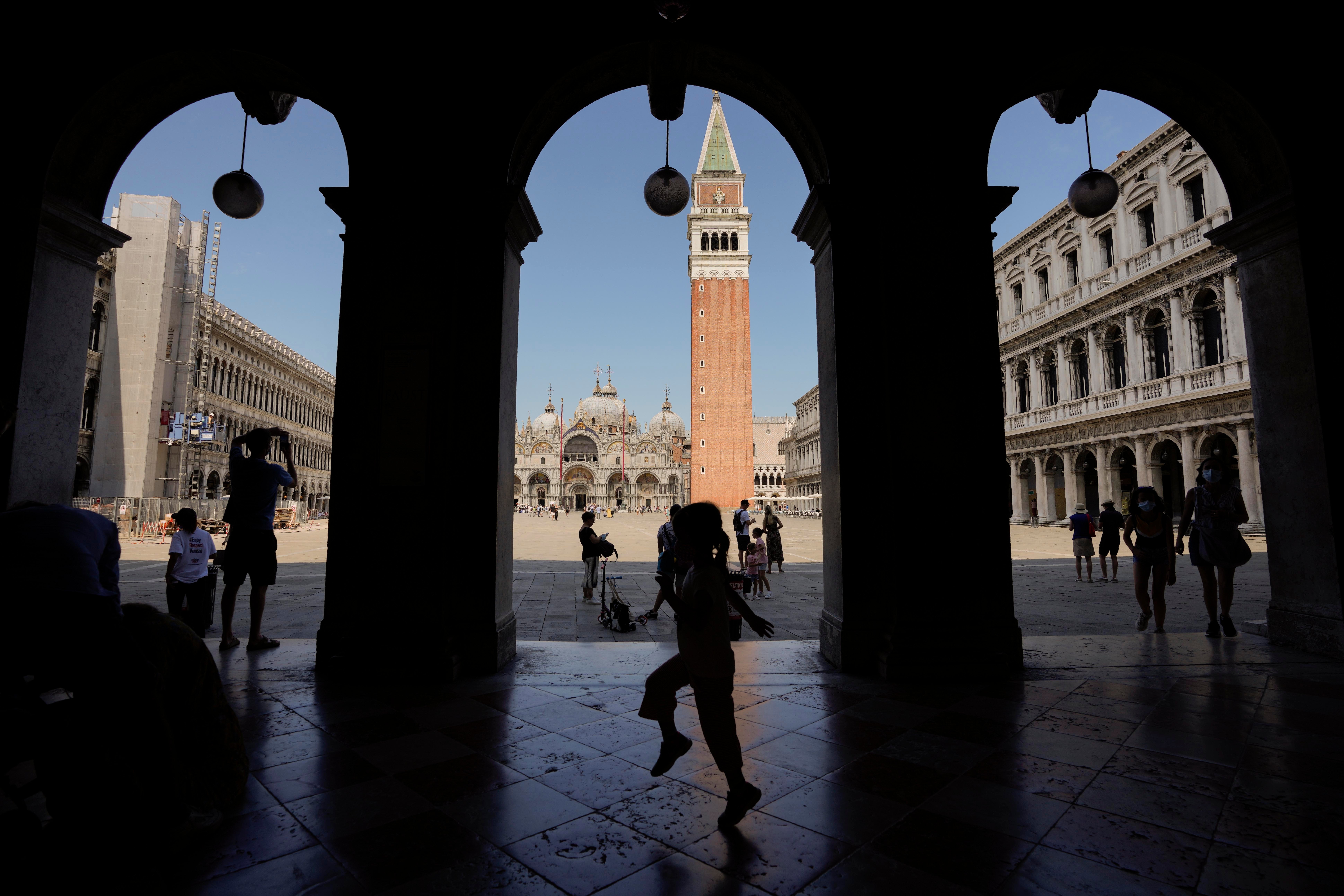
For free real time breaking news alerts sent straight to your inbox sign up to our breaking news emails
Sign up to our free breaking news emails, thanks for signing up to the breaking news email.
Away from the once-maddening crowds of St. Mark’s Square, tiny Certosa island could be a template for building a sustainable future in Venice as it tries to relaunch its tourism industry without boomeranging back to pre-pandemic day-tripping hordes.
Private investment has converted the forgotten public island just a 15-minute waterbus ride from St. Mark’s Square into a multi-faceted urban park where Venetians and Venice conoscenti can mix, free from the tensions inherent to the lagoon city’s perennial plague of mass tourism.
“This is the B-side of the Venetian LP,” said Alberto Sonino, who heads the development project that includes a hotel, marina, restaurant and woodland. “Everyone knows the first song of the A-side of our long-play, almost nobody, not even the most expert or locals, know the lagoon as an interesting natural and cultural environment.’’
It may be now or never for Venice, whose fragile city and lagoon environment alike are protected as a UNESCO world heritage site. Citing overtourism, UNESCO took the rare step this week of recommending Venice be placed on its list of World Heritage in Danger sites. A decision is expected next month.
After a 15-month pause in mass international travel, Venetians are contemplating how to welcome visitors back to its picture-postcard canals and Byzantine backdrops without suffering the past indignities of crowds clogging narrow alleyways, day-trippers picnicking on stoops and selfie-takers crowding the Rialto Bridge.
The recommendation by UNESCO’s World Heritage Center took into account mass tourism, in particular the passage of cruise ships through the historic center, a steady decline in permanent residents as well as governance and management problems.
“This is not something we propose lightly,’’ Mechtild Roessler, director of the World Heritage Center, told AP. “It is to alert the international community to do more to address these matters together.”
Veneto regional officials have submitted a plan for relaunching the tourism-dependent city to Rome that calls for controlling arrivals of day-trippers, boosting permanent residents, encouraging startups, limiting the stock of private apartment rentals and gaining control over commercial zoning to protect Venetian artisans.
The proposal, submitted in March, aims to make Venice a “world sustainability capital,” and hopes to tap some of the 222 million euros ($265 million) in EU recovery funds to help hard-hit Italy relaunch from the pandemic.
“Venice is in danger of disappearing. If we don’t stop and reverse this, Venice in 10 years will be a desert, where you turn the lights on in the morning, and turn them off in the evening,’’ said Nicola Pianon, a Venice native and managing director of the Boston Consulting Group whose strategic plan for Venice informed the region's proposal.
The proposal responds to Venetians' urgency to reclaim their city from the mass tourism that peaked at some 25 million individual visitors in 2019, and stanch the exodus of 1,000 Venetians each year. It envisions investments of up to 4 billion euros to attract 12,000 new residents and create 20,000 new jobs.
As much as Venetians groan at the huge tourist flows, the pandemic also revealed the extent to which the relationship is symbiotic.
Along with lost tourist revenue, Venetians suffered a drastic reduction in public transport, heavily subsidized by tourist traffic. Even city museums could not afford to reopen to residents when lockdowns eased.
“Venice without tourists became a city that could not serve its own citizens,’’ said Anna Moretti, an expert in destination management at Venice’s Ca’ Foscari University.
The pandemic paused the city’s plans to introduce a day-tripper tax last year on visitors who sleep elsewhere — 80% of the total tourist footfall.
Some 19 million day-trippers visited in 2019 , spending just 5 euros ($6) to 20 euros each, according to Boston Consulting. On the other side of that equation, the 20% of tourists who spend at least one night in Venice contribute more than two-thirds of all tourist revenue.
A reservation system with an access fee is expected to launch sometime in 2022 to manage day visitors.
With an eye on monitoring daily tourist arrivals, the city set up a state-of-the-art Smart Control Room near the main railroad bridge last year that identifies how many visitors are in Venice at any moment using cell-phone data that also reveals their country of origin and location in the city.
The technology means that future reservations can be monitored with QR codes downloaded on phones, without the need to set up check points. Pianon said the plan is feasible in a city like Venice, which has a limited number of access points and is just 5 square kilometers (2 square miles) in area.
Relaunching more sustainable tourism in Venice would require diverting tourists to new destinations, encouraging more over-night stays, discouraging day trips and enabling the repopulation of the city with new residents.
Much could go wrong. Tourist operators are desperate for business to return, and there is a pent-up global desire to travel. In addition, many changes being sought by regional and city officials must be decided in Rome, including any limits on commercial zoning or Airbnb rental properties.
“I think the level of dystopia that we had reached was of such a scale that there has to be a reaction,’’ said Carlo Bagnoli, head of an innovation lab, VeniSia, at Ca Foscari University. “There are many projects emerging from many places.”
Certosa island, after more than a decade, is still a work in progress, but its success is in the numbers: 3,000 visitors each weekend.
Sonino sees another 10 public sites in the lagoon with redevelopment potential, including former hospitals, abandoned islands and military bases.
He blames Venetians themselves for the city’s predicament, being long on talk, short on action. But he feels the pandemic -- coupled with the world’s abiding interest in Venice’s future -- might just be the push the city needs to change.
“I prefer to hope that we catch the opportunity. Carpe diem is not only a slogan but an opportunity,’’ Sonino said. “We need a lot of ideas and a lot of passion to take Venice from the past to the future.”
Subscribe to Independent Premium to bookmark this article
Want to bookmark your favourite articles and stories to read or reference later? Start your Independent Premium subscription today.
New to The Independent?
Or if you would prefer:
Want an ad-free experience?
Hi {{indy.fullName}}
- My Independent Premium
- Account details
- Help centre
I spent a night on the ultimate luxury train and saw that high-end travel doesn't have to harm the planet
- I recently spent one night on a luxury train in Europe, the Venice Simplon-Orient-Express.
- It's made up of preserved carriages from the iconic Orient Express fleet of the 1920s and 1930s.
- The train features several sustainability practices designed to conserve energy and reduce waste.
- This article is part of " Green Getaway: Luxury ," a series exploring how people can make more eco-conscious choices on luxury trips. For more climate-action news, visit Insider's One Planet hub.

A luxury vacation doesn't have to come with a huge carbon footprint — especially if you travel by train .
I learned that firsthand on a recent train trip in Europe aboard the Venice Simplon-Orient-Express . With rooms starting at $9,000 a night (including tax), it's the ultimate luxury train and a fine option for travelers looking to splurge while being mindful of their impact on the environment.
Traveling by train is typically more sustainable than flying or driving. The US Environmental Protection Agency has said 2% of transportation greenhouse-gas emissions in 2021 came from trains while 8% came from planes. "Light-duty vehicles," or passenger cars, were responsible for 58% of emissions, the agency said.
"As a traveler, you have the economic power to adopt a 'vote with your dollars' mindset and consciously choose to support local businesses that are aligned with community and environmental impact," Jessica Blotter, the CEO and cofounder of the public-benefit corporation Kind Traveler told Business Insider in October.
On the Venice Simplon-Orient-Express, I got a taste of a high-end sustainable travel experience that wealthy vacationers are splurging on. And I can see why.
In search of a high-end, sustainable trip, I spent one night on the ultimate luxury train: the Venice Simplon-Orient-Express.
In the past two years, I've spent 155 hours traveling by train in the US, Canada, and Europe as a travel reporter.
I've found that no matter where I'm going, trains can offer unparalleled views of the world and make any journey feel like an adventure.
Perhaps no train does both better than the Venice Simplon-Orient-Express, a Belmond train made up of restored cars from historic Orient Express train services of the 1920s and 1930s.
Operating since 1982, the train line has 67 routes between 17 European cities, including Rome and Amsterdam, according to Belmond's website.
I jumped at the chance to take the train on a recent trip from Paris to Venice.
For about $9,000, I spent one night on the train's Paris-to-Venice route in a historic cabin with a couch that converted into a bed and a vanity with a sink.
This was my first luxury train experience and the most amazing trip of my life.
I was fascinated to learn that on the Venice Simplon-Orient-Express, sustainability efforts go beyond its transportation mode.
In 2021, Belmond partnered with EarthCheck , a company that says it monitors and certifies sustainability efforts in more than 550 hotels around the world.
During my trip, I had lunch with the train's manager, Pascal Deyrolle. He told me about all the sustainability efforts on the train — from preserving history to sourcing food.
The train is made up of preserved and restored historic carriages from the iconic Orient Express fleet.
Some of the train's sustainable elements have been in place since the beginning.
For example, the Venice Simplon-Orient-Express is made out of restored Orient Express carriages — some of which are nearly 100 years old, Deyrolle said.
Wandering through the train cars felt like traveling back in time. Each was filled with furniture and decor reminiscent of early-20th-century luxury, like gold light fixtures and plush seating.
The dining experience was another sustainable highlight.
From scrambled eggs and caviar to scallops that nearly melted in my mouth, each extravagant meal on the luxury train felt carefully designed to produce impeccable textures and flavors.
And the ingredients tasted so fresh to me.
Deyrolle said that before each trip, the train loads food in Venice and refills in Paris. "Everything that we picked up yesterday we are going eat on the way to Venice," he said.
Because trains have limited space to store food, Deyrolle said, the Venice Simplon-Orient-Express uses fresh meat and produce out of necessity.
Deyrolle said the ingredients are sourced locally in Paris and Venice; the Venice Simplon-Orient-Express chooses suppliers that allow it to trace where the products come from, even down to the fishermen who catch the seafood that's served to guests.
The train conserves water with reduced-flow faucets.
The Venice Simplon-Orient-Express stops along the route to refill the water tank, Deyrolle said.
But the tank isn't that big, he added, so conserving water is a necessity. He said all the taps on the train have reduced flow.
In my cabin, I noticed the minimal flow from my faucet. The water ran only when I was holding the handle down.
Limiting energy use and waste is a priority on the Venice Simplon-Orient-Express.
Deyrolle said the luxury train has no single-use plastics.
In my cabin, I noticed water in cans rather than plastic bottles. Deyrolle said water on the Venice Simplon-Orient-Express is served only in cans and glasses.
Deyrolle said the train also works to minimize waste from packaging, adding that all the food suppliers use recyclable boxes and reusable containers.
"We exchange containers when they bring fish, meat, and veggies," Deyrolle said. "For us, it's less packaging, less trash, and less space used on the train."
The train has a limited capacity for electricity. So Deyrolle said it conserves energy with custom LED lighting.
During the trip, I noticed the lighting intensity changed depending on whether it was sunny or cloudy, day or night. Deyrolle said the train uses different lighting settings to match the ambiance.
The train company also works to restore the surrounding nature.
Deyrolle said that for each sustainability effort, from waste management to energy use, there's a committee of staff members who are passionate about the issue.
"If you're passionate about something, then you're going to focus on it," he said.
Deyrolle said his passion is planting trees, so he has a goal to plant a tree for each of the train's staff members in a park in Venice over the next five years. He added that the company made an agreement with the city council to do so.
"When I bike along the canal, it's super hot. As soon as I go into the park, we lose four or five degrees just because of the shade from the trees," Deyrolle said. "It's incredible. So trees will help us to bring the actual temperature down and create oxygen."
Some of the most memorable moments of my train journey came from looking out the window at dramatic landscapes of mountains, trees, and meadows.
Being so close to nature made me feel more passionate about protecting the planet, too.
- Main content
Unesco recommends Venice for its World Heritage in Danger list

Aug 4, 2023 • 3 min read
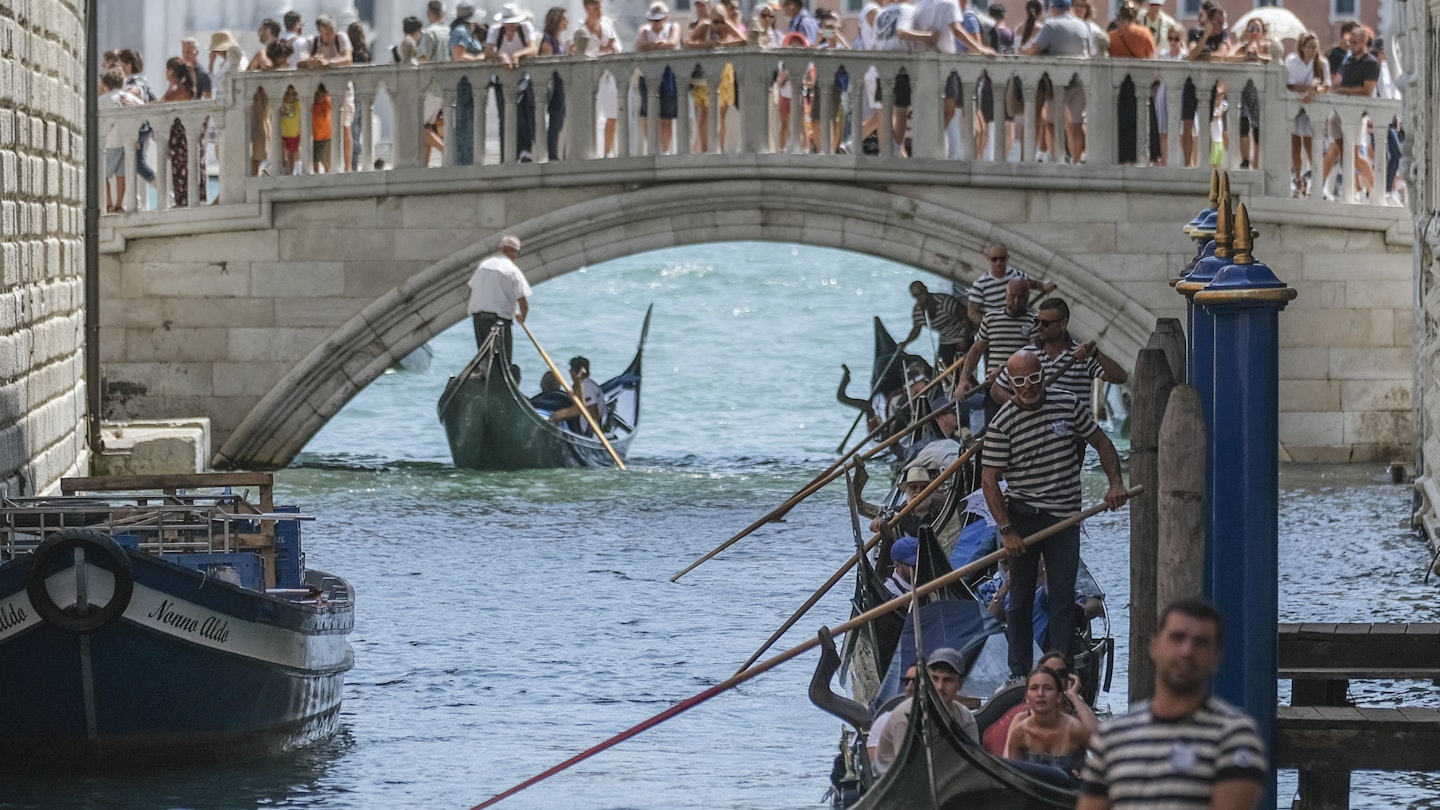
Unesco has made a move to add Venice its list of "World Heritage in Danger." © Stefano Mazzola/Getty Images
As Venice continues to struggle with mass tourism, and post-pandemic numbers show no sign of decreasing, Unesco has sounded another warning bell.
The World Heritage Committee, which has listed “Venice and its Lagoon” on its World Heritage list since 1987, has drafted a resolution to add the city to its World Heritage in Danger list. It will be voted on in September.
The committee warned of “irreversible changes” to the city and lagoon, and “continuing deterioration due to human intervention, the impacts of climate change and mass tourism.”
It said that Italy has not done enough to preserve the area, citing a “lack of significant progress in addressing the complex issues.”
Managing overtourism
Venice’s overtourism problem is well known, with around 30 million visitors per year in a city of under 50,000 residents. Locals are increasingly deserting the city as the economy becomes ever more tourism-centric, while there is a housing shortage due to the thousands of Airbnbs in the city. A proposed tax on day trippers, mooted since 2019, has yet to be enacted.
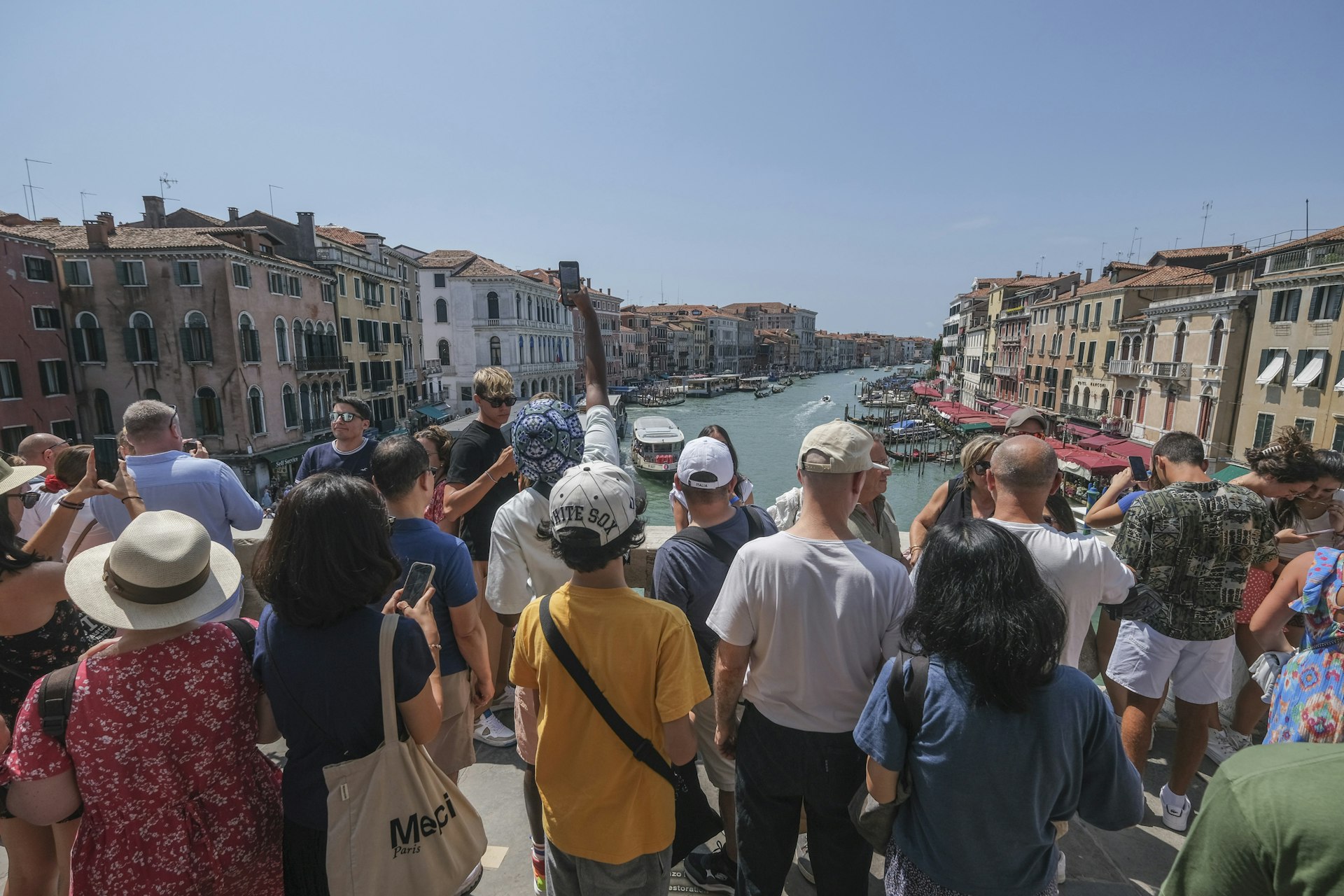
Cruise ships were banned from sailing through the city center in 2021, but they are still allowed to dock in the lagoon – meaning that the ecological damage that these vessels cause sailing through the shallow lagoon waters remains unchanged.
Unesco, which deals with the Italian state rather than the Venetian authorities specifically, said that there has been a “lack of significant progress” and a “lack of strategic vision” in tackling the urgent issues and called proposed measures “insufficient.”
The committee states that it hopes that adding Venice to the list will finally galvanize change. If added, it will keep its original World Heritage listing, too.
Sending a message to the world
Melissa Conn, director of the Venice office at Save Venice , a non-profit that restores and preserves artworks in the city, agreed. “I don’t think this is a question of a right or wrong decision, but a statement that needed to be made to further underscore the fragile nature of Venice and its artistic patrimony,” she told Lonely Planet.
“The city and national government have taken great strides in the last two years to protect Venice, with the activation of the MOSE flood gates and new rules for the passage of cruise ships in Bacino San Marco [through the city center]. There is no easy solution, and addressing the difficulties that Venice faces will always have to be a priority for future administration.
“Venice should not give up hope.”
Valeria Duflot, co-founder of Venezia Autentica , which promotes sustainable tourism in Venice, said that she is in favor of adding the lagoon to the list.
She said it would “send a strong message to the world…that tourism and human economic activity driven by growth can destroy the socio-economic fabric of our cities and communities.”
“It would also serve to illustrate the intimate link – demonstrated by science – between travel and tourism and climate change,” she added.
“What is happening in Venice is bound to happen everywhere else there is tourism if we do not transform our mindsets and practices that elevate extractive growth over…the wellbeing of places, people and what matters to them. We all need to step up our game.”
Repeat offender

It’s not the first time the lagoon city has been threatened with an addition to the “in danger” list. In 2014, Italy was given two years' notice to change the direction of the situation in the city. And in 2021, a draft resolution to add Venice to the endangered list, which ultimately failed, cited a “lack of overall vision and low efficiency of… management.”
If added, it will join two other European cities. Vienna’s historical core was added to the danger list in 2017, while Odesa in Ukraine was added in 2023, following continued attacks by Russia.
A spokesperson for Venice city council said in a statement that the council will “carefully read the proposed decision… and will consult with the government, which is the State Party with which Unesco relates.
Explore related stories
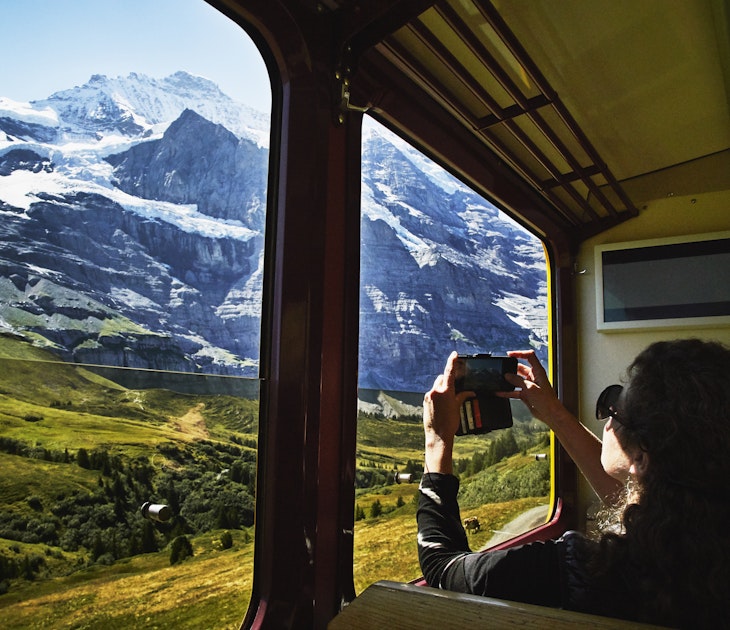
Sustainable Travel
Jan 16, 2024 • 8 min read
Rolling forests, saw-toothed mountains, bridges spanning river gorges - these European train rides put on quite a show.

Jan 9, 2024 • 5 min read

Jan 2, 2024 • 11 min read

Oct 19, 2023 • 8 min read
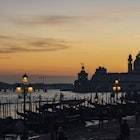
Jul 5, 2023 • 5 min read

Jun 30, 2023 • 6 min read

Mar 29, 2023 • 4 min read
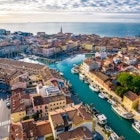
Oct 10, 2022 • 3 min read
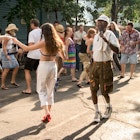
Aug 18, 2022 • 15 min read

May 6, 2022 • 5 min read
National Geographic content straight to your inbox—sign up for our popular newsletters here

How this year's Venice Biennale is bringing outsider art into the fold
The 60th edition of the Venice Biennale is launching in April, with a focus on marginalised groups, immigration and decolonisation.
“No matter where you find yourself, you’re always truly, and deep down inside, a foreigner,” says Adriano Pedrosa, artistic director of the São Paulo Museum of Art and curator of this year’s Venice Biennale — the show’s first from the Southern Hemisphere. Held every two years, the six-month festival champions the world’s greatest artistic talent through exhibitions and national pavilions. For its 60th edition, opening on 20 April this year, Pedrosa has chosen the title Stranieri Ovunque — ‘Foreigners Everywhere’ — and favoured artists that have had no or little involvement in the Biennale before.
Taking place in Venice’s Giardini parkland and Arsenale shipyard areas, the expo will be formed of two parts: the Nucleo Contemporaneo, focusing on marginalised groups such as Indigenous, queer and outsider artists, and the Nucleo Storico, which will showcase 20th-century works from Latin America, Africa, the Middle East and Asia, as well as the Italian artistic diaspora.

What to see at this year's Venice Biennale?
Exile is a Hard Job
Turkish feminist artist Nil Yalter, one of two winners of this year’s Golden Lion award for lifetime achievement, will present a new version of her ongoing project, Exile is a Hard Job, which started in 1975. The installation tackles the issue of social ostracisation afflicting those living in foreign lands, through the medium of photos and drawings. It will be the first time the octogenarian has ever shown work at the Biennale, and it’ll be displayed in the Central Pavilion at the Giardini.
Cosmic Garden
Indian artists Madhvi and Manu Parekh have collaborated with Mumbai’s Chanakya School of Craft, which focuses on empowering women, for this showcase at Venice’s Salone Verde. Paintings and sculptures inspired by Indian culture will be centred around expressionism, modernism and female deities, and will be presented along with reimaginings of the works as hand-embroidered pieces. Some 320 female artisans have been involved in handcrafting the works, which use organic materials such as silk.
Ka’a Pûera: we are walking birds
The Brazil Pavilion will be renamed the Hãhãwpuá Pavilion this year, for a takeover by Glicéria Tupinambá — an artist, activist and representative of the Tupinambá Indigenous community of Serra do Padeiro and Olivença, from Southern Bahia — along with two other Indigenous artists, Olinda Tupinambá and Ziel Karapotó. Hãhãwpuá is an Indigenous name for the lands that became Brazil, and the exhibition will confront the marginalisation of Brazil’s Indigenous communities since colonisation.
FREE BONUS ISSUE
Related topics.
- IMMIGRATION
- MODERN HISTORY
- SEXUAL ORIENTATION
You May Also Like

Why do colleges have legacy admissions? It started as a way to keep out Jews.
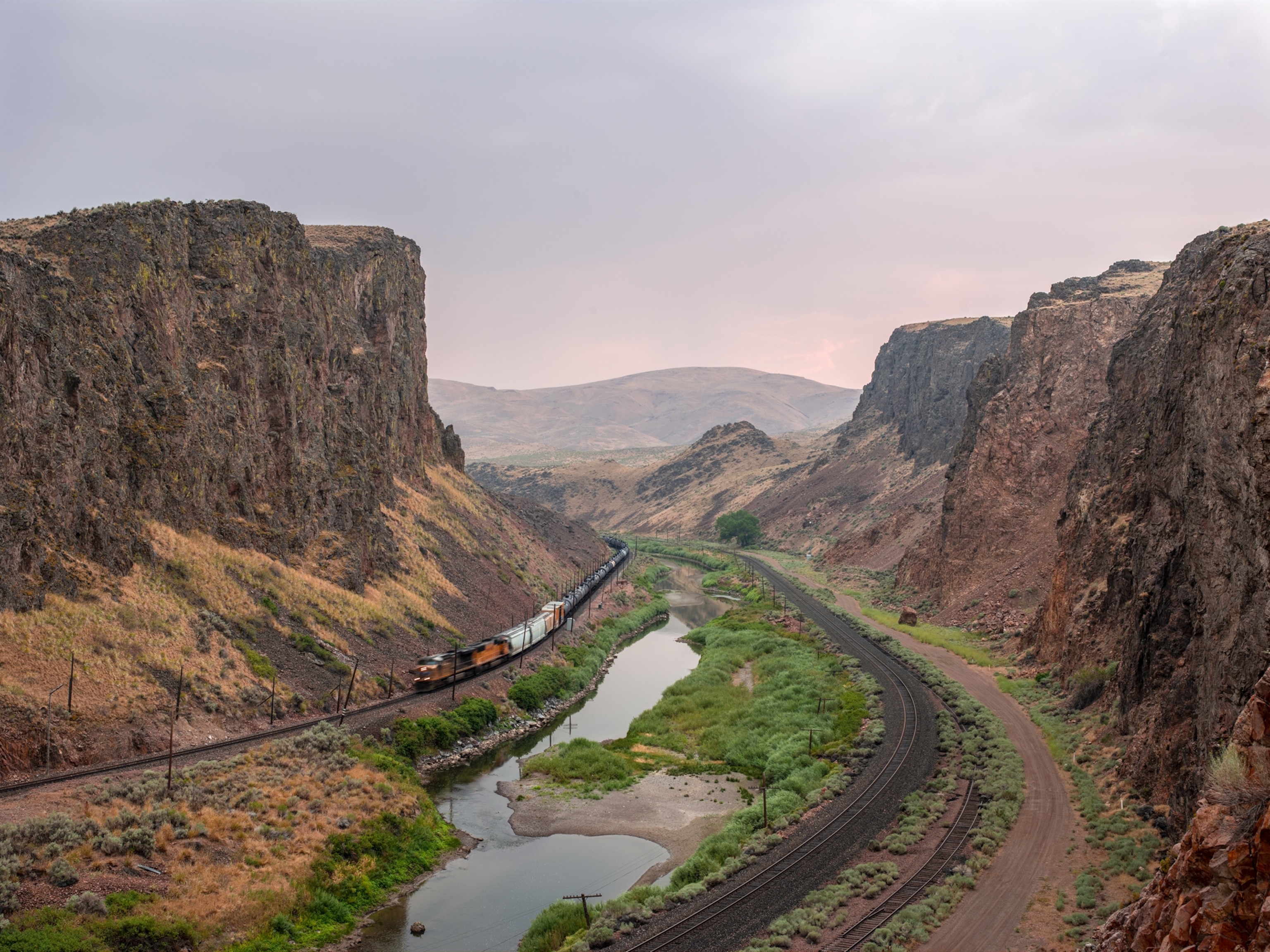
These Chinese immigrants opened the doors to the American West
How to plan a walking tour of the best museums in washington, dc.

Where to stay in Helsinki, Finland's design-conscious capital

What exactly is a Yankee?
- Perpetual Planet
- Environment
- History & Culture
- Paid Content
History & Culture
- Photography
- Terms of Use
- Privacy Policy
- Your US State Privacy Rights
- Children's Online Privacy Policy
- Interest-Based Ads
- About Nielsen Measurement
- Do Not Sell or Share My Personal Information
- Nat Geo Home
- Attend a Live Event
- Book a Trip
- Inspire Your Kids
- Shop Nat Geo
- Visit the D.C. Museum
- Learn About Our Impact
- Support Our Mission
- Advertise With Us
- Customer Service
- Renew Subscription
- Manage Your Subscription
- Work at Nat Geo
- Sign Up for Our Newsletters
- Contribute to Protect the Planet
Copyright © 1996-2015 National Geographic Society Copyright © 2015-2024 National Geographic Partners, LLC. All rights reserved
- International edition
- Australia edition
- Europe edition

The experts: travel agents on 20 ways to book a sustainable and sensational summer holiday
Keen to get away? Here is how to find a great deal, pick the perfect destination and support the local community
A holiday should be relaxing, but booking one can be a fraught experience, with days lost to endless scrolling, comparing reviews and prices. How can you be sure you are getting a good deal? Travel agents share their tips for the most affordable, sustainable and memorable trips.
1. Book like an agent
“Everybody views themselves as a travel agent and they can be up to a point,” says Paul Sharp from Newcastle upon Tyne, who operates as part of the Travel Counsellors network and has 30 years’ experience in the industry. He says the rise of budget airlines and online booking have led to people feeling confident about organising trips themselves. What is the one thing we should know when doing so? “It is a false economy to book things separately because you have no protection,” Sharp says. He gives the example of someone planning a trip to South Africa to watch rugby, who booked flights with the airline and hotels directly and rugby tickets elsewhere. The game was cancelled but the flights and hotel were non-refundable. If they had been booked together, the trip would have been covered under package travel regulations. “Book with a company you trust and know – there are a lot of sites that crop up and you don’t really know their provenance,” he says.
2. Be an early bird
“Planning in advance is always going to be better value,” says Helen Youngman , an independent travel agent and partner at 360 Private Travel , based near Norwich. “Late deals do exist, but a lot of hotels use ‘dynamic pricing’, which means prices increase as availability goes down. Flights are only going to increase in price the closer you get to the departure date because the fuller the flight gets, the more expensive it will be.” Sharp adds: “Don’t hang on for a last-minute deal because you could end up disappointed. Scheduled flights tend to be available about 11 months in advance, so that is the best time to book. Also, at that stage, a lot of hotels and accommodation providers will have early-bird specials.”
3. If you do book late, be flexible
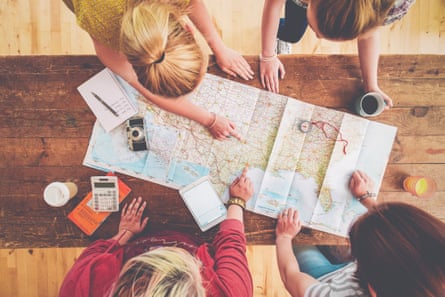
Jessica Bollinger, who works in the Bristol branch of Danish travel agent Kilroy , which specialises in youth and adventure holidays, agrees that late deals are now something of a myth. “They are not unheard of, but with a last-minute deal there are certain things you’re not going to get. So you have to be really open-minded as to where you’re going to go,” she says.
4. Avoid peak season
The cheapest time to travel is always outside the school holidays, says Youngman, with Christmas and new year the most expensive times. Can you get a good deal if you fly on Christmas or New Year’s Day itself? Sometimes, she says, “but a lot of people are catching on to that trick”. If you have to go in the school holidays, be open to going somewhere off the beaten track. “Being clever about destinations is a good plan,” says Youngman. “In Europe, look farther east at places such as Montenegro, Albania and Georgia. And Morocco is a good summer destination for families.”
5. Midweek can be more affordable
“Midweek can be cheaper, it just depends on availability,” says Youngman. “A Thursday to Monday trip is going to be slightly more expensive than Monday to Friday, but all travel fares are based on availability, so the further in advance you can book, the better.”
6. Take out travel insurance when you book
A lot of people sort out their insurance at the airport, says Sharp, but it is best to do it as soon as you have booked your trip. He says: “Travel insurance doesn’t just cover you if you lose a bag or are poorly while you are away. It also covers you should you need to cancel for an insurable reason before you travel.” This includes illness or a bereavement.
7. On solo trips, consider a group tour
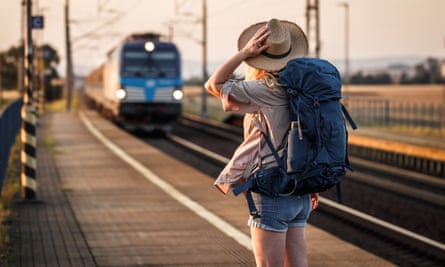
If you are travelling alone, “pretty much anywhere is possible”, says Youngman. “Embarking on your first solo trip can be daunting, which is why small group tours are an amazing way to travel with like-minded people. Some companies I work with are doing specialist female-only tours with visits to female entrepreneurs, co-operatives, makers and bakers. Small group tours are great because they handle all the logistics, include really immersive experiences and are safe. They pick you up from the airport, and from that point onwards, you’re travelling with other people and you’ve got an expert guide.”
8. Have a daily budget
“We advise setting a daily limit for yourself while travelling and then multiplying that number by the days you are away to get the amount to save for your spending money,” says Bollinger. “When you work it out like this, it makes a lot more sense in people’s minds, especially young people who don’t have much budgeting experience. It also keeps you accountable to yourself, so you don’t blow everything right at the beginning and then have nothing left for the end.” To stick to a tight budget, she says: “Cook food as you go along and use public transport instead of tourist buses – this will really help you save money.”
9. Consider all-inclusive options
“If you are going to spend a lot of time eating and drinking in the hotel, I recommend upgrading to an all-inclusive option if possible,” says Youngman, “especially if you’d like a cocktail or two and you’re grazing throughout the day. Otherwise it can all add up and when you check out it costs a fortune.” With active holidays such as skiing or safaris, she adds: “If you have the option to choose an all-inclusive package that includes the activities, food and drink, that is usually a more cost-effective way of travelling. Because sometimes they will really sting you on the extras and it will be more expensive.”
10. Work your way around the world
“A working holiday is a great way to fund your trip,” says Bollinger, who helps people book travel to Australia, New Zealand and Canada by organising working holidays so they can extend their stay. “A lot of jobs will be hospitality-related, but if you go to a more rural spot you can do farm work, and if you have qualifications already, sometimes those can be used. Working holidays in Canada are often at ski resorts near Vancouver, so you get the added benefit of being in a beautiful place to take advantage of the winter sports.”
11. Travel as sustainably as possible
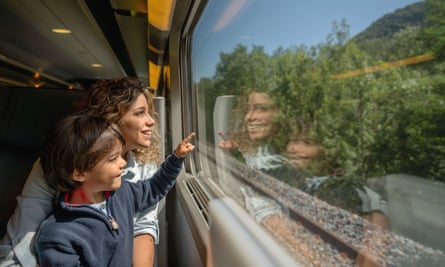
“You can get to most places in Europe by train , so if you are open to slowing down and having a more relaxed itinerary, not only are you travelling more sustainably, but you have more time to absorb the culture surrounding you,” says Youngman. “Be good to the environment you are travelling to see.” She stresses the importance of limiting flights as much as possible, especially internally, and avoiding indirect long-haul options. “We highly recommend ‘open-jaw flights’, which means you fly into one destination and out of another, to limit the number of flights,” says Bollinger. “We also promote travelling for longer in one destination as opposed to trying to go to many in a short time, and travelling overland when possible, instead of taking multiple flights.”
12. Offset carbon emissions with a reputable company
When considering carbon from flights, says Thomas Power of Pura Aventura , a B Corp sustainable travel company in Brighton: “Don’t believe the airline schemes, or anyone else who promises you absolution for a few quid. While 85% of offset schemes may be worthless, there are high-quality carbon credits starting at about £20 a tonne.” These can be bought to compensate for CO 2 emissions. Companies such as “ C Level help you at least take positive action to balance your impact”, says Power.
13. Think of responsible travel as a ‘fair exchange’
When travelling, says Power, consider: “What are we giving and what are we receiving? Is it a fair exchange? Is somebody getting something in return for what I am receiving in this transaction?” This applies to everything from “taking a cruise to Venice and not giving anything to the city, to going camping in Sussex and getting a supermarket delivery to your tent instead of going to the village shop or buying eggs from the house down the road”. This concept of “fair exchange” can be beneficial for everyone, he says, by giving you access to unique experiences. “In terms of the economy, the less money that leaves the village, town or city, the better,” he says.
14. Embrace the great outdoors

If you camp out “you are closer to nature than any other accommodation option”, says Brodie Farrow, of the online camping and touring travel agent Pitchup . There are many benefits to this, she says: “It is really good for mental health. It is also a much more sustainable option: the carbon footprints of outdoor holidays tend to be much lower than hotel stays, as people travel by car rather than flying and it promotes local produce and low-impact activities such as hiking in the surrounding area. The accommodation or pitches are much less carbon intensive than hotels, too. And you have a positive impact on the community that you are visiting: camping attracts a higher number of customers at a lower cost than hotels do, which can help to underpin the viability of local facilities such as the shop, the bar and takeaway, and that benefits the wider community.”
15. If you are camping-phobic, glamp
“There really is something for everyone,” says Farrow. “You can get glamping accommodation with four-poster beds if you prefer camping in luxury, or you can go really wild and remote, with no facilities, out on your own and back to nature. I think you would be hard-pressed to say that there is nothing that appeals.” Although glamping has become a fairly pricey option, she says: “Some types are much cheaper than others. You can get some ‘pod-only’ camping accommodation, where you bring your own bedding, starting from £15 a night.”
16. If the weather is terrible …
… And you are under canvas, “try to keep your bedroom a wet-gear-free zone”, says Farrow. “Store and dry wet stuff in your porch area rather than in your bedroom compartment. Protect your equipment by putting it in plastic bags or dry bags. Don’t let anything touch your tent walls or you will have soggy socks.” For activities, she suggests, “swimming in the sea, because you are wet already, or going to the pub”. If you are disappointed by the weather on a non-camping holiday, “as annoying as it is, try to embrace it”, says Sharp. Many people come back from their holidays exhausted because they try to see and do everything when they’re away. Instead, he says: “Have a lie-in, ask local people which is the best restaurant for a long, lazy lunch and, most of all, relax and recharge your batteries – it’s a holiday after all.”
17. For best value destinations, try …
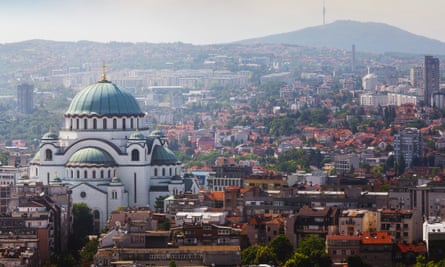
“Go for Belgrade over Berlin,” says Youngman. “It has an underground culture scene very similar to Berlin 20 years ago.” For backpackers, Bollinger suggests: “Some places in Central America can be really affordable. Nicaragua, Honduras and Guatemala are good options for someone wanting to think outside the box.” Sharp says there are more affordable options in “Cyprus, Bulgaria, Turkey and Egypt, compared with Spain and the Balearics, which are becoming increasingly expensive due to cost of living increases”. If you are looking for a staycation, North Yorkshire, Cumbria and Cornwall are some of the most popular UK locations on Pitchup, says Farrow, which can inflate the price. Locations such as Pembrokeshire and the Isle of Wight are cheaper.
18. For a trip of a lifetime that doesn’t cost the earth …
“North Macedonia is just amazing,” says Youngman. “Ohrid has beautiful cobbled streets, Ottoman architecture , fantastic food and wine and you can visit the most biodiverse lake in Europe.” Farrow says: “I camped at the foot of Ben Nevis last year before hiking up it. The weather was terrible but it was worth it for the unreal views.” While Bollinger’s most memorable trip was “Interrailing in Europe and finding a way to do things on my own. It was before smartphones, so it was a very interesting experience and built up my confidence in travelling.”
19. If in doubt, follow local people
“Live like a local person by taking local buses and eating in local spots,” says Bollinger. “It is going to save you money, and will also let you experience life in a different way.” Power adds: “People want to go to Peru but they never come back talking about Machu Picchu, they come back talking about the people they met. Buy local and connections will happen for you. In the absence of interaction with your host community, the things you see are just wallpaper.”
20. And remember: you get what you pay for
“If a deal looks too good to be true, it probably is,” says Sharp.
- The experts
Comments (…)
Most viewed.

The Venice Sustainability Foundation / Fondazione Venezia Capitale Mondiale della Sostenibilità pursues the objective of creating an integrated model (environmental, economic, social) of sustainable development for the City of Venice and its metropolitan territory, that can revitalize the local social economy while ensuring the protection and preservation of the environmental, historical and cultural heritage, as well as the strengthening and cohesion of the local community. The Foundation becomes the tool through which the Members intend to cooperate to make the City of Venice a reference for the quality of urban life that can be an inspiration for other national and foreign realities, in this sense World Sustainability Capital.
Chaired by Professor Renato Brunetta, with Luca Zaia and Luigi Brugnaro as Vice-Presidents, the Foundation is composed of a structured partnership of institutions, associations and large public and private companies, interested in working for the sustainable future of the City and its territory.
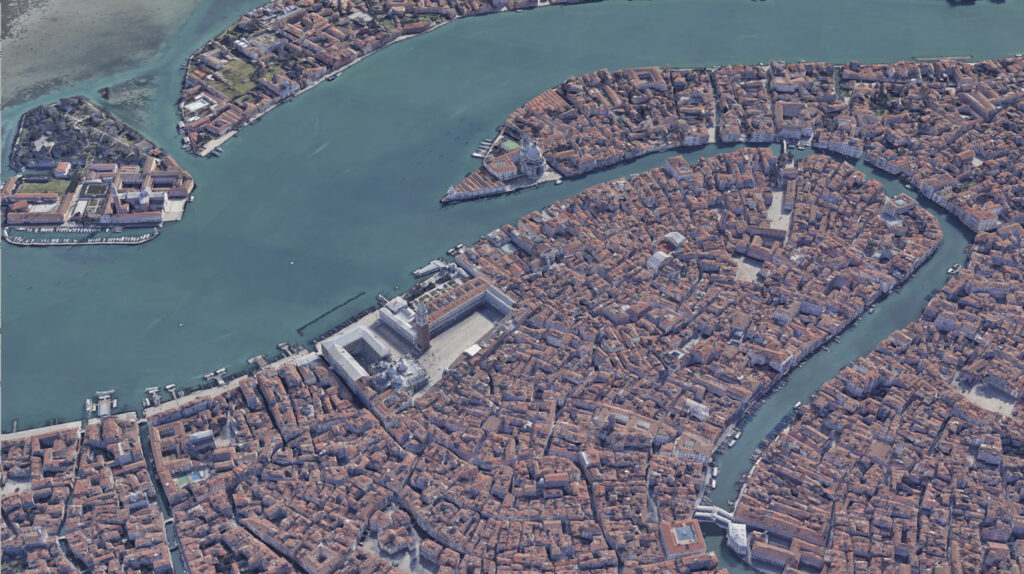
The Foundation’s sphere of activity revolves around 9 key themes that are relevant for the sustainable development of Venice. Each theme – interdependent on each other – is brainstormed among partners to define the projects that the Foundation will carry out.
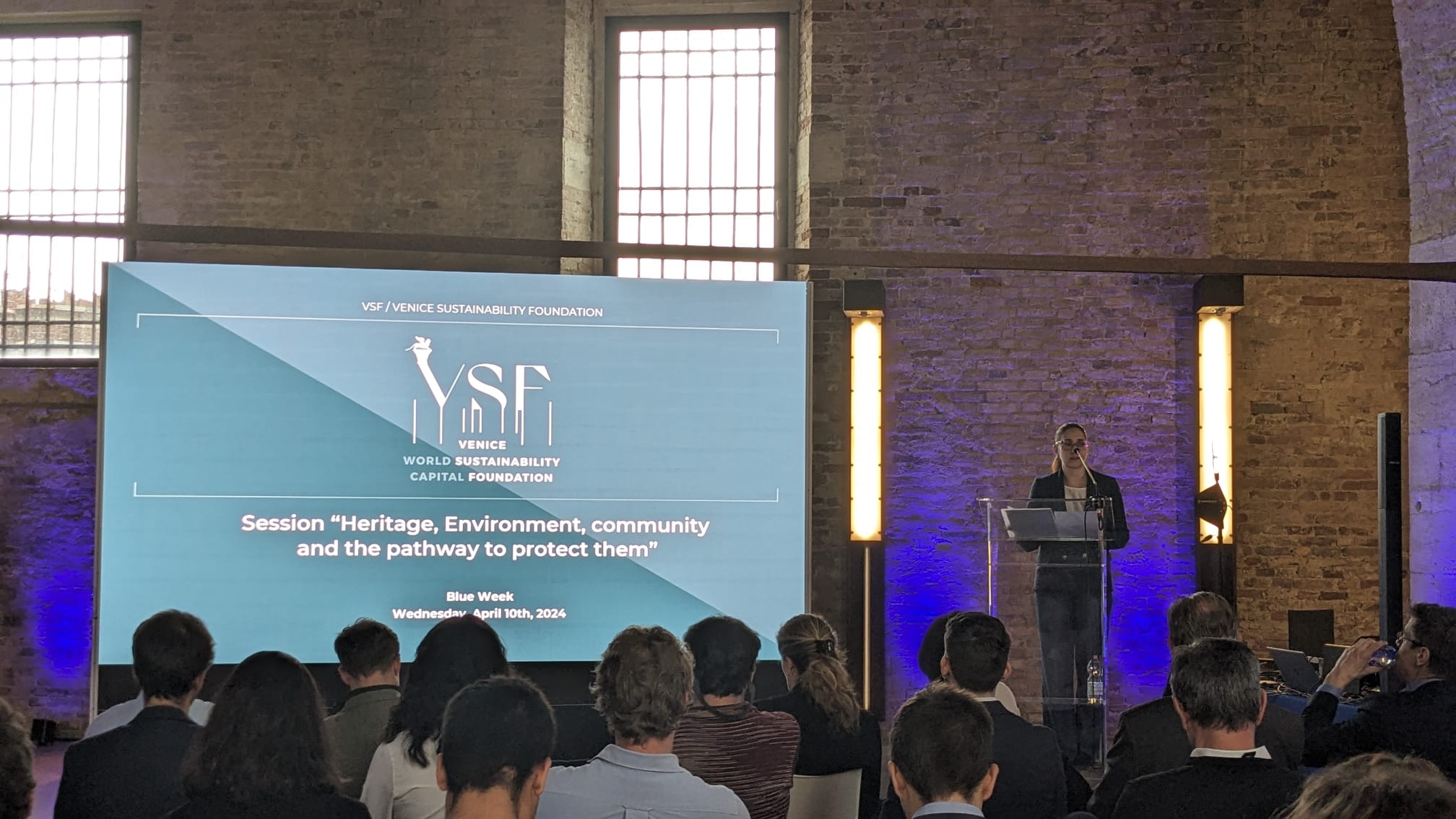
VSF partners with BlueWeek 2024, five days in Venice dedicated to marine sustainability

More From Forbes
It’s always national garden month at jw marriott.
- Share to Facebook
- Share to Twitter
- Share to Linkedin
The JW Garden at JW Marriott Venice is beautiful and practical.
Audrey Hepburn once said, “To plant a garden is to believe in tomorrow.” If that’s true, JW Marriott obviously has great faith in the future.
JW Garden, the brand’s initiative to plant a garden in every one of its more than 100 properties around the world, is thriving. Inspired by Alice Marriott’s (wife of Marriott founder, J. Willard Marriott) passion for gardening, each garden is designed to fit naturally into the specific setting and grow fresh produce and herbs to be used by the hotel’s chefs.
The JW Garden initiative is an innovative way to show the brand's commitment to sustainability and ... [+] holistic wellness.
Since 2022, Studio Lily Kwong has partnered with JW Marriott to create sustainable and purposeful JW Garden projects designed to provide a thoughtful, multi-sensory experience while also supporting the hotels’ culinary programs.
April is National Garden Month and a great time to plan a stay at one of these properties that’s home to a beautiful JW Garden.
JW Marriott Venice Resort & Spa
JW Garden at JW Marriott Venice Resort & Spa.
The luxurious JW Marriott Venice Resort & Spa in Italy is located on its own private island, Isola delle Rose, not far from St. Marks Square and its soil is so rich in minerals and nutrients, it’s able to grow a bounty of herbs and fruits that are a delight for the senses. In fact, there are 100 olive trees on property that produce the exquisite olive oil you’ll find in the fine dining restaurant, Foila at Dopolavoro Venezia, and at the resort’s immersive olive oil tastings.
JPMorgan Joins Goldman Sachs In Serious Bitcoin Halving Price Warning
Google makes a major new sale offer to pixel 8 buyers, the crazy true story behind netflix s baby reindeer what happens to martha, jw marriott singapore south beach.
The JW Garden at JW Marriott Singapore South Beach.
Located by the outdoor terrace of Beach Road Kitchen, the JW Garden at JW Marriott Singapore South Beach pays tribute to Singapore’s ecological and cultural diversity. Two sculptural blue trellises support native climbing plants and edible vines. Seating is incorporated into the garden’s design so you can take a few minutes to relax and be mindful of the beauty around you.
JW Marriott Desert Springs Resort & Spa
An oasis in the iconic Palm Springs desert, JW Marriott Desert Springs features a JW Garden filled with California-native plants and edible herbs, including the signature sage plant. Mindfulness and reflection are encouraged with hidden seating and peaceful walking paths. Strolling through the olive grove is a lovely way to connect with nature.
JW Marriott Orlando Bonnet Creek Resort & Spa
Offerings from the JW Garden at JW Marriott Orlando Bonnet Creek Resort & Spa.
The star of the JW Garden at JW Marriott Orlando Bonnet Creek is rosemary – the resort’s signature ingredient, which you can enjoy in special dishes at Sear + Sea Woodfire Grill and in craft cocktails at UnReserved and Sear + Sea Lobby Bar. The lush garden invites you to sit among the herbs and citrus offerings and enjoy the greenery, the sweet scents and the busy, local pollinators.
JW Marriott Essex House New York
Offering some much-welcome nature in the middle of Manhattan, the JW Garden at JW Marriott Essex House is the brand’s first indoor edible garden. Part garden, part art installation, it features herbs, including chives, tarragon and oregano, housed in a millinery cabinet that pays homage to the hotel’s façade and interiors. It’s stunning – and a breath of air in the city.
- Editorial Standards
- Reprints & Permissions

Metro Transportation News & Reviews
Have a very happy (and sustainable) earth day, with events and free rides.

Earth Day is just around the corner – a very big day for us. While providing greener travel solutions for riders is on our minds all year long, this is a special time to look back and take stock of our progress toward creating a healthier tomorrow. And you, as a Metro rider, play a big part in that.
We all know that using transit is good for the planet because it gets cars off the road and reduces our carbon footprint. In 2022, our transit service displaced 468,135 metric tons of GHG emissions across the region. That’s the equivalent to taking over 100,000 gasoline powered cars off the road for a year!
Meanwhile, our fleet is also getting greener and cleaner. Since 2022, we have had at least 40 electric buses in service, and an additional 100 have already started to be delivered. Our goal is to convert our entire bus fleet to a zero-emissions fleet well ahead of the State deadline of 2040. In the meantime, we have been using renewable natural gas for the rest of our buses, increasing the amount of renewable energy mix that run our trains and power our facilities, and have begun to use renewable diesel in our construction projects.
We’ve also taken big steps to make our operations more sustainable. We have initiated a sustainable acquisition program designed to reduce the climate impacts of procured goods and services. More than a dozen of our buildings and projects have already attained Leadership in Energy and Environmental Design (LEED) or Envision certification, with more are on the way.
Climate change affects all of us – but some communities have suffered the impacts disproportionately, especially those inhabited by people of color here in LA County. That’s why we have partnered with KBLA on a year-long climate justice campaign to increase climate health literacy. You can listen to some of our recent work here .
So, as a nod to our ongoing progress, and to thank you for going Metro, we are offering FREE rides this Earth Day, April 22. That includes all buses, trains, bike share, and Metro Micro. Here are the details:
- At train stations the turnstiles will be unlocked and on buses the fare boxes covered.
- Bicycle riders can redeem a free 30-minute bike share ride by selecting 1-Ride at any Metro Bike Share kiosk, online or in the Metro Bike Share app. Just enter the promo code 042224 to redeem your free ride (this code can be redeemed multiple times throughout the day). Electric Metro Bike unlocking fees are waived.
- Metro Micro riders can redeem free rides on Metro’s on-demand rideshare service by using the Metro Micro app or browser and entering the code EarthDay24. The promo code will be available during regular operating hours for Metro’s Call Center (323-GoMetro or 323-466-3876). Call Center operating hours are from 6 a.m. to 6 p.m.
But wait! There’s more! Here are a few other ways you can celebrate with us this weekend:
- April 20, 9 a.m. to 11 a.m: Volunteer with KBLA and help Clean Up Compton ! The first 50 listeners who sign-on to join us as volunteers will receive a free KBLA t-shirt when you show up Saturday morning, 212 W. Cypress Street.
- April 20, 10 a.m. to 4 p.m: Join Director Janice Hahn at the Los Angeles County Earth Day celebration at Don Knabe Community Regional Park, 19700 Bloomfield Ave in Cerritos. There will be food, displays, a raffle and more!
- April 20-21: Check out our booth at the Los Angeles Times Festival of Books this weekend, where we’ll be selling a very limited supply of our first-ever bamboo TAP cards, a collaboration with global technology leader, IDEMIA. The TAP cards cost $2 each and can be loaded with fares by using the TAP mobile app or at Metro ticket vending machines. Just tap the card on the ticketing pad –– the card should not be inserted into the machine! Get the full schedule here .
- April 21, 9 a.m. to 4 p.m. Join us at the next Ciclavia event on Venice Boulevard between Venice Beach and National Boulevard. Bring your whole family!
We hope to see you there!
Share the Source:
- Click to email a link to a friend (Opens in new window)
- Click to share on LinkedIn (Opens in new window)
- Click to share on Facebook (Opens in new window)
- Click to share on Twitter (Opens in new window)
- Click to share on Tumblr (Opens in new window)
- Click to share on Reddit (Opens in new window)
Categories: Transportation News
Leave your Reply on The Source Cancel reply

Love Exploring
16 STUNNING Train Routes To Spice Up Your 2024 Travels
Posted: April 18, 2024 | Last updated: April 19, 2024
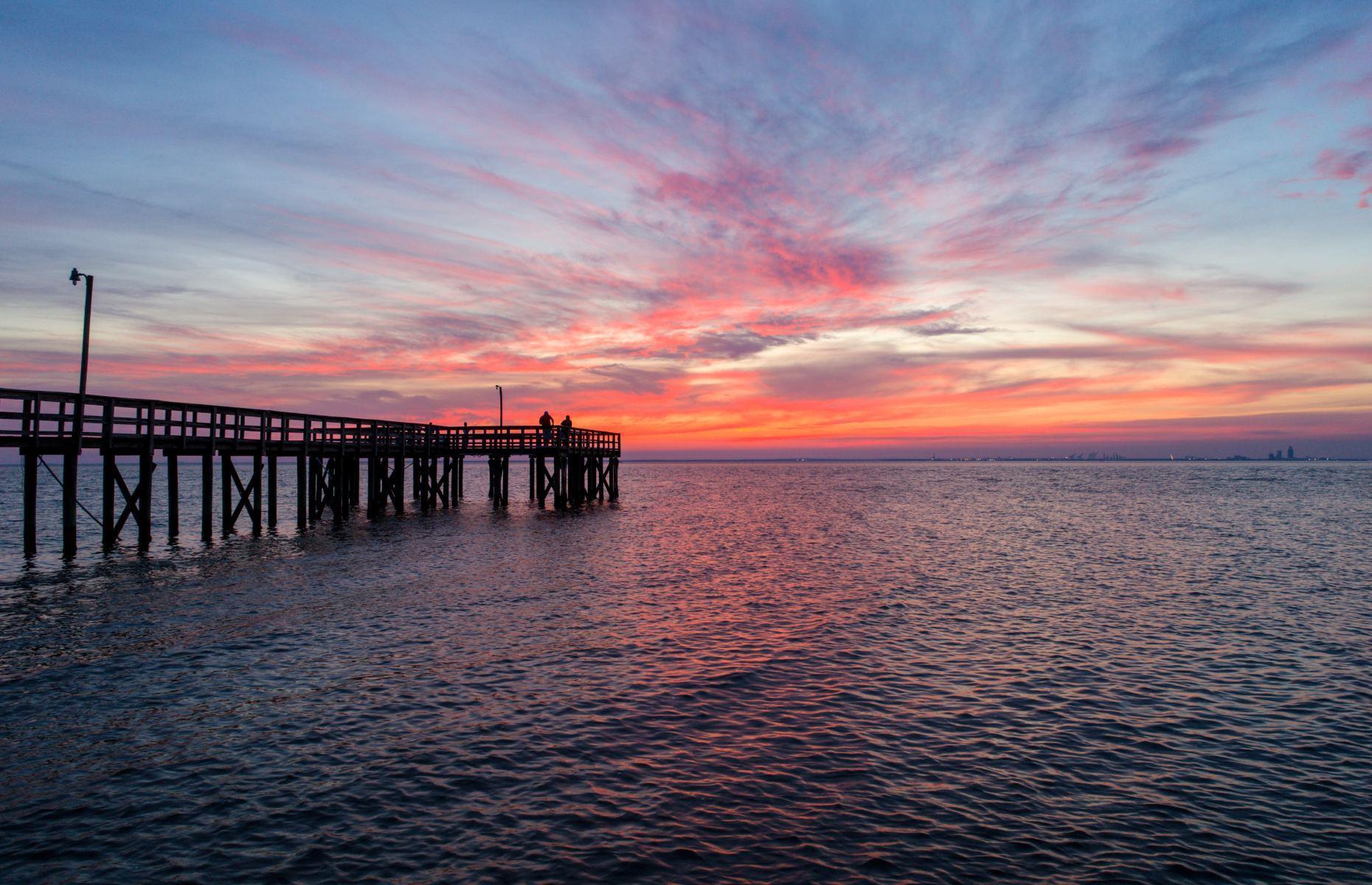
On track for a great adventure
Long-distance rail travel is intoxicatingly romantic and much more sustainable than flying. But when our lives are so busy, and our time and money so precious, it can sometimes be hard to justify taking the slower, more scenic route. However, these exciting new train journeys for 2024 and beyond might just convince you to give it a try.
From swanky sleepers to dynamic first-of-their-kind engineering feats, click through for the best new and upcoming rail routes to get excited about...

Whoosh from Jakarta to Bandung, Indonesia
Inaugurated in late-2023, Whoosh is Indonesia’s (and Southeast Asia’s) first high-speed train. Finished four years later than originally planned, the new multi-billion-dollar line links the capital of Jakarta to the west Javan city of Bandung in less than an hour. With speeds of around 217 miles per hour (349km/h), Whoosh – a convenient acronym for 'time saving, optimal operation, reliable system' in Indonesian – is powered by electricity and therefore has no direct carbon emissions. Before this, the only way to reach Bandung from Jakarta was a three-hour car journey.

The 86-mile (138km) route is mostly raised and offers seats in three different classes – VIP, first and second. The state-of-the-art trains have been modified to suit the country’s tropical climate, and are also equipped with safety features that can respond to disasters like earthquakes and floods. There are future plans to extend the line further east to Surabaya (around 10 hours by car from Jakarta), as well as introducing a stop at Yogyakarta, where passengers would alight for the world’s largest Buddhist temple, Borobudur.

Nightjet from Paris to Berlin
Before December 2023, there had been no direct trains between Paris and Berlin since the 1990s. But now passengers can travel between the two enticing capitals on OBB’s new signature sleeper service, the Nightjet, which currently runs three times a week and calls at Strasbourg and Frankfurt along the way. Clad in striking blue and red, Nightjet’s fleet will be replenished over the course of the next year, bringing the total number of custom-built new trains to 33, offering solo sleeping pods, en-suite compartments, better accessibility and extra storage.
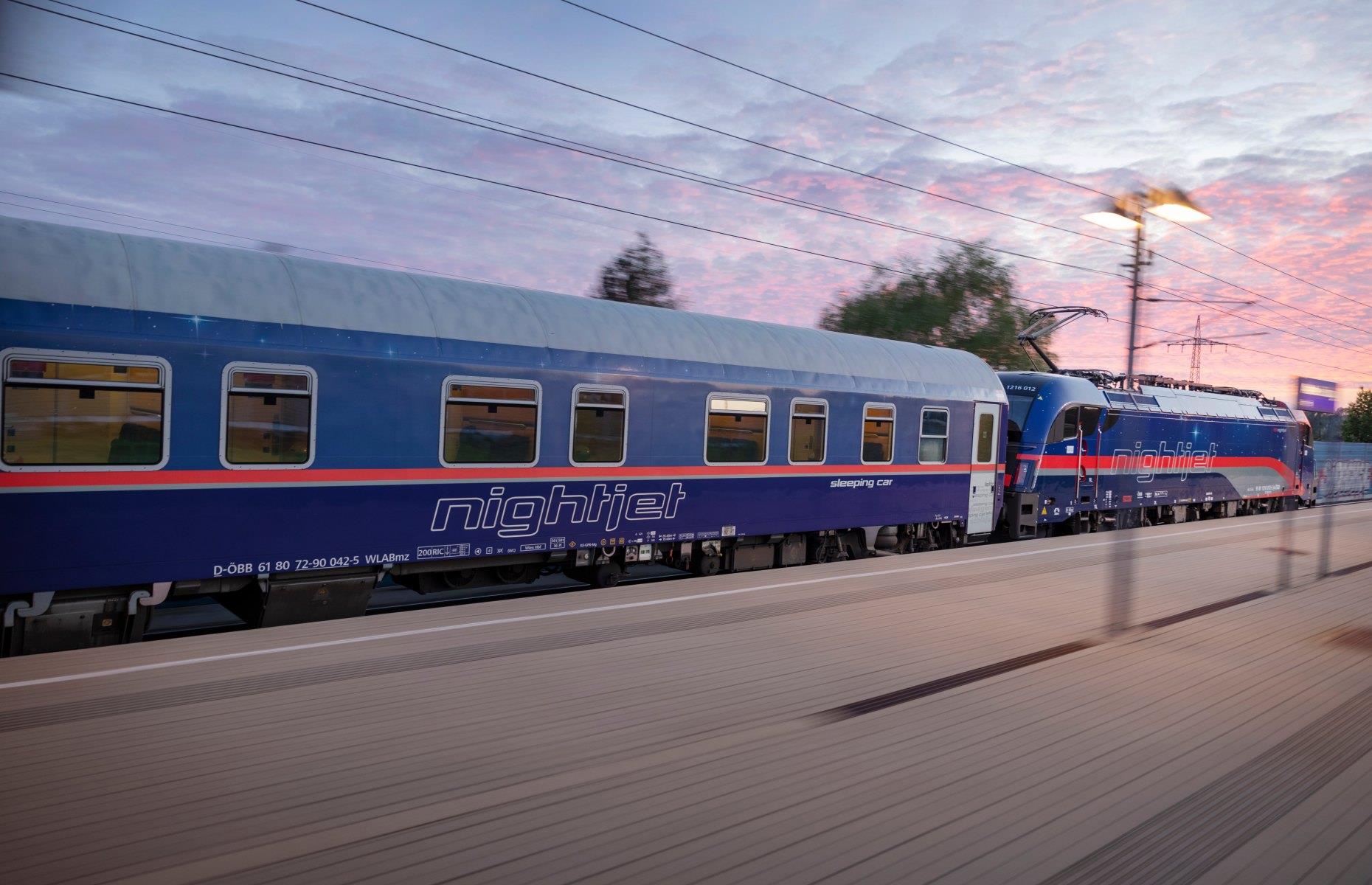
The Paris-Berlin Nightjet will increase its offering later in 2024, when nightly departures begin. But soon this won’t be your only new rail option linking the two cities. SNCF (France’s state railway company) is liaising with Deutsche Bahn over a direct, high-speed TGV connection sometime this year, which will run during day and night, with a total journey time of around seven hours.
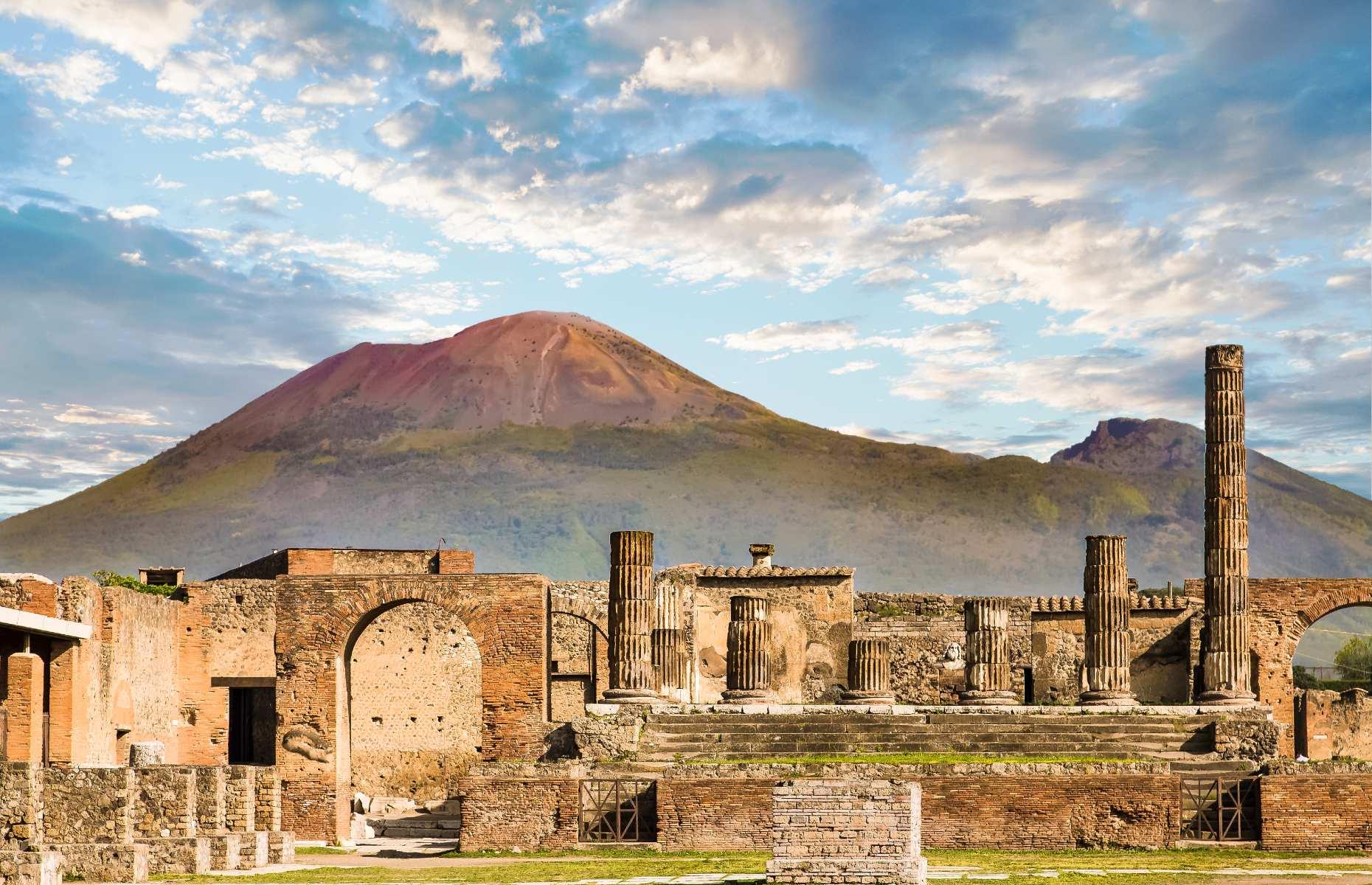
New Trenitalia routes, Italy and beyond
The year's rail renaissance continues with Italian national rail operator Trenitalia opening up a plethora of new opportunities. First, its Frecciarossa (Red Arrow) bullet trains now whizz passengers from Rome to the ruined city of Pompeii (pictured), which was buried under volcanic ash after Mount Vesuvius erupted in 79 AD. The service runs every Sunday and on selected public holidays, with the journey from A to B taking less than two hours.
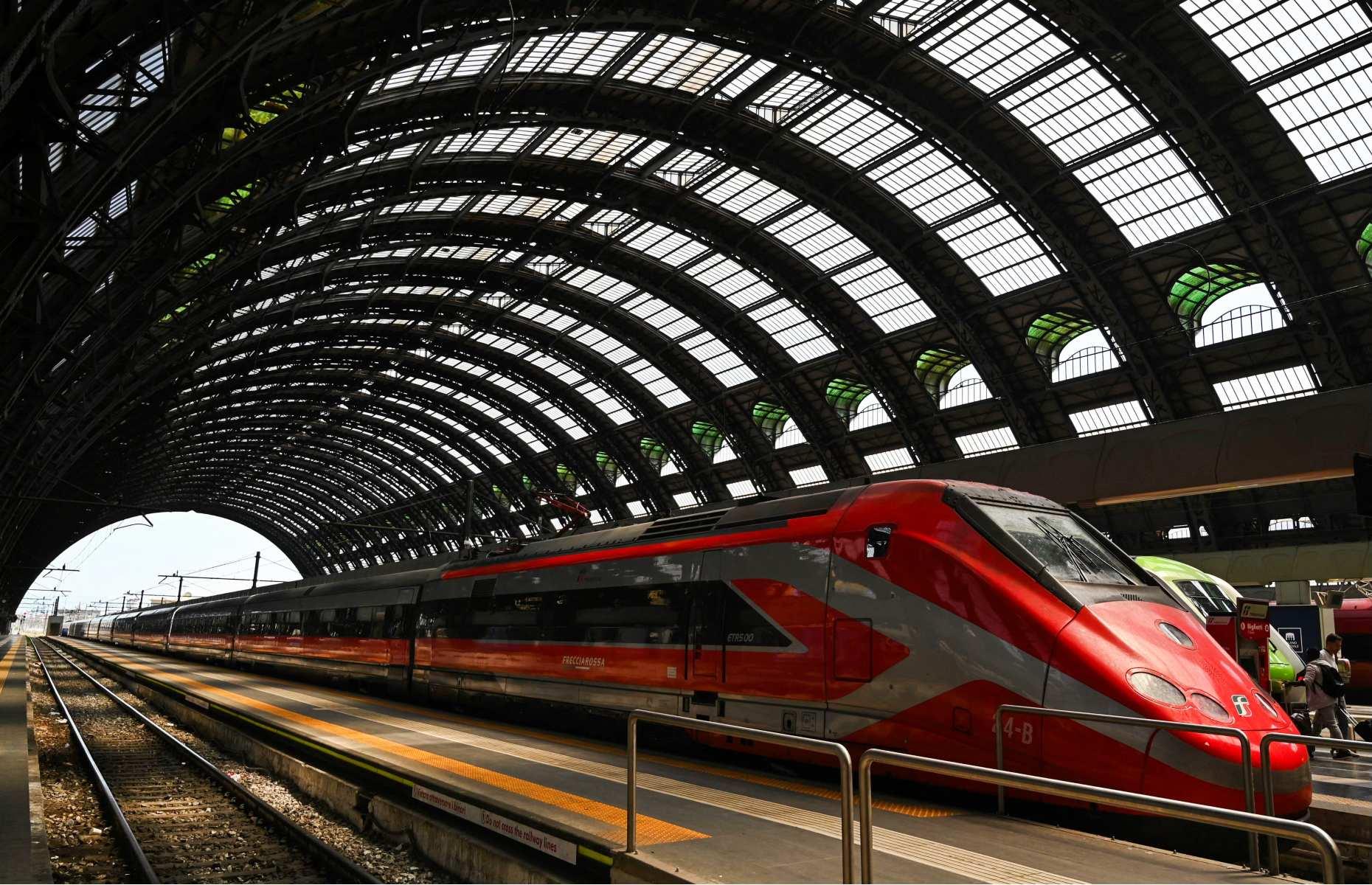
Elsewhere, Trenitalia is in cahoots with Slovenia’s transport services to start a high-speed rail route from Milan (pictured) to Ljubljana, Slovenia’s gorgeously green capital. The two-and-a-half-hour trip between the two cities could open to passengers as soon as April 2024. Later this year, the zippy Frecciarossa trains will also tread through Paris, Madrid and Barcelona, as Trenitalia looks to increase its presence in France and Spain. This will be a boon to travellers crossing the Pyrenees, which has historically been low on rail services.
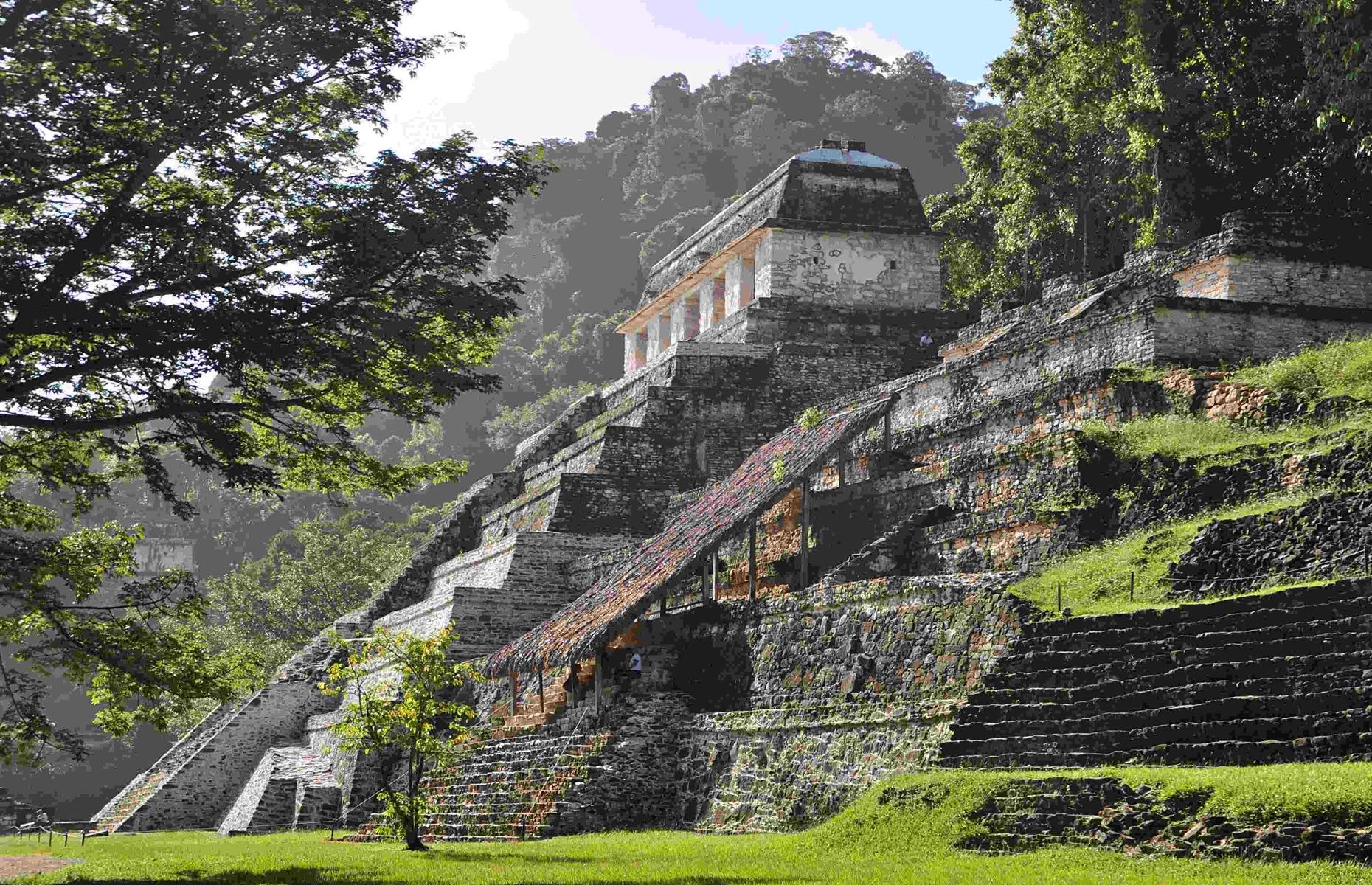
Tren Maya, Mexico
After partially opening in December 2023, Yucatan’s Tren Maya is set to become fully operational any day now. The rail megaproject, which entered construction in 2020, connects popular Caribbean coast resorts like Tulum and Cancun to culture-crammed cities and ancient archaeological sites like Merida and Palenque (pictured), in the hope of connecting tourists with areas they might not otherwise see. The route in its entirety serves 34 stations in five Mexican states and is divided into seven sections, offering both short and long-distance journeys.
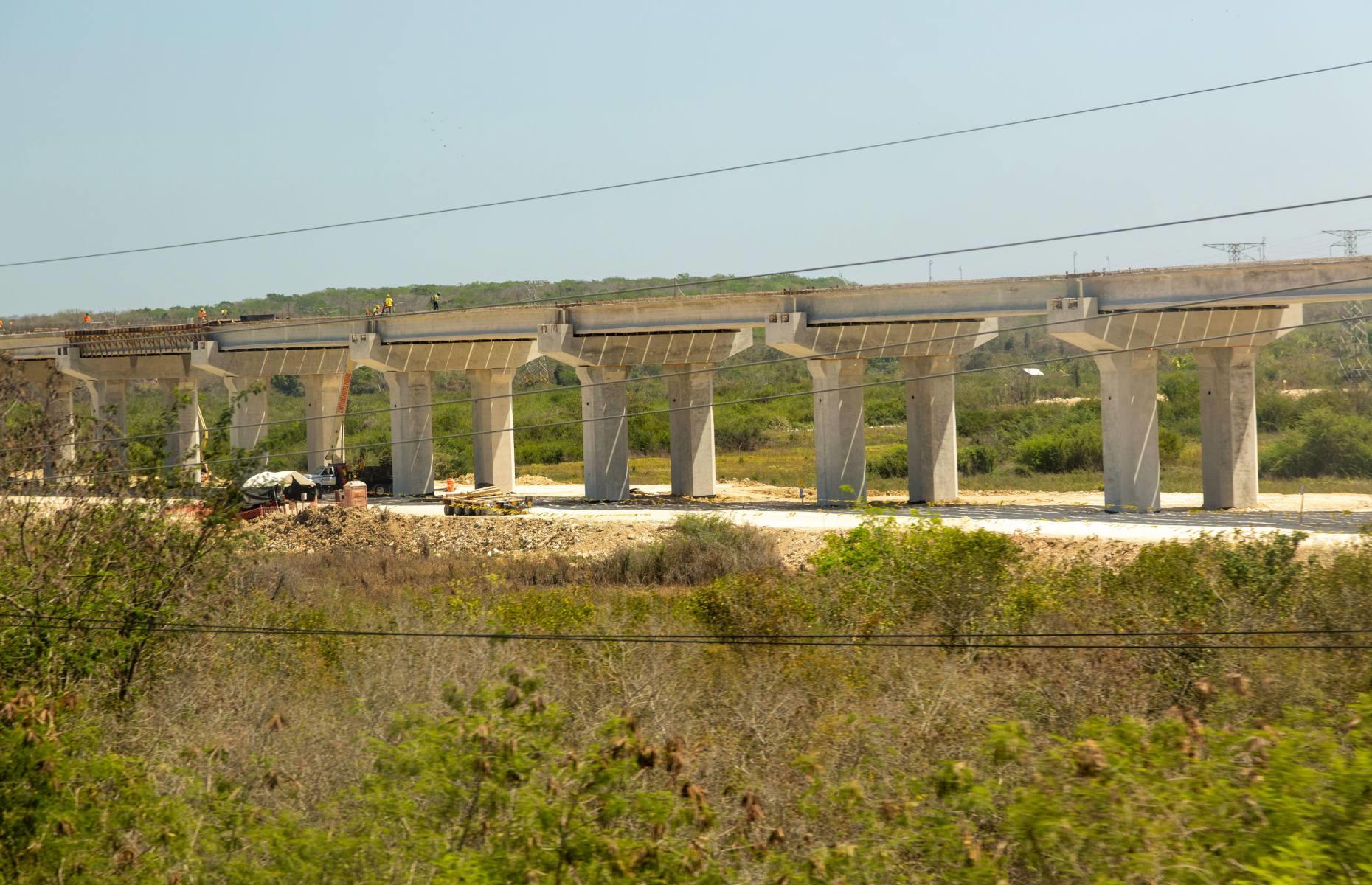
The railway has already caused plenty of controversy. Indigenous leaders and environmental activists have spoken out against deforestation and the perceived briefness of research carried out ahead of construction, but others believe Tren Maya will ultimately help to alleviate poverty in the areas it serves. Whatever your stance, the 904-mile (1,455km) route marks a significant turning point for public transport and rail tourism in Mexico.
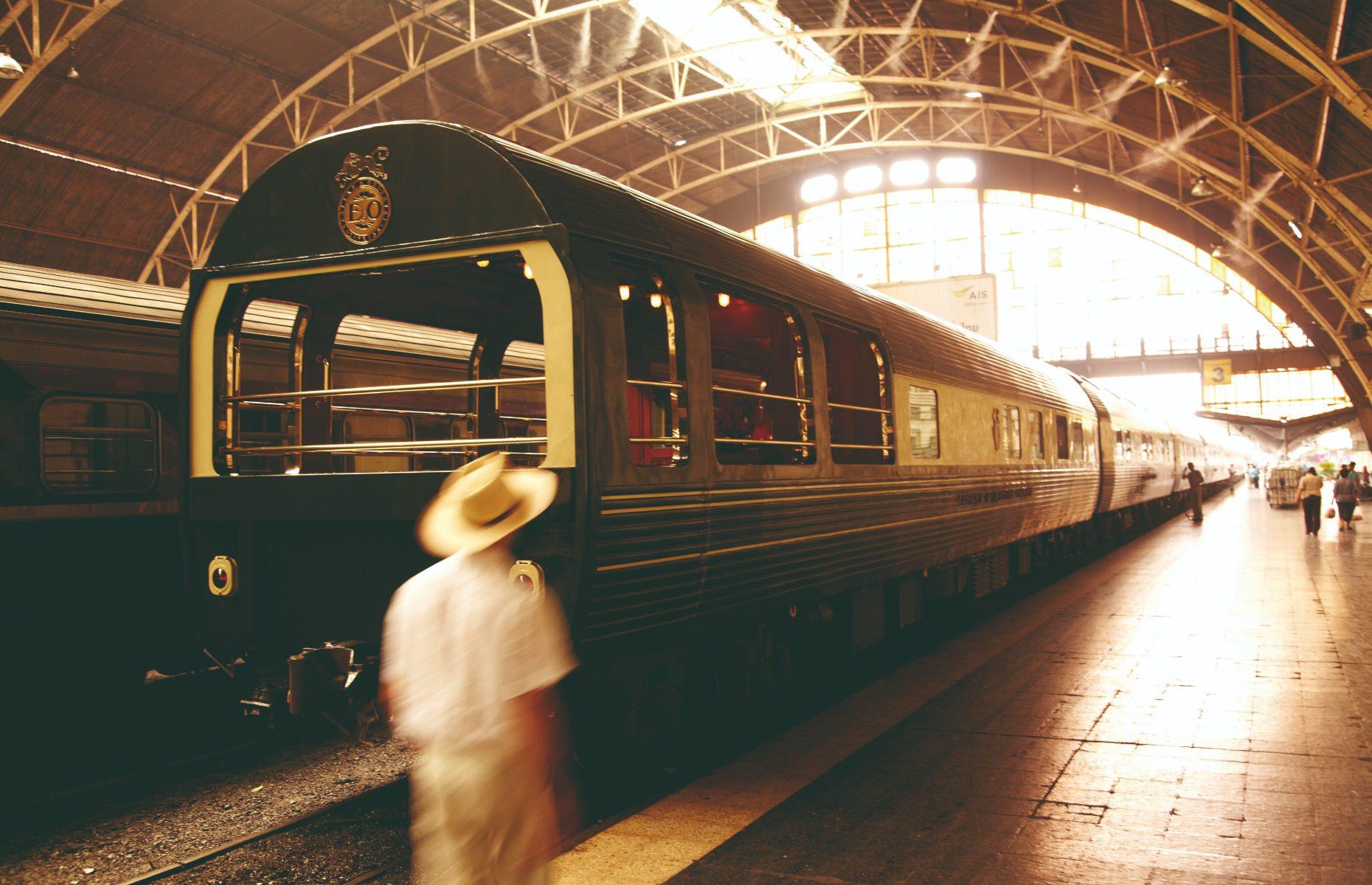
Eastern & Oriental Express, Singapore and Malaysia
After pausing operations for a few years due to the pandemic, Belmond’s Eastern & Oriental Express is triumphantly returning to the tracks of Southeast Asia from February 2024, with a fully refurbished and restyled look. This sister train of the Venice Simplon-Orient-Express first entered service in 1993, making its inaugural journey between Bangkok and Singapore. Now, Belmond is launching two new seasonal round-trip itineraries that will depart from Singapore’s Woodlands station and wind through the landscapes of Malaysia.
Liking this? Click on the Follow button above for more great stories from loveEXPLORING

The first route, 'Essence of Malaysia: A Gateway into Malay Culture', passes through Kuala Lumpur before passengers switch transport to private boats to visit the islands of Langkawi and Penang. The second, 'Wild Malaysia: Exploring Sights Unseen', takes in the eastern side of the Malaysian peninsula, with stop-offs also at Penang and the Taman Negara National Park, where Sumatran rhinos and tigers roam one of the planet’s oldest tropical rainforests. Belmond hopes to reinstate the E&O's signature Thai presence in due course.
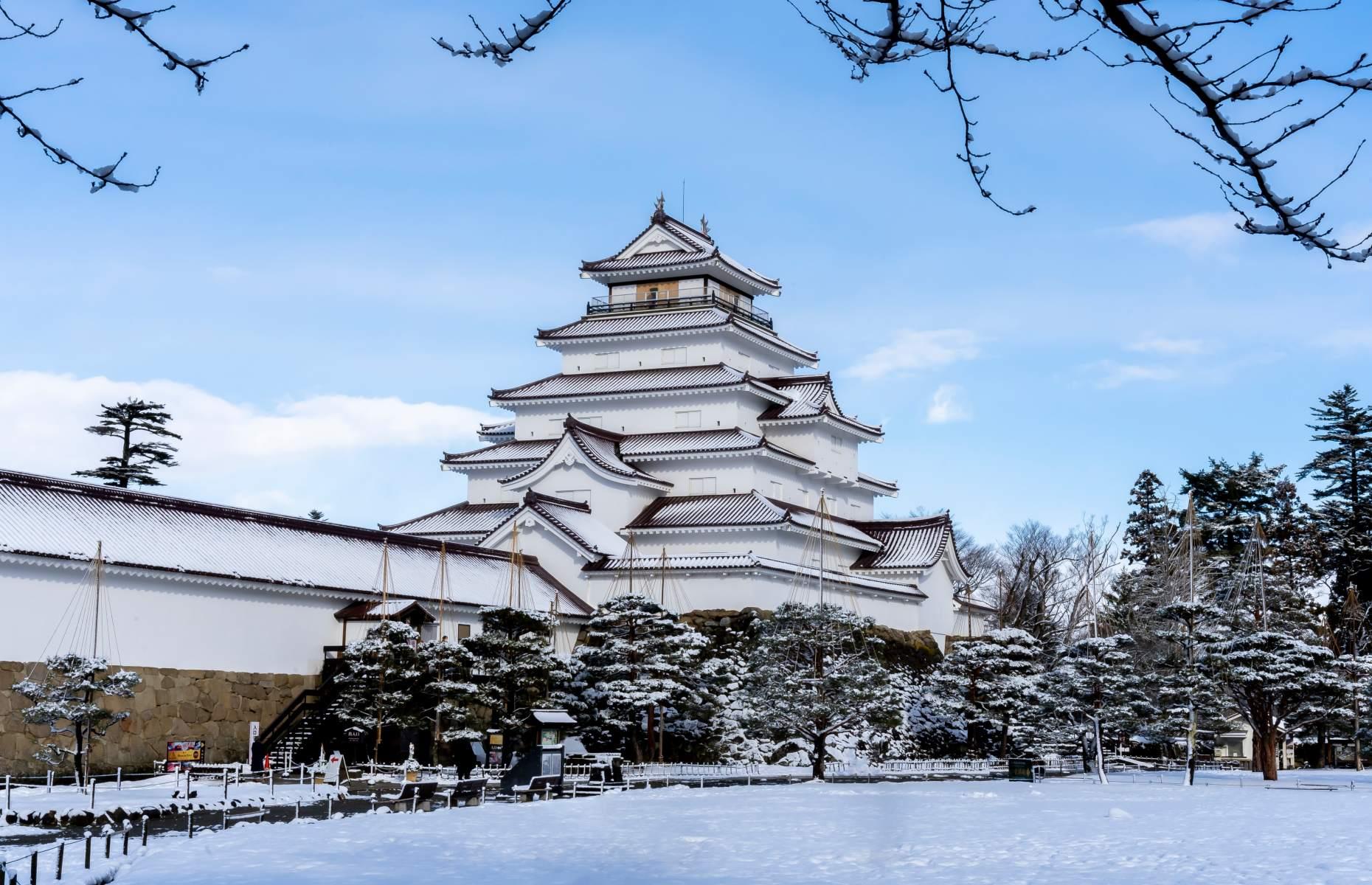
Hokuriku Shinkansen expansion, Japan
From 16 March 2024, travellers will be able to explore more of Japan’s Hokuriku region via one of the country's world-renowned Shinkansen trains. The Hokuriku branch currently runs between Tokyo and Kanazawa, capital of Ishikawa Prefecture, but is being extended this year from Kanazawa to Tsuruga station in Fukui Prefecture. Located along the northwest coast of Honshu, Japan's main island, the Hokuriku region offers delicious seafood, dramatic mountains, castle towns and culture-rich cities for those intrepid enough to veer off the typical tourist trail.
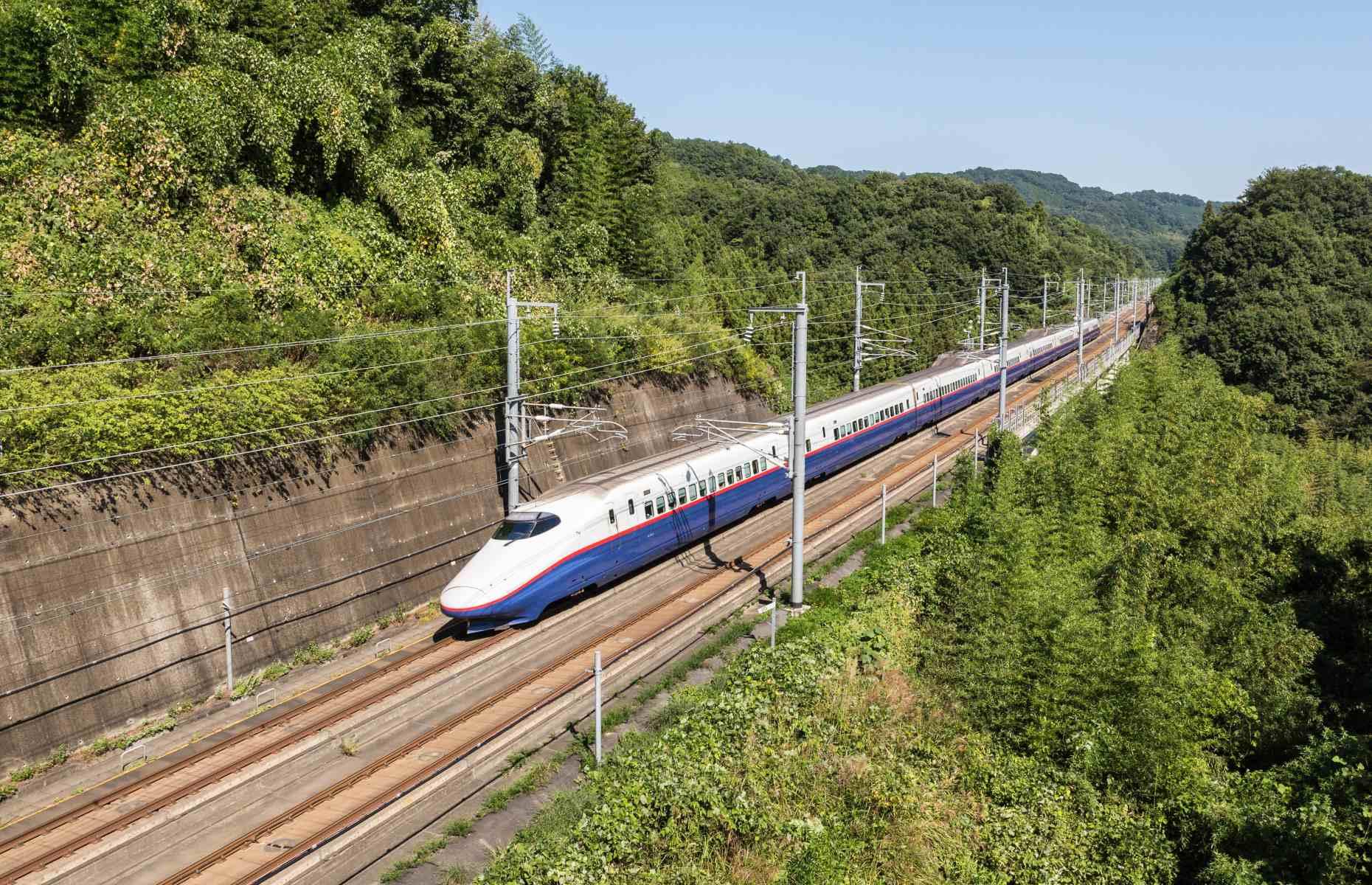
The new Shinkansen route will see the current journey time between Tokyo and Tsuruga slashed by 36 minutes, with its fastest trains taking just two hours and 51 minutes to zoom between the two stations. The extension was due for completion last spring, but higher-than-expected construction costs led to a delay. Ultimately, there are plans to further expand the Hokuriku Shinkansen’s reach beyond Tsuruga to Shin-Osaka station, though construction is yet to commence.
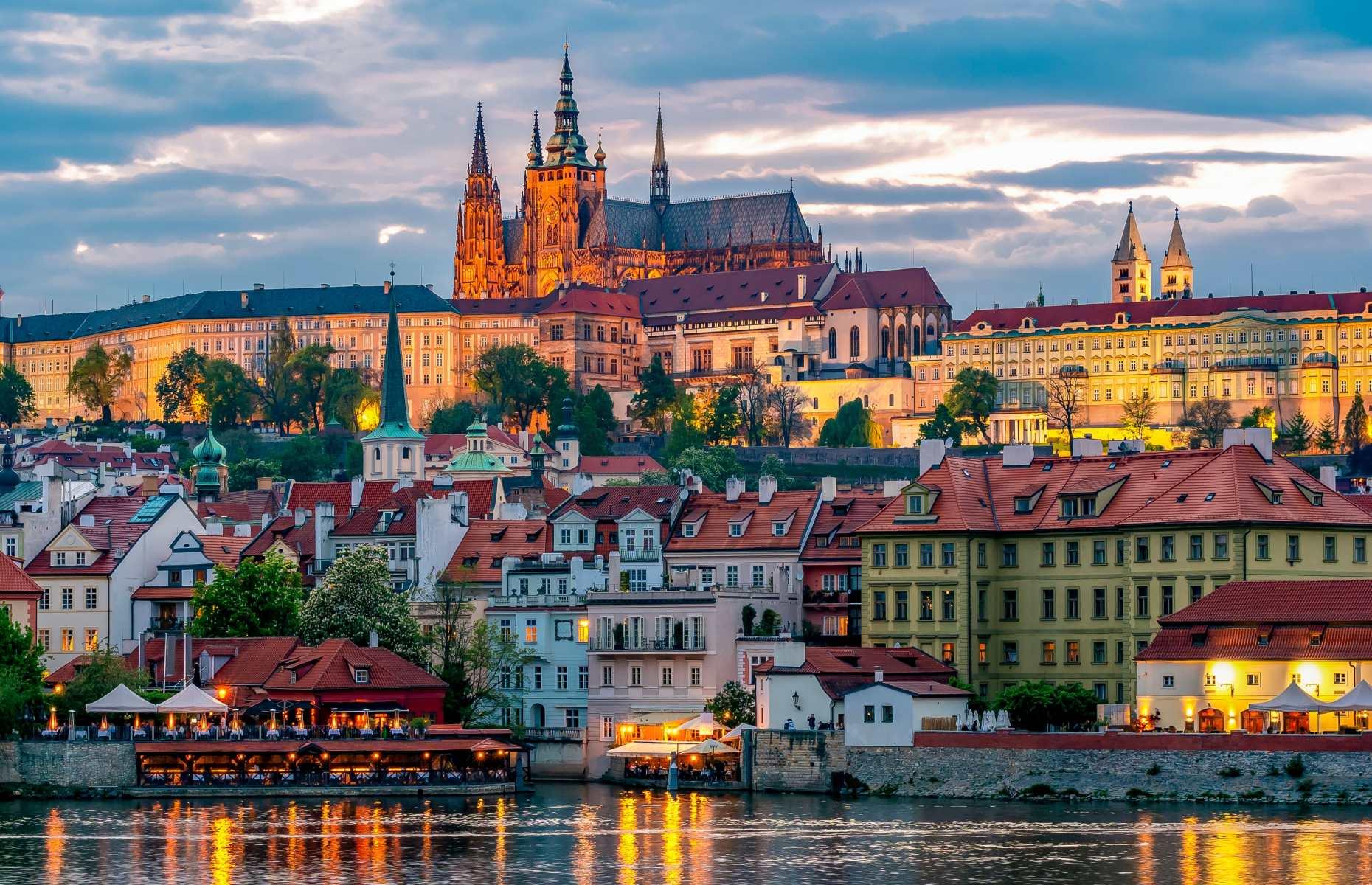
European Sleeper from Brussels to Dresden and Prague
It was one of the most anticipated new arrivals on the rail scene in 2023, and now the European Sleeper – which already links the Belgian and Dutch cities of Brussels, Antwerp, Rotterdam and Amsterdam to Berlin – is preparing for an exciting route extension. From 25 March 2024, the night train will no longer terminate in the German capital, but carry on to Dresden in eastern Germany and then across the Czech border into Prague (pictured).
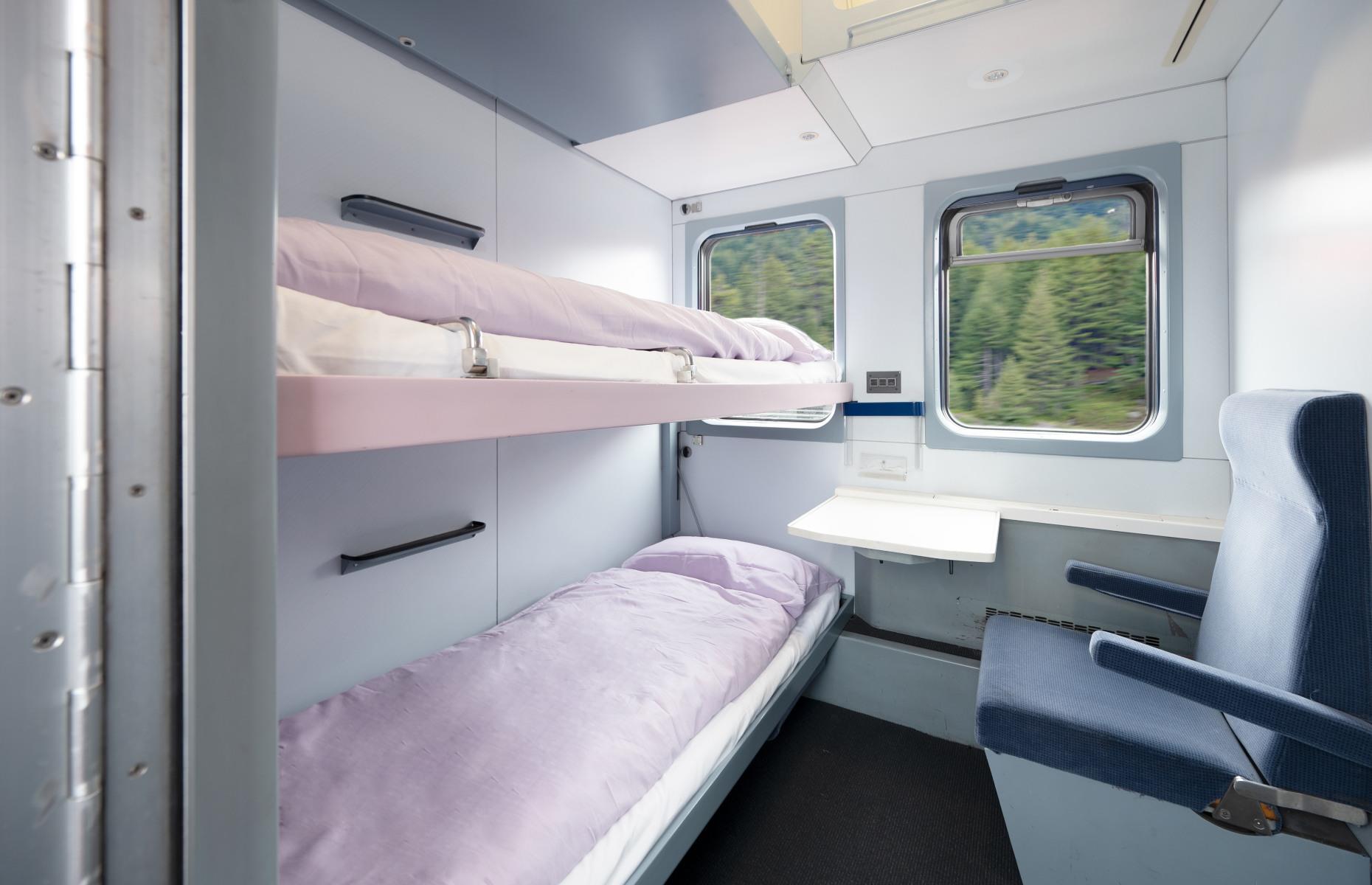
The new Dresden-Prague leg includes further stops in Germany and Czechia, such as the Saxony spa town of Bad Schandau. At the end of 2023, the European Sleeper also introduced a new stop at Amsterdam’s Schiphol Airport, increasing connections for travellers even further afield. From the train’s Brussels hub, international rail connections via the Channel-hopping Eurostar are a smooth ride. There are three different ticket options for European Sleeper passengers, ranging from budget-friendly reclining seats to convertible couchettes and cosy sleeping compartments (pictured).
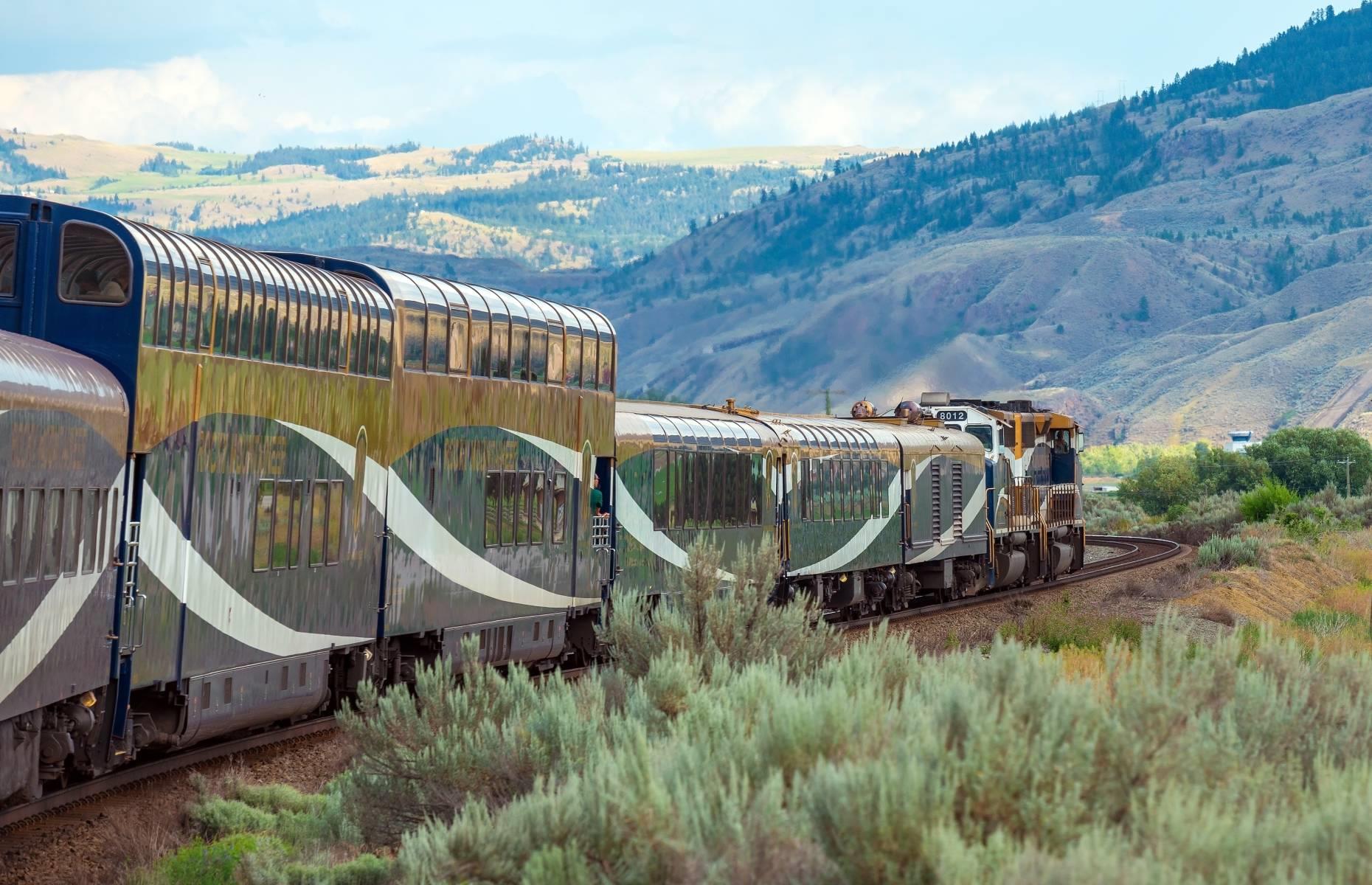
Around the World by Luxury Train from Railbookers
This sprawling new itinerary from tour operator Railbookers promises the most unforgettable adventure for train lovers. Calling at more than 20 cities across 13 countries and four continents, the 11-week itinerary sees passengers experience seven of the world’s most lavish trains in one trip: the Rocky Mountaineer in Canada (pictured); the Belmond Royal Scotsman; the Venice Simplon-Orient-Express; the Maharajas' Express in India; the Golden Eagle Danube Express; Rovos Rail in South Africa; and the freshly revived Eastern & Oriental Express.
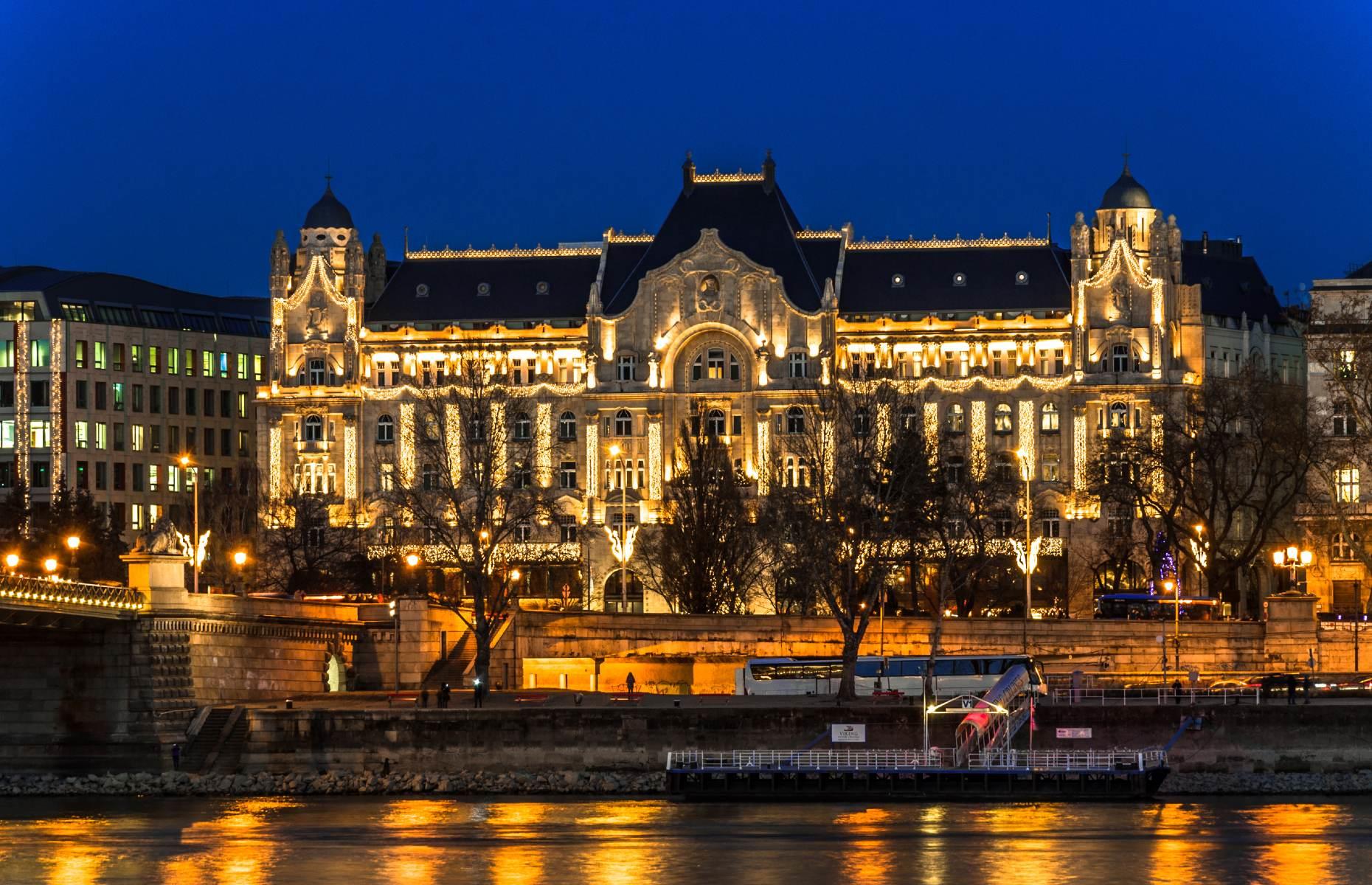
Departing on 28 August 2024 from Vancouver, the epic overland expedition also includes stays in some of the world’s finest hotels, from the iconic Fairmont Banff Springs to the Four Seasons Hotel Gresham Palace in Budapest (pictured). With accommodation, luggage transfers, flights, excursions and most meals included, it should come as no surprise that all this comes at a cost – with prices starting from around £92,000 ($115,599) per person. Railbookers serves customers in the UK, US, Australia and Canada.
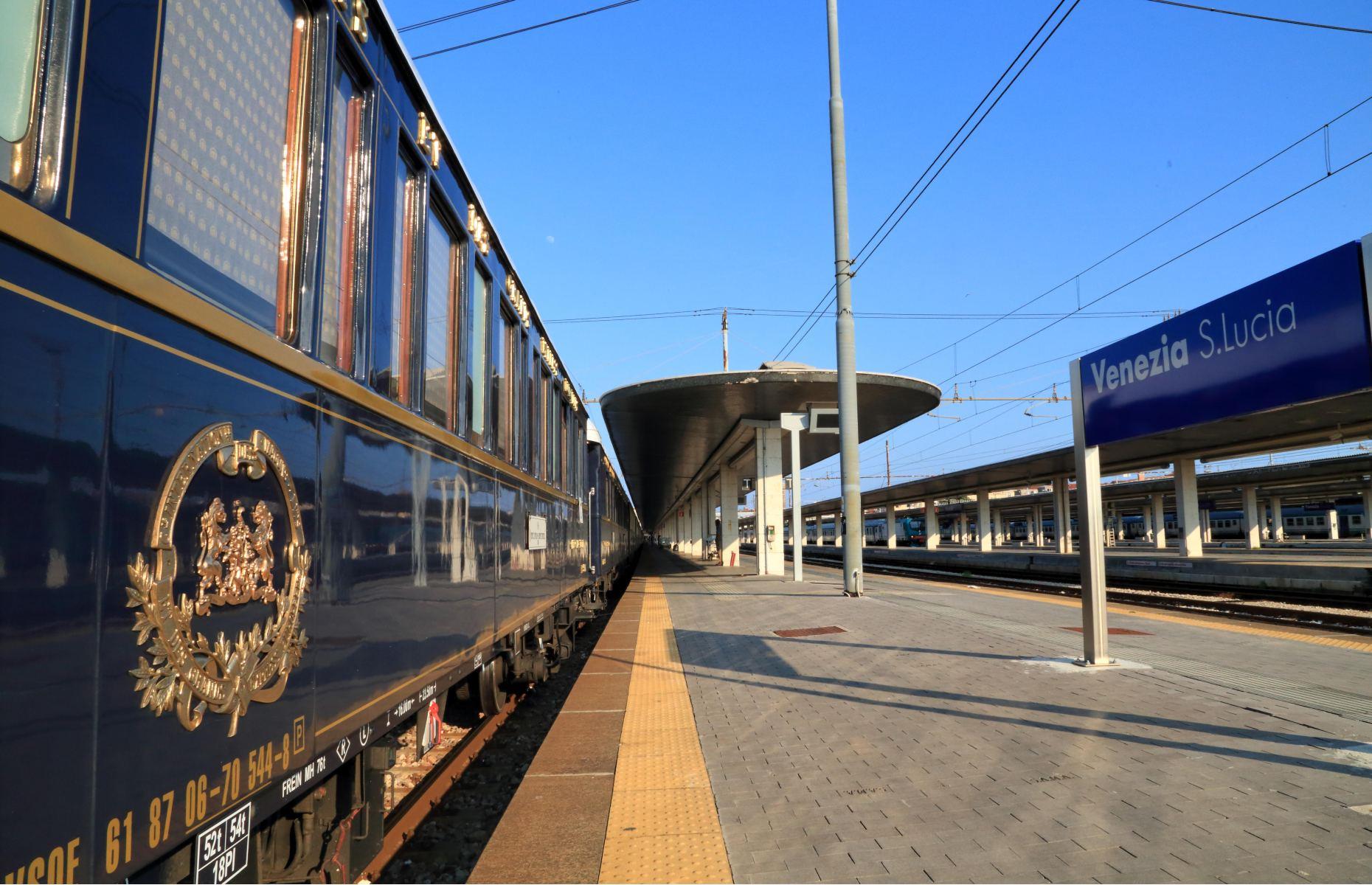
Orient Express La Dolce Vita, Italy
While the legendary Venice Simplon-Orient-Express (pictured) is nothing new, it's about to get a very trendy younger sister: the Orient Express La Dolce Vita, created by the Accor hotel group. Slated to hit the rails later in 2024 (a year behind schedule), this new iteration of the historic locomotive is targeted at more design-conscious travellers, swapping out Belle Epoque maximalism for mid-century curves and retro prints. La Dolce Vita's sleek fleet will also sport luxe wood-lined cabins, live music and menus dedicated to sustainable Italian produce. Pre-registration is open now.
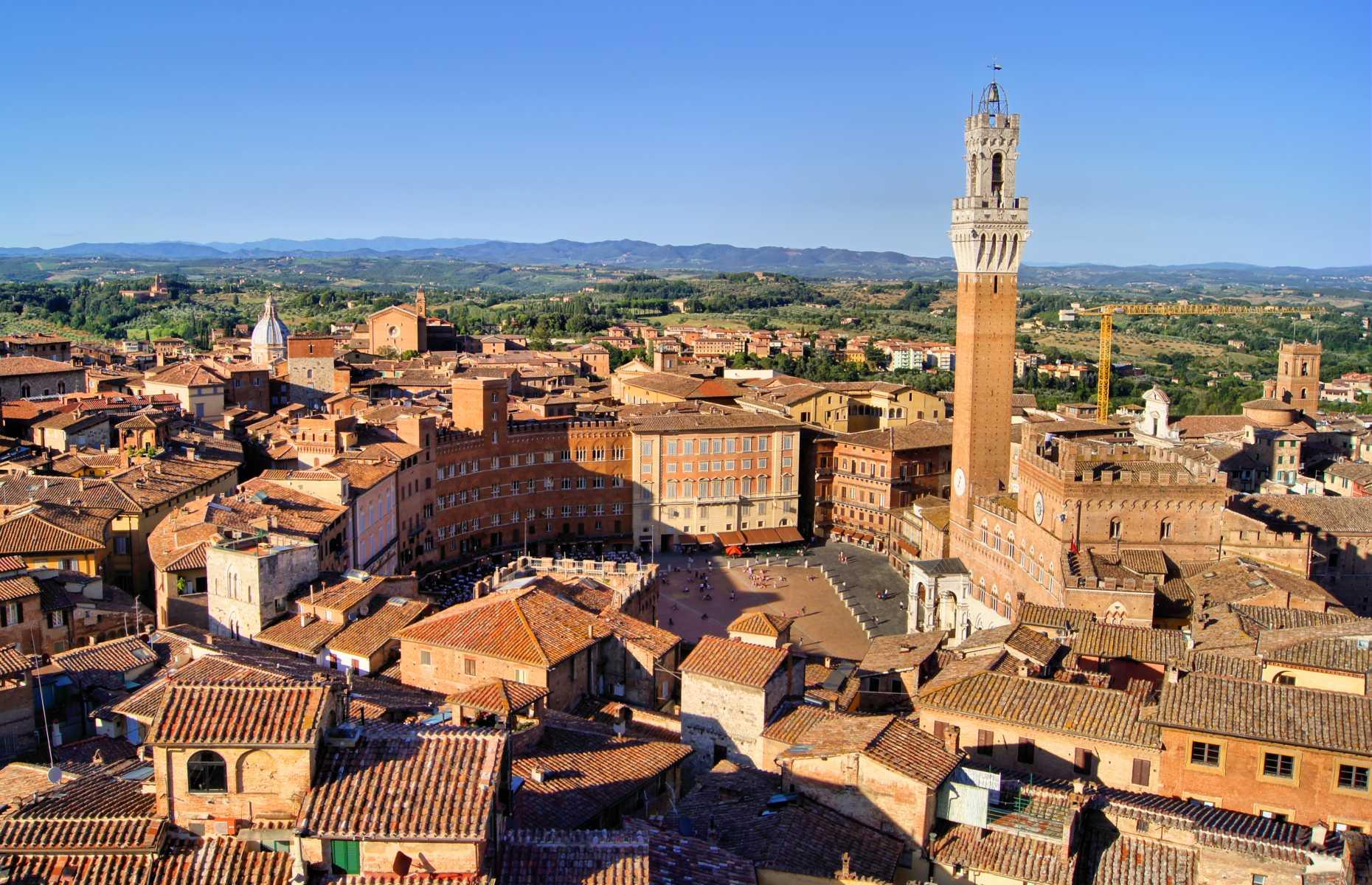
As you might expect of the Orient Express dynasty, a trip on La Dolce Vita won't be your average train journey. Offering exquisite service on eight different itineraries that last from one to two nights, the stylish sojourns will sweep through Rome, Venice, Siena (pictured) and the Italian Alps, as well as Portofino, Matera and Sicily (via one of Europe’s last passenger train ferries). Future plans involve increasing the train's reach internationally to Paris, Istanbul and Split in Croatia.
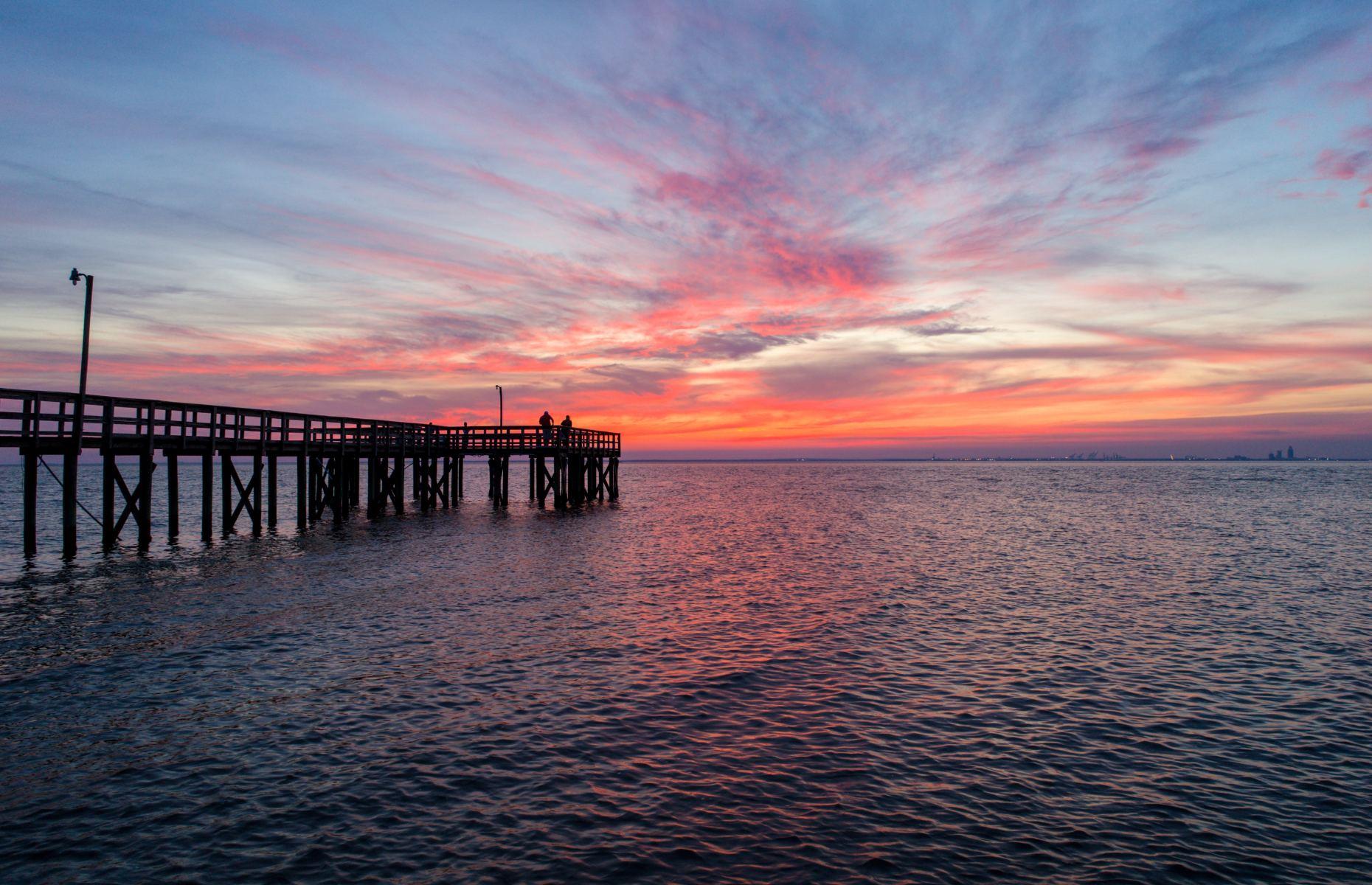
Amtrak from Mobile to New Orleans and wider network upgrade, USA
Expected to start welcoming passengers later this year, a new Amtrak route between Mobile in Alabama and New Orleans in Louisiana will soon cruise along southern America’s gorgeous Gulf Coast (pictured). The train will also stop at four stations in Mississippi: Bay St Louis, Gulfport, Biloxi and Pascagoula. It will mark the return of passenger train services to the Gulf Coast for the first time since 2005. While an exact date for the launch is yet to be confirmed, familiarisation trips on the tracks began in 2023.
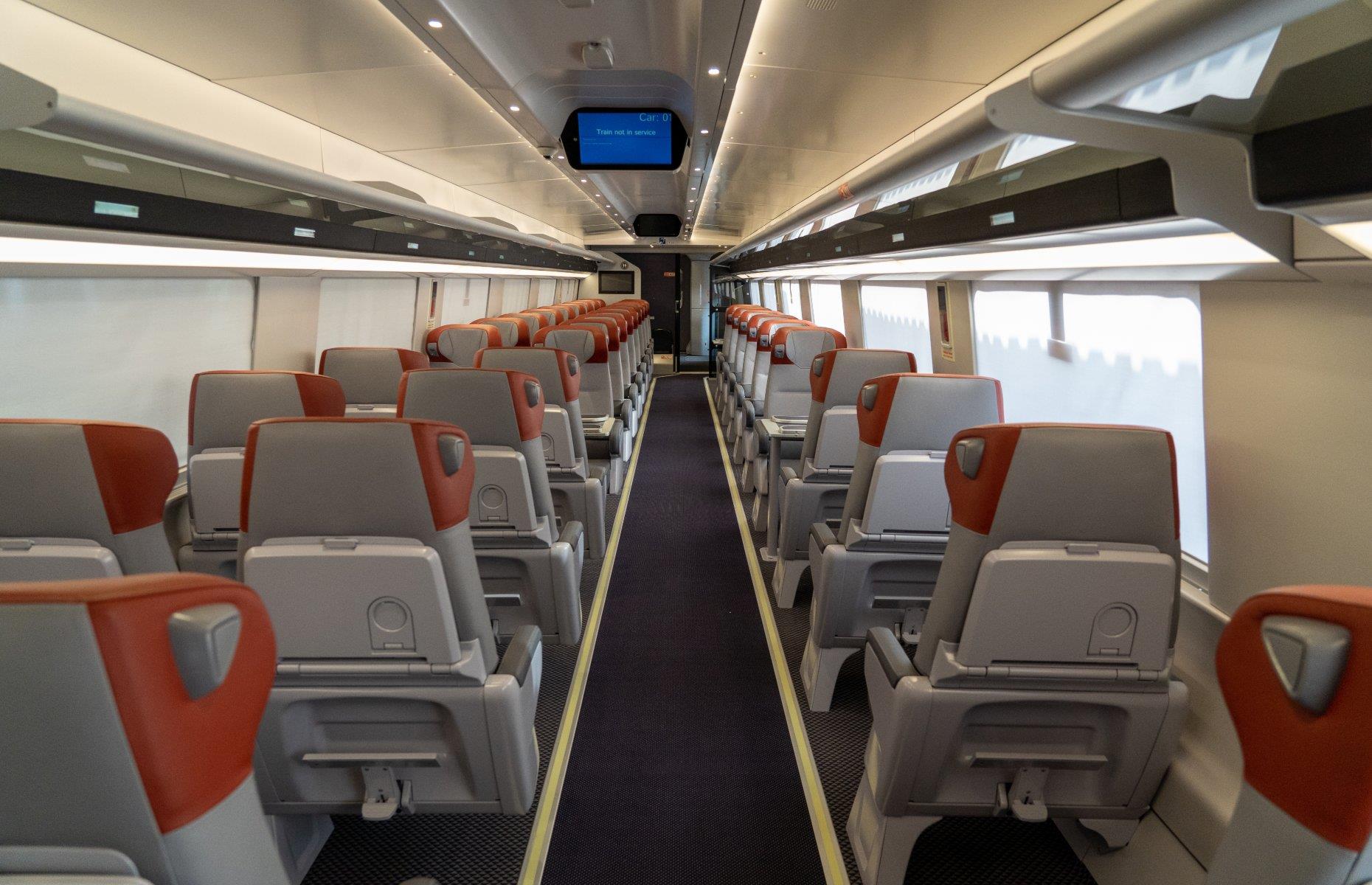
There’s other exciting Amtrak news while we wait for a date: a shiny new fleet of Acela high-speed trains (pictured) are due to enter service this year. They’ll take over the existing Northeast Corridor route connecting Boston, Providence, New York City, Philadelphia and Washington DC, offering smoother, speedier and more spacious rides. In November 2023, President Joe Biden announced $16 billion (£12.7bn) of funding for more than two dozen projects along this much-travelled line.

Midnight Trains, various
From 2025, there’ll be a new kid on the overnight train block, looking to further upgrade nocturnal rail travel in Europe. Midnight Trains is a French company putting the wheels in motion for several new routes out of Paris. The first service to launch will whisk passengers to Milan and Venice under cover of darkness. Self-described as hotels on rails, Midnight Trains will feature private, en-suite rooms throughout their fleet, with plush bed linen, a library of on-demand films to keep you entertained and top-range food-and-drink amenities.
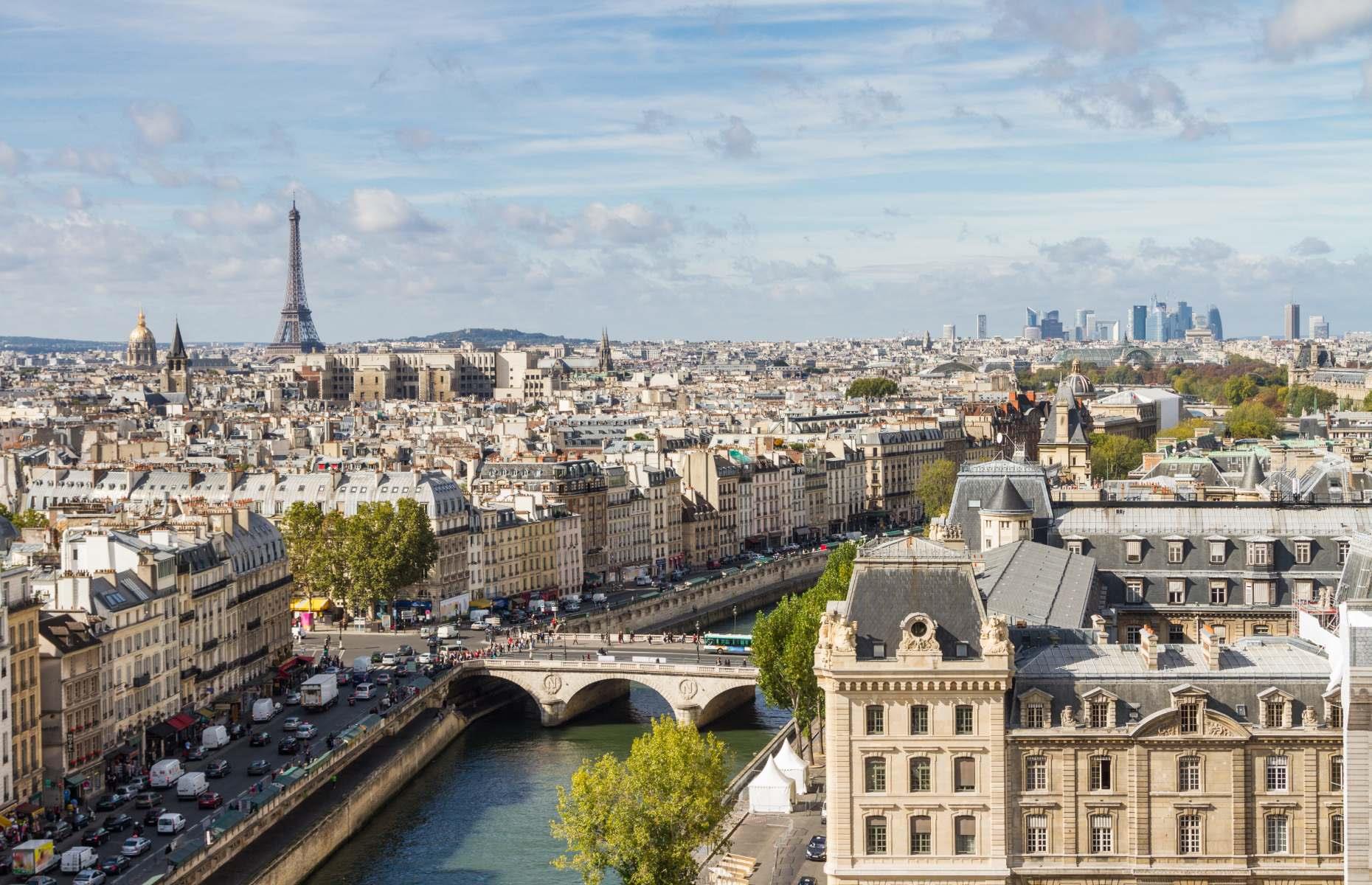
Everything, from the point of booking to when you step off the train, will be managed through a bespoke app that allows you to personalise your journey. As well as the inaugural Paris-Milan-Venice route, Midnight Trains is also planning to seamlessly connect cities such as Edinburgh, Copenhagen, Porto and Madrid to the French capital (pictured). When complete, this new network will comprise more than 10 destinations across the continent.
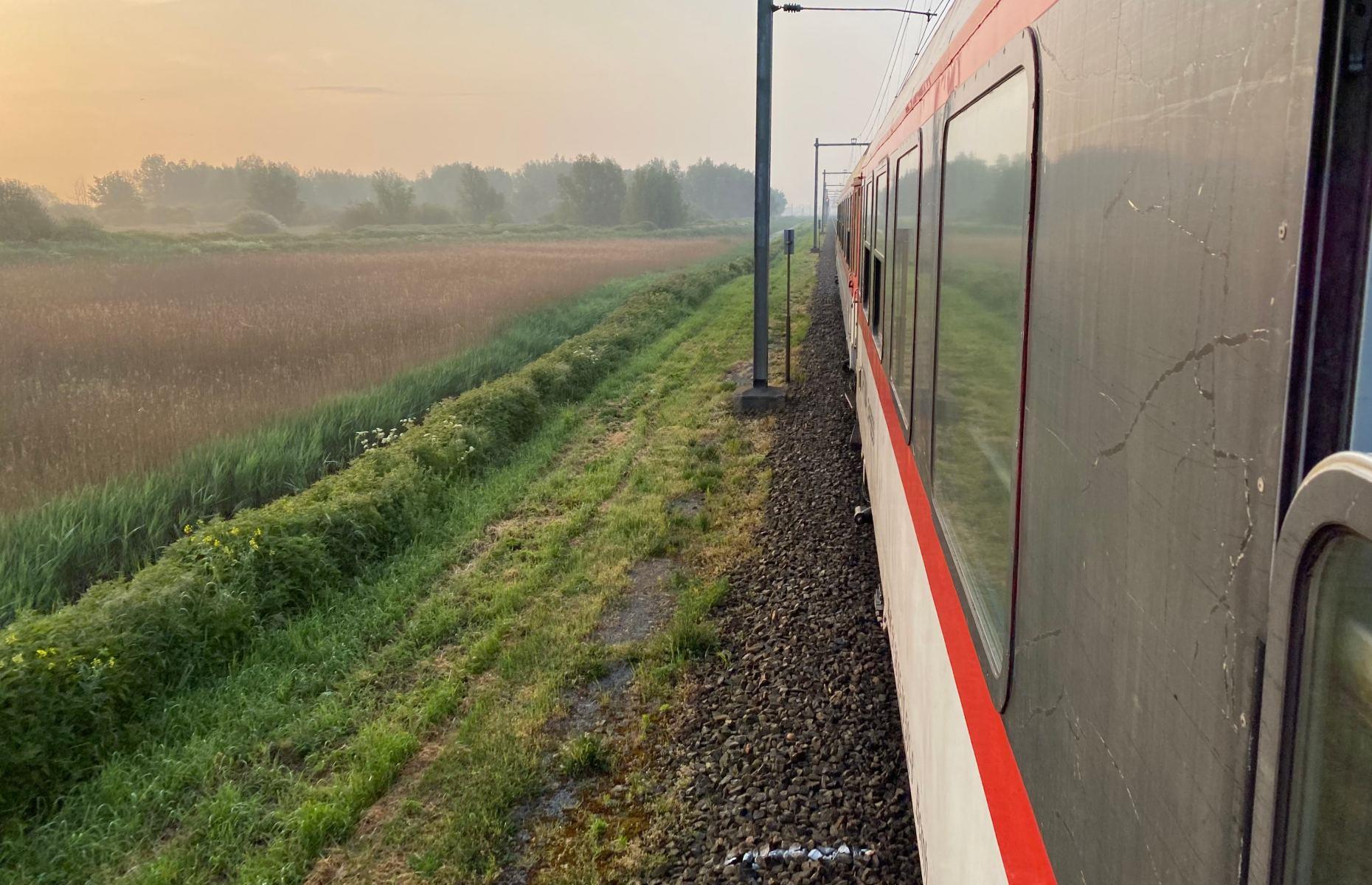
European Sleeper from Amsterdam to Barcelona
Fans of the European Sleeper will be delighted to know that it will soon be adding another route to its roster – connecting Amsterdam to the buzzing Catalonian city of Barcelona. You’ll have to wait a little longer for this one, with the service not set to begin until spring 2025. Expect modern trappings such as wifi and charging points, as well as complimentary breakfast included with sleeper and couchette bookings (as with the existing run out of Brussels).
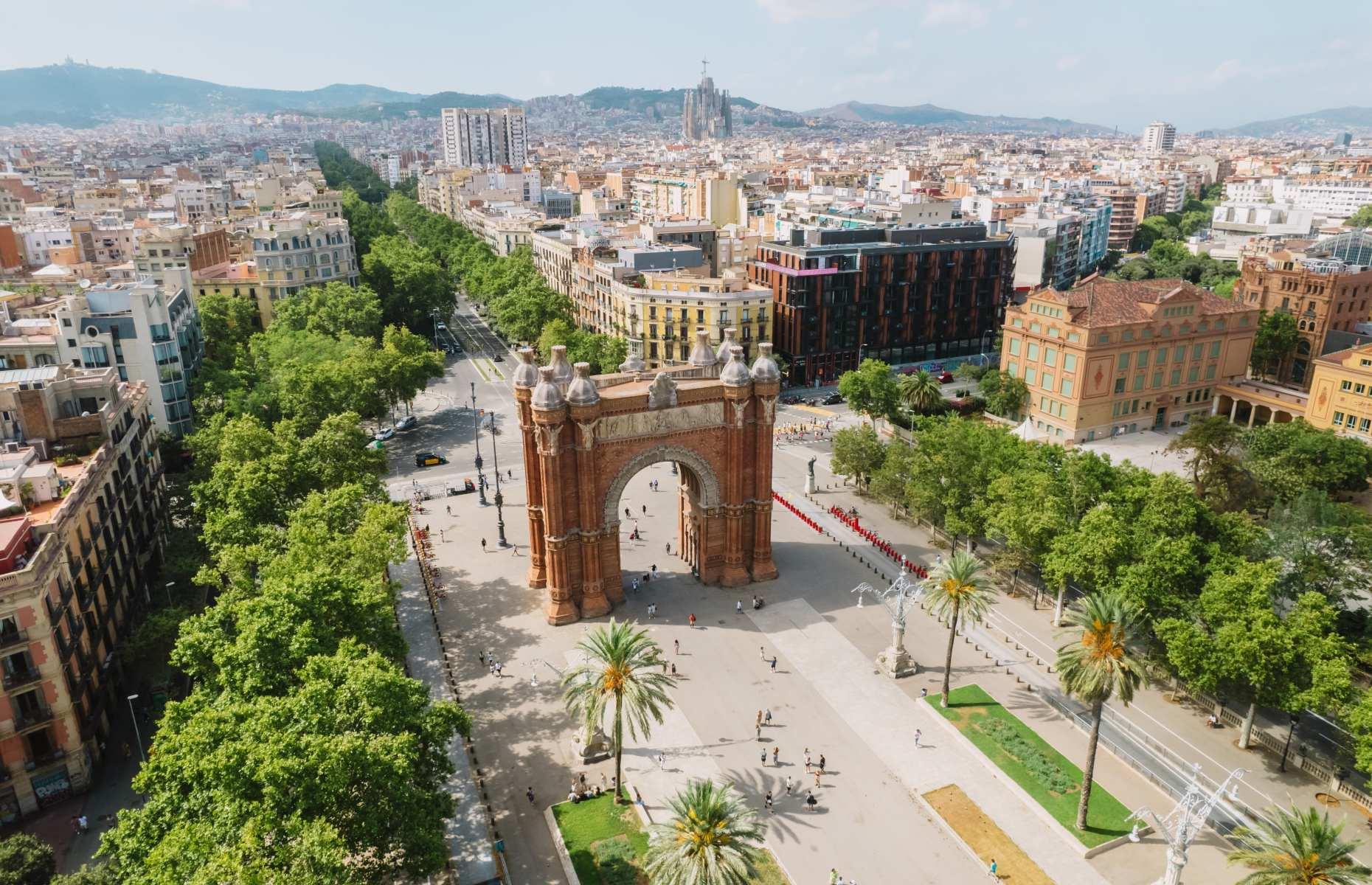
The proposed route between Amsterdam and Barcelona (pictured) includes stops in Avignon, Montpellier, Perpignan, Figueres and Girona, though it is not yet known how long the complete end-to-end journey will be. One thing we can say for certain, though, is that the views from your window will span the evolving scenery of at least four countries, and it'll be a wonder if you manage to steal any sleep at all.
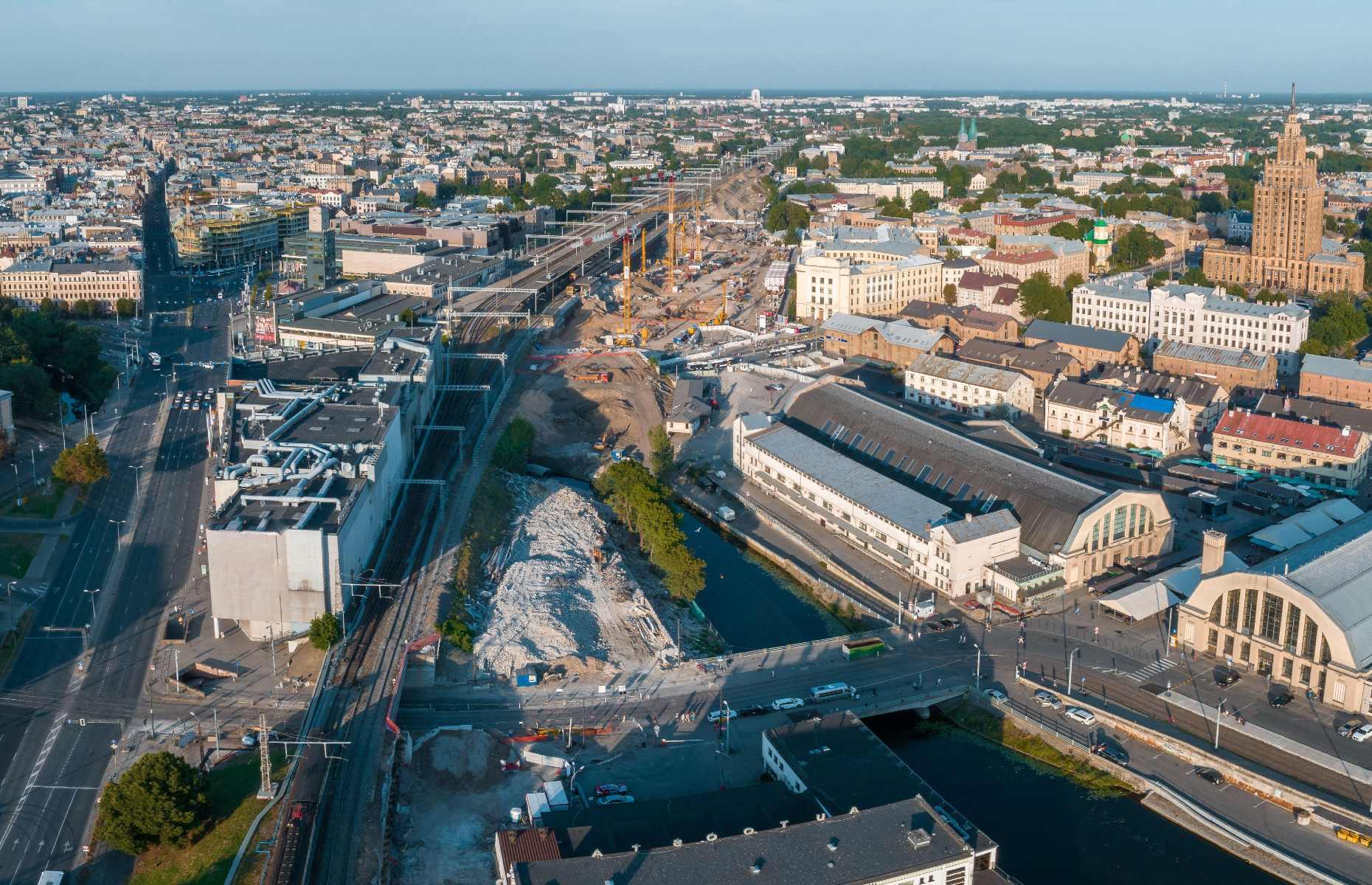
Rail Baltica, Poland, Lithuania, Latvia and Estonia
They've been the missing piece in the European railway puzzle for a long time, but now – gradually – the Baltic states are at last getting connected with speedy train services. Rail Baltica is one of the region's largest ever infrastructure projects, and will link cities like Warsaw, Vilnius, Kaunas, Riga and Tallinn (as well as Helsinki indirectly and Berlin by night train) when the 541-mile (870km) route is completed in 2030. The idea has been more than 30 years in the making, since the former Soviet Union countries gained independence in the 1990s.
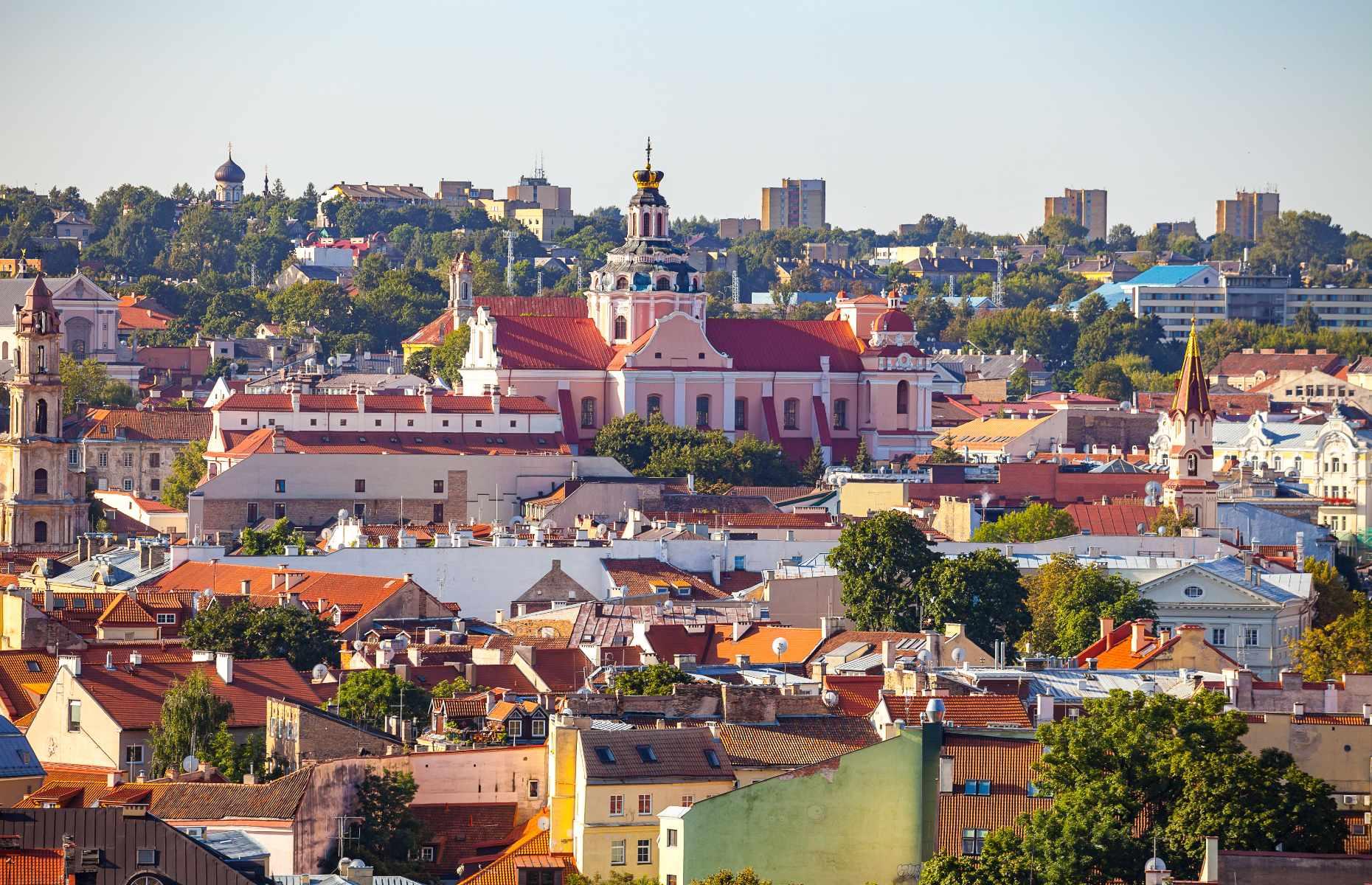
Eventually replacing the long-distance buses and unsustainable flights that travellers currently rely on to hop between Poland, Lithuania, Latvia and Estonia, Rail Baltica will be a quiet, fully electric fleet with a colour scheme designed to reflect the sun, sea and sand of the Baltic Coast. While there’s still a long way to go before we can enjoy this particular route in its entirety, there are hopes that some sections will be ready to transport passengers by 2028.
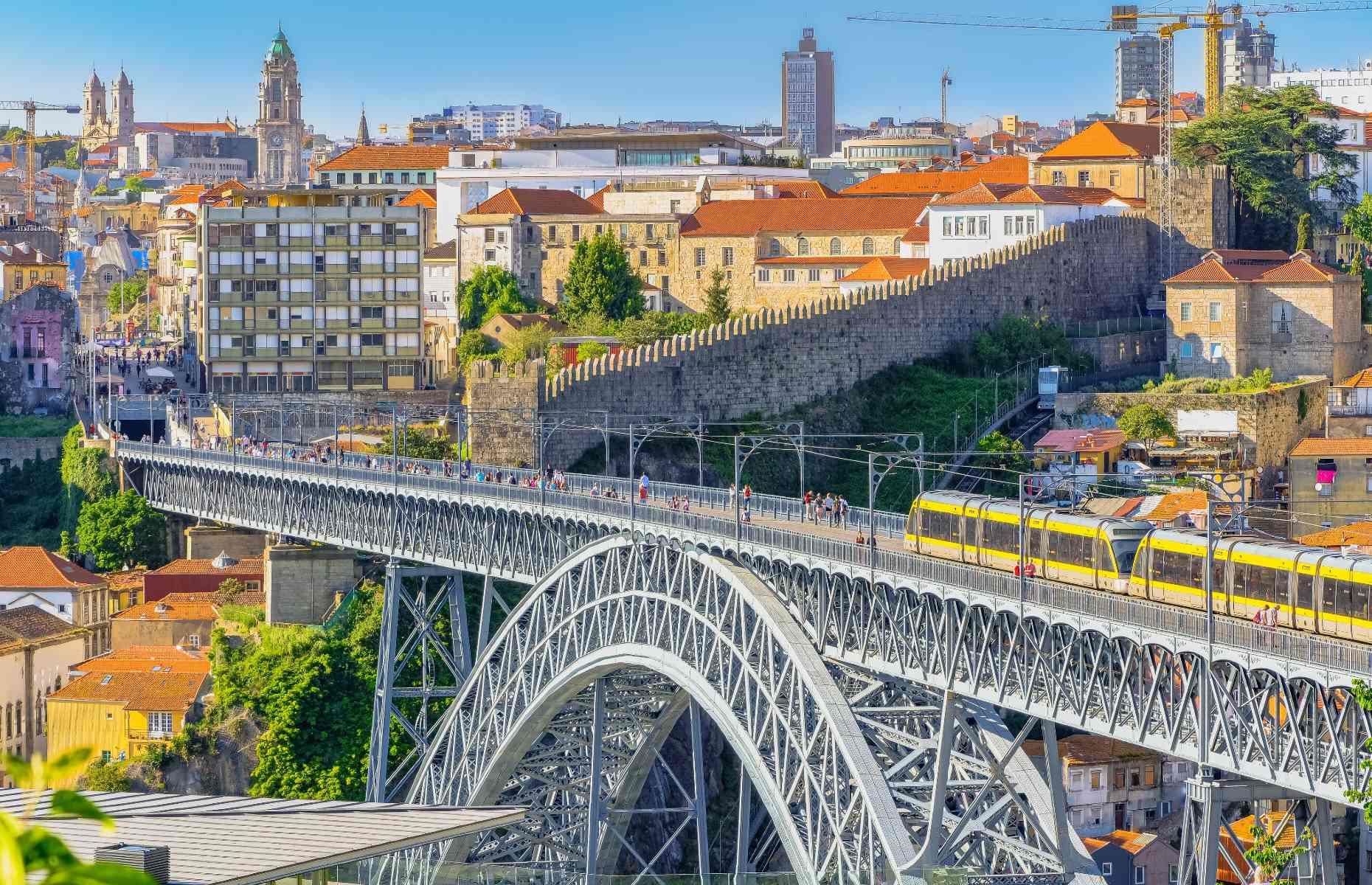
New high-speed service from Porto and Lisbon to Vigo
In November 2022, the vision for an advanced high-speed rail link between the Portuguese cities of Porto (pictured) and Lisbon and Vigo in Galicia, northwest Spain, was laid out by the Portuguese government. While the existing fast service between the country's capital and second cities takes just under three hours, this new proposal could see the journey time more than halved to one hour and 15 minutes. Extending the route to Vigo will allow passengers to travel the length of Iberia's Atlantic coast at speeds of around 186 miles per hour (300km/h).
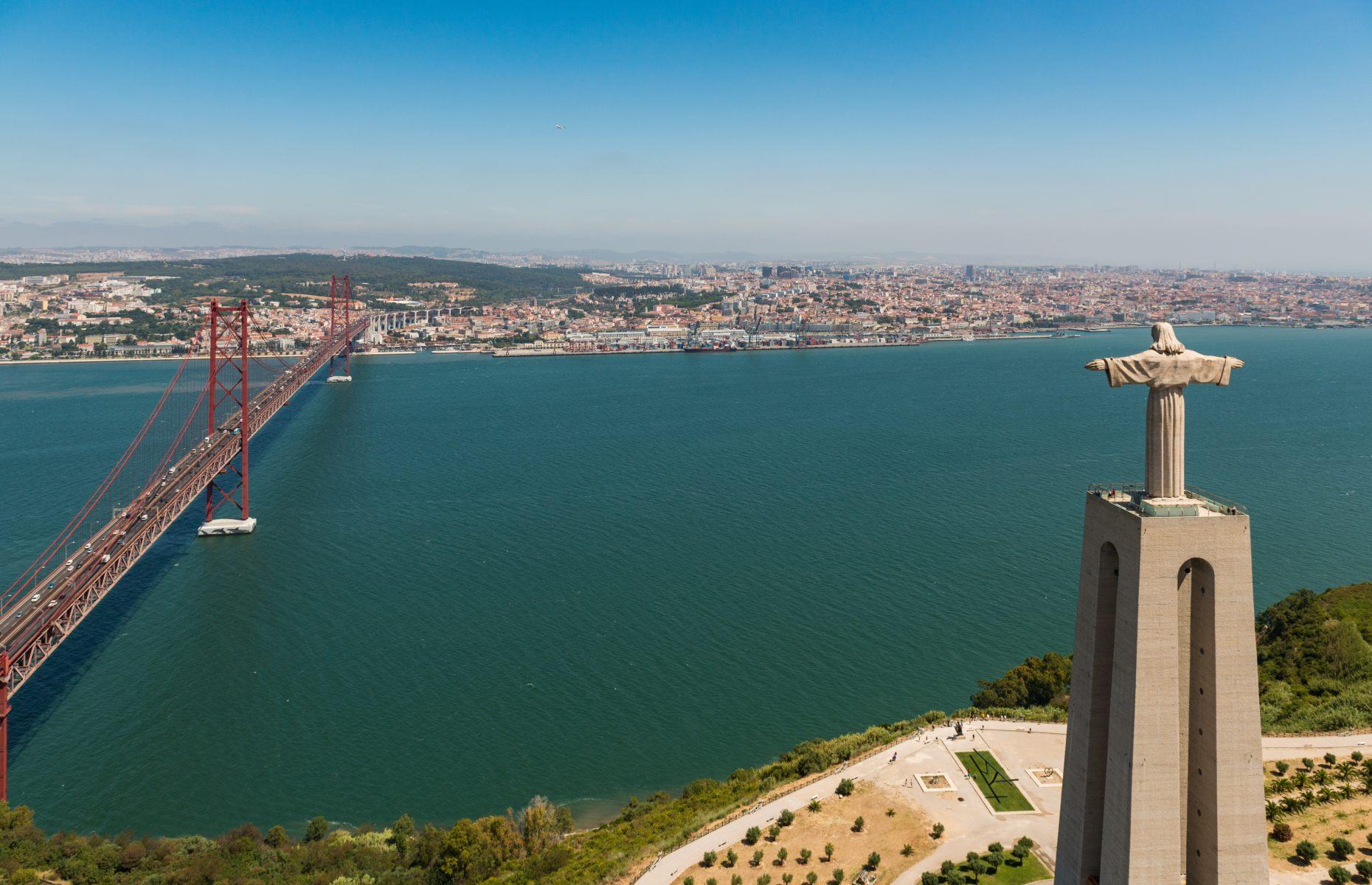
Construction on the Porto-Lisbon-Vigo route is set to start this year, but won't be completed until the early 2030s. This is all part of a wider infrastructure overhaul to Portugal's rail network, which will also include new local district connections and a crossing over the Tagus river (pictured), ultimately creating high-speed links from 10 of the country's main cities. In its entirety, the project is estimated to be completed by 2050.
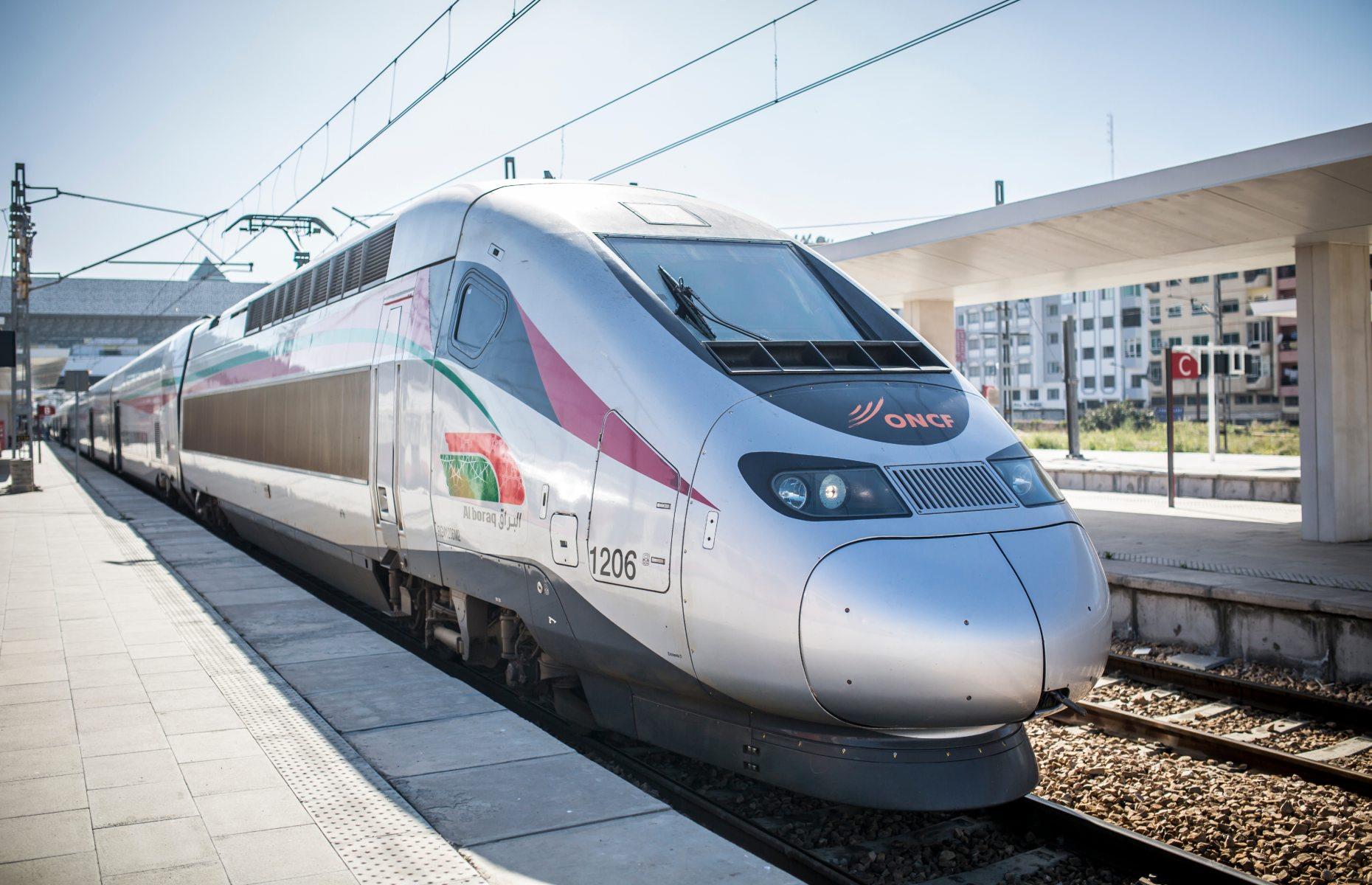
African Integrated High-Speed Railway Network, various
Taking inspiration from the Al Boraq (pictured) – Africa's first express train, which runs along the coast of Morocco from Tangier to Casablanca – the African Union is in the process of laying the groundwork for a speedy, continent-wide rail system of epic proportions. Known as the African Integrated High-Speed Railway Network, the megaproject is supposed to open in its first phase by 2033, with more connections to be added by 2063.

Three pilot schemes have now been selected: the first routes to open will be Dar es Salaam in Tanzania to Kigali in Rwanda; Kampala in Uganda (pictured) to Bujumbura in Burundi; and Pretoria in South Africa to Walvis Bay in Namibia, via Botswana's capital Gaborone. The ultimate aim is to provide Africa’s 16 landlocked countries with better access to major ports and neighbouring nations, increasing connectivity and economic development across the continent.
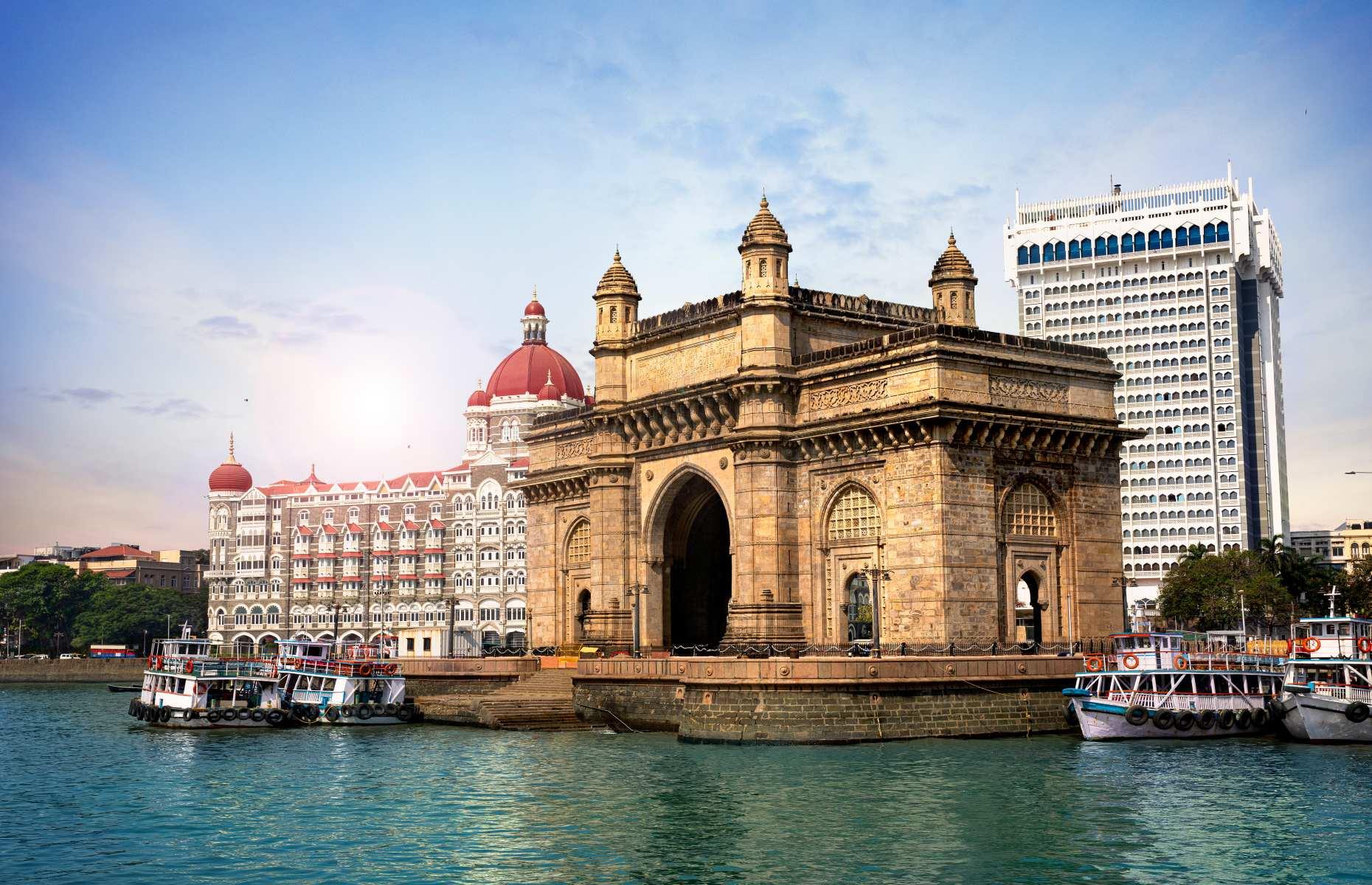
Underwater train from the UAE to India
It was first mentioned in theory back in 2018, but now it looks like the United Arab Emirates’ plans to build an undersea railway to India might be gathering steam. The bold project could connect the shimmering metropolis of Dubai with bustling Mumbai (pictured) in a matter of minutes, with proposed speeds of up to 621 miles per hour (1,000km/h). Provisionally named the Dubai-India Hyperloop, it’s set to push the boundaries of innovation beyond anything the UAE has accomplished so far.
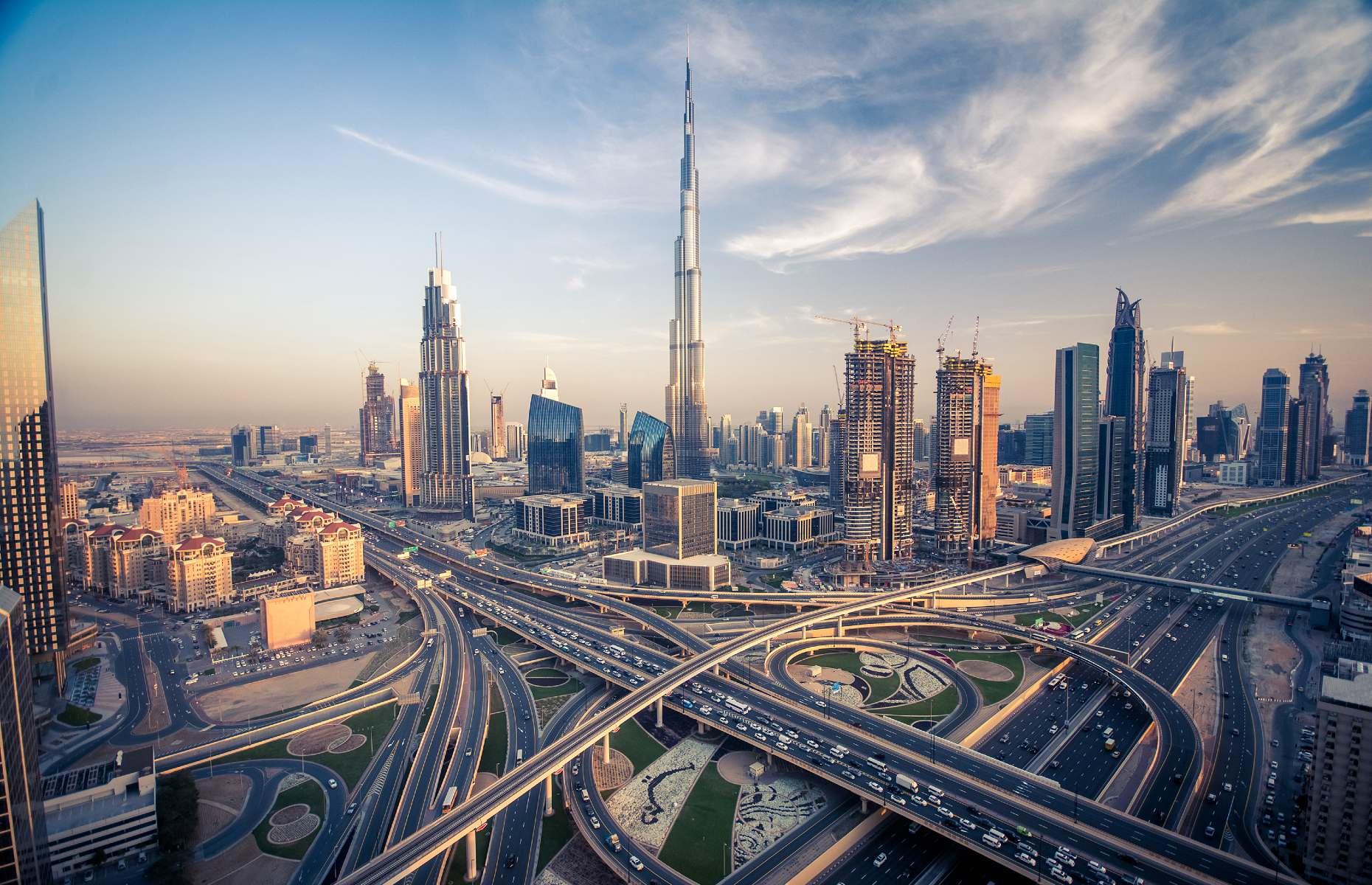
It may sound like an audacious concept, but at its heart it's just a variation of what the Channel Tunnel between the UK and France has been doing since 1994. No timeline has yet been given for the Dubai-India Hyperloop, but we certainly shouldn’t expect it any time soon. Conceiving and creating the world’s fastest land-based public transport – and then putting it in a large tunnel – will be no mean feat.
Liked this? Click on the Follow button above for more great stories from loveEXPLORING
Now read on for the world's most beautiful and affordable train journeys
More for You
If You See Black Residue on Your Cast-Iron Skillet, This Is What It Means
Israel Launches Retaliatory Strike Against Iran
13 Titanic Mysteries That May Never Be Solved
Unplug These 29 Items That Hike Up Your Electricity Bill
Windows fell out of King’s plane mid-flight after filming lights melted frames
James Bond Trailer Featuring Henry Cavill Receives 2.3M Views Despite Being an AI Fake | THR News Video
I Lost White Friends When I Finally Spoke Out
Costco’s New Comfort Food Meal Kit Is a Total Treasure
I’ve Worked on Cruise Ships for 10 Years—These Are 18 Mistakes Every Traveler Should Avoid
'Law & Order' star helps child find her mom after being mistaken for real-life police officer
19 Historical and Old School Jokes That Made Us Crack Up
The Best Met Gala Entrances, from Lady Gaga to Rihanna
I Did a 25 Day Water Fast. I Lost 20lbs and My Skin Cleared Up
Experts Say These Are The 5 Worst Foods For Your Cholesterol
A sheriff, a felon and a conspiracy theorist walk into a hotel. They’re there for the same conference.
Don’t pack these 9 TSA-prohibited items in your checked baggage
Movie Miscasts: 15 Times the Wrong Actor Was Chosen for a Role
The Best All-You-Can-Eat Buffet in Every State
California Schools Are in Crisis as Cafeteria Workers Leave After New $20 Minimum Wage Increase
'Truly Unique' Roman Lead Coffin Found to Contain Child's Remains
- Share full article
Advertisement
Supported by
In the Nigeria Pavilion, Criticism Meets Optimism
The group show “Nigeria Imaginary” will be one of the most ambitious African presentations ever at the Venice Biennale.

By Siddhartha Mitter
Reporting from Lagos, Nigeria
People in Lagos, Nigeria’s largest city, are hardly shy. The stereotype runs toward boisterousness, worn as a point of pride. But when the artist and poet Precious Okoyomon recorded interviews with some 60 city residents in January for an art project, the unusual questions — like “Who was responsible for the suffering of your mother?” — proved disarming.
Okoyomon is based in Brooklyn, but lived in Lagos as a child and still visits there frequently. The artist was collecting material for a sonic and sculptural installation that will be presented in the Nigeria Pavilion at this year’s Venice Biennale . The event, one of the art world’s most important, opens for previews next week and to the public on April 20.
Okoyomon’s steel-framed structure, erected in a courtyard, imagines a kind of radio tower, decked with bells and colonized by creeping vines. Motion sensors on the tower activate a soundtrack: It will play in the courtyard and also online, for anyone to tune in. It mixes poems by Okoyomon with music and passages from those interviews, whose respondents range from fellow artists to “strangers, someone’s cook, someone’s auntie,” Okoyomon said.
After some wary first reactions to the intimate 12-question protocol (adapted from another poet, Bhanu Kapil ), the conversations grew vulnerable and real, Okoyomon said. The resulting sound piece, was “a kind of speaking in tongues,” as if tapping the unconscious of the city, Okoyomon added.
Okoyomon is a Venice veteran: In 2022, the artist presented a major installation in the Biennale’s main exhibition . But this year Okoyomon is one of the eight lauded artists to represent Nigeria in the country’s second-ever Venice pavilion — one of still relatively few African presentations at the Biennale, and one of the most ambitious in concept and scale.
Titled “Nigeria Imaginary,” the pavilion fills a semi-restored palazzo in the Dorsoduro district with projects that cast an oblique but pointed look at history. One is Yinka Shonibare’s exacting clay replicas of 150 of the Benin Bronzes that a British expeditionary force plundered in 1897; they accompany a bust of the raid’s British commander painted in batik patterns and placed in a vitrine, a kind of symbolic restitution awaiting the real thing.
In the most contemporary reference, a sculpture by Ndidi Dike made of 700 police-grade batons, together with photographs from mass protests against Nigerian police violence in 2020 — and their bloody repression — link popular struggles in the country to the Black Lives Matter movement in the United States, Britain and Brazil.
Other projects — by Tunji Adeniyi-Jones , Onyeka Igwe , Abraham Oghobase , Toyin Ojih Odutola and Fatimah Tuggar — span drawing and painting, video and photography, even A.I. and augmented reality. They suggest fresh ways for Nigerians, and also the world, to think of the country — a behemoth of some 220 million people that is often dismissed as a place of crisis or corruption.
Thus Ojih Odutola’s charcoal and pastel works on linen stage free-spirited, gender-flexible characters in a setting inspired by Mbari houses, once built for ritual in southeastern Nigeria; a linked reference is the Mbari Club , which gathered Nigerian artists and writers in the 1960s. “I wanted the space to exist very open and free,” said Ojih Odutola, who is based in New York and Alabama, of the suite of drawings. In her imagined Nigeria, she added, creativity “is safe; it has room to roam; it has the right to change, to be mercurial.”
Adeniyi-Jones, who was raised in Britain and now lives in Brooklyn, has produced an overhead painting influenced by Nigerian Modernist artists and Italian ornamental tradition that will hang below the palazzo ceiling.
Oghobase, who works in photography and installations and is newly living in Canada, examines resource extraction in northern Nigeria through original and archival images plus diagrams from a vintage mining treatise.
Tuggar, who teaches at the University of Florida, considers the humble calabash gourd — a fruit with myriad traditional uses in West Africa, from drinking vessel to musical instrument to fishing float — in an installation that uses augmented reality to visualize alternatives to plastics and other consumer products.
And Onyeka Igwe , who lives in Britain, researched the Nigerian Film Unit , which produced films during the colonial period. Its archive in Lagos became neglected, and when Igwe visited, she said, “there were lots of stopped clocks; it was full of rotting reels.” Igwe’s film “ No Archive Can Restore You ,” studies this derelict space; a sound installation of speeches, poems and choral music then fills the room differently — hinting that colonial archives may be more burden than resource, crowding out other ways to connect with history.

To organize a national pavilion at the Biennale is itself a kind of history intervention. The pavilion system dates to the early 20th century and maps a hierarchy. There are permanent pavilions owned by around 30 mostly wealthy countries in the gardens where much of the Biennale takes place, many with distinguished architecture. Other countries present their pavilion in one-off spaces, some wedged into the Biennale’s other major exhibition complex in the Arsenale, others scattered around town.
The African presence has been slender and uneven . (Stories abound of slapdash pavilions underfunded by governments or handed to dubious foreign impresarios.) But recently, it has grown in numbers and rigor. In 2013, Angola won the Golden Lion for best pavilion. Nigeria’s first and only prior pavilion — a solid but smaller affair than this year’s — came in 2017. In 2019, Ghana presented a star-studded show including El Anatsui and Lynette Yiadom-Boakye.
This year 13 African countries are presenting pavilions, up from nine in 2022. The paucity is understandable given more urgent economic development priorities, said Phillip Ihenacho, the director of the Museum of West African Art , known as MOWAA, now under construction in Benin City, Nigeria. “The decision to do anything in Venice is a difficult one,” Ihenacho said. “You have to ask yourself, ‘Why spend money on something which could be regarded as a vanity project?’”
But a strong pavilion sends a message, whether from a government signaling cultural investment, or, in Nigeria’s case this year, from private backers. Although commissioned by the Nigerian government, as Venice rules require, the pavilion has been organized by MOWAA. The pavilion’s top funder is Qatar Museums; other supporters include galleries representing the artists, and Nigerian and foreign companies and collectors.
For MOWAA, whose inception was linked to the fraught prospect of many Benin Bronzes returning to Africa, the pavilion conveys a commitment to contemporary art, Ihenacho said. With the first building due for completion late this year, the plan is to bring the Venice show to Benin City — possibly after one or two international stops — as the inaugural exhibition, he said.
On a hot, dusty Thursday in February, Aindrea Emelife , the pavilion’s curator, who will also lead MOWAA’s modern and contemporary department, was crisscrossing Lagos, finalizing things. She met with Dike, the only pavilion artist living full-time in Nigeria. Though they all have Nigerian roots, the others either grew up overseas, or moved away from Nigeria at some point.
Emelife herself grew up in Britain. Though she anticipates criticism that the show favors overseas-based artists, migration — and sometimes return — are part of the Nigerian experience, she said. “People are always leaving, and that’s important to articulate with presenting Nigeria as a place.”
Besides, she added: “I don’t think you can remove yourself intrinsically from Nigeria.” Indeed, if anything, pavilion artists are deepening their ties. Shonibare, for instance, opened a Nigerian foundation in 2019 that operates two residency centers and a sustainable farm.
Emelife’s next stop was the home of a local collector to borrow some letters by Ben Enwonwu , an important Nigerian Modernist painter, for a vitrine presentation of documents from the 1960s and 1970s in the pavilion. Many artists in that period were invested in connecting the Western canon with local aesthetics, culture and history.
“It’s important that this is not presented in isolation as a new moment,” Emelife said of the contemporary work in the pavilion. “I’ve met people who had no idea there was a Modernist period in Nigeria.” (Her concern dovetails, as it happens, with the Biennale’s main exhibition this year, which the curator Adriano Pedrosa has loaded with 20th-century Modernists of the Global South.)
With “Nigeria Imaginary” as the pavilion theme, Emelife makes a scholarly reference — to sociological theories of nationhood or to the “imaginary” in the work of the psychoanalyst Jacques Lacan, or the stories and illusions we tell ourselves to find structure in our surroundings. In Nigeria, where considerable dysfunction has become normalized — for instance, the widespread use of home generators and inverters to cope with the incessant power outages — that concept seems apt.
But the different projects in the show also make visitors privy, if indirectly, to a national pastime: diagnosing the country’s problems. “The trouble with Nigeria,” Chinua Achebe wrote in a 1983 essay by that title , “has become the subject of our small talk in much the same way as the weather is for the English.” (His analysis in a nutshell: bad leadership.)
That habit remains. “Everyone’s the minister of something!” Emelife said. “There’s so much discussion about what Nigeria needs, or Nigeria should be like.” Her wish for the exhibition, she said, was to prompt more expansive dreaming. “It will hopefully be energizing, by being honest, but also energizing, by being utopic,” she said. After all, she added, “Even when we’re critical, we’re critical because we’re optimistic about what a great place it could be.”
Dike, the Lagos lifer and detractor of police violence, agreed. “There’s always these not-so-positive discussions about Nigeria,” she said. “But this is a very dynamic cultural catalyst and hub for the continent — and the world. It’s about time we give Nigeria its due.”
Siddhartha Mitter writes about art and creative communities in the United States, Africa and elsewhere. Previously he wrote regularly for The Village Voice and The Boston Globe and he was a reporter for WNYC Public Radio. More about Siddhartha Mitter
Inside the Venice Biennale
The 2024 venice biennale features work by more than 330 participating artists from some 90 countries scattered throughout the city..
Photos: Our photographer is on the ground covering the spectacle that makes the Biennale one of the premier events in the art world’s global calendar.
Critiquing and Representing the U.S.: Jeffrey Gibson’s history-making turn at the Biennale brings the gay and Native American artist center stage with works of struggle and freedom.
Protests Go On: Israel’s exhibition was already closed after its artist refused to display her work until there was a cease-fire and hostage deal in Gaza. But that didn’t calm the discontent .
Can Adriano Pedrosa Save the Biennale?: Balancing diplomacy and geopolitics is hardly new for the first Biennale curator from Latin America. He isn’t scared to make a strong statement on contemporary art.
A Match Made in Venice: An American institution is sponsoring an exhibition by a Chinese artist in collaboration with a Japanese architect at a centuries-old Venetian building. Here’s how Tadao Ando and Zeng Fanzhi came together .
Criticism Meets Optimism: The group show “Nigeria Imaginary” will be one of the most ambitious African presentations ever at the Biennale.

IMAGES
COMMENTS
The complete sustainable travel guide to Venice, Italy. Visiting Venice is a once-in-a-lifetime experience: there is nothing more romantic than a weekend getaway wandering through its narrow streets and getting lost.. Not only it is one of the most beautiful cities in the world, but Venice (the Serenissima) is also a UNESCO World Heritage Site, demanding careful attention and preservation for ...
These 15 tips complement my comprehensive sustainable, and slow travel itinerary for Venice for a well-rounded stay to save travel in Venice. 1. Skip the Cruise Ships. This should go without saying, but Venice's cruise industry is incredibly problematic.
Sustainable Venice. Venice is the only city of its type in the world and a UNESCO World Heritage Site representing a cultural and natural asset of exceptional value, demanding its preservation and transmission to future generations.. A sustainable tourism - not altering the natural and artistic environment, and not obstructing the development of other social and economic activities in harmony ...
Venice faces several sustainable issues due to its unique location, fragile ecosystem, and the overwhelming number of visitors it receives. One of the most pressing issues is the impact of mass tourism on the city's fragile infrastructure. The city's waterways and canals are under constant pressure from the influx of visitors, who often use ...
Venice was meant to be experienced at a slower pace over the course of a 3-day (minimum) itinerary. A slow travel itinerary for Venice immerses you in Venice's rich culture and history while allowing you to understand the complex modern problems threatening the future of Venice. Spending 3 or more days in Venice will enable you to get off the ...
With recent floods in Venice the worst in over 50 years, Lonely Planet looks at how travellers can visit in a sustainable way and make a positive impact. Once the capital of a powerful maritime republic, Venice now feels like a city living on borrowed time. November's devastating floods - the worst in over 50 years - have demonstrated the ...
To help preserve Venice's beauty, it's crucial to support local activities, dine at Venetian family-run restaurants, and purchase local artisanal products. Exploring the lagoon through eco-friendly tours or biking excursions can be a sustainable way to fully appreciate the beauty of this region without compromising environmental integrity.
In restaurants and at the fresh produce market look out for the label ' Nostrano', it means locally grown or caught and is a great way of supporting the local economy. Vegetarian and Vegan restaurants are also on the rise in Venice, and fresh food is always a source of pride for locals. 6. Choose local tours.
For getting around, Venice makes green local travel easy! From its centre you can reach any part of the historic city on foot in 30 minutes. And public transport, if you need it, is a pleasure. The water-bus trip down the grand canal, for example, gives you some of the most spectacular views in Europe. Amongst other things, you should see ...
However, the city of Venice is dedicated to fighting for its preservation while continuing to encourage visitors to experience its unique beauty and cultural wealth. Sustainable travel in Venice is easy and enables visitors to experience a more authentic Venice while positively contributing to the city's economy, environment, and community.
The proposal, submitted in March, aims to make Venice a "world sustainability capital," and hopes to tap some of the 222 million euros ($265 million) in EU recovery funds to help hard-hit Italy ...
Getting Started - Our Guides to Sustainable Tourism in Venice. Must read guides and must use tools to travel Venice in a sustainable way, easily. How (un)sustainable is tourism in Venice, today?
Tips for Sustainable Travel in Venice. ————————————-. _Photo by Alisa Anton on Unsplash _### 1. Step off the beaten path. The phrase "off the beaten path" may be overused in travel writing, and some may argue it's impossible to step off the beaten path in Venice. But doing a bit of research and joining a local tour ...
Discover eco-friendly Venice with our sustainable tours. Immerse in green practices, explore responsibly, and support local conservation efforts. La Biennale di Venezia. The tour of La Biennale in Venice with an expert guide offers an immersive exploration of a prestigious global showcase of contemporary art.
Don't Bathe, Swim or Dive into the Canals - Fine €350. This is very dangerous due to the amount of boat trafffic, so don't be tempted to go for a swim. If you want to hit the beach in Venice, take a Vapretto to Lido or Pellestrina islands, which has miles of sandy beach to enjoy. Spend a Day By the Beach in Lido Venice.
Venice sustainable tourism. Venice is one of the most special places in the world. I think pretty much everyone has Venezia in their travel bucket lists, and it's absolutely worth the spot. But the romanticism of walking alongside the canals, watching the gondolas go by, admiring St. Mark's Cathedral and Rialto bridge has a price on the ...
Pauline Ronnet ponders whether the post-Covid shape of tourism in Venice will be more sustainable. Venice is a microcosm of many of the global sustainability challenges facing the world today. Built on a coastal lagoon, the city and its natural surroundings exist in symbiosis as part of the same ecosystem. In this singular coexistence, the line ...
Sustainable travel tip: Plastic Free Gold Coast organizes local beach clean-ups and promotes eco-friendly businesses like the plastic-free Ocean 4218 cafe and Water3, a network of high-tech water ...
Away from the once-maddening crowds of St. Mark's Square, tiny Certosa island could be a template for building a sustainable future in Venice as it tries to relaunch its tourism industry without ...
Nov 22, 2023, 9:18 AM PST. The Venice Simplon-Orient-Express, a luxury train, is a sustainable option for travelers looking to splurge. Joey Hadden/Business Insider. I recently spent one night on ...
Sustainable travel is about making smarter choices in every aspect of the trip. It starts at the beginning, when booking transport and accommodation, and comes into play when seeking out local experiences and being conscious of where you're investing your tourist dollars. ... Swap crowds for cooler weather in an off-season trip to Venice ...
Valeria Duflot, co-founder of Venezia Autentica, which promotes sustainable tourism in Venice, said that she is in favor of adding the lagoon to the list. She said it would "send a strong message to the world…that tourism and human economic activity driven by growth can destroy the socio-economic fabric of our cities and communities."
What to see at this years Venice Biennale? Exile is a Hard Job. Turkish feminist artist Nil Yalter, one of two winners of this year's Golden Lion award for lifetime achievement, will present a ...
Travel agents share their tips for the most affordable, sustainable and memorable trips. 1. Book like an agent ... This applies to everything from "taking a cruise to Venice and not giving ...
The Venice Sustainability Foundation / Fondazione Venezia Capitale Mondiale della Sostenibilità pursues the objective of creating an integrated model (environmental, economic, social) of sustainable development for the City of Venice and its metropolitan territory, that can revitalize the local social economy while ensuring the protection and preservation of the environmental, historical and ...
The luxurious JW Marriott Venice Resort & Spa in Italy is located on its own private island, Isola delle Rose, not far from St. Marks Square and its soil is so rich in minerals and nutrients, it ...
Metro Micro riders can redeem free rides on Metro's on-demand rideshare service by using the Metro Micro app or browser and entering the code EarthDay24. The promo code will be available during regular operating hours for Metro's Call Center (323-GoMetro or 323-466-3876). Call Center operating hours are from 6 a.m. to 6 p.m.
Long-distance rail travel is intoxicatingly romantic and much more sustainable than flying. ... This sister train of the Venice Simplon-Orient-Express first entered service in 1993, making its ...
Ireland at Venice 2024 will build on Ireland's strong presence at the La biennale di Venezia. In recent years, Ireland has been represented by Niamh O'Malley with TBG+S and by Eva Rothschild in an exhibition curated by Mary Cremin. Project Arts Centre previously presented Jesse Jones' Tremble Tremble at Venice in 2017, curated by Tessa ...
Aindrea Emelife, the curator of the "Nigeria Imaginary" pavilion at this year's Venice Biennale, during installation earlier this month. Matteo de Mayda for The New York Times. People in ...